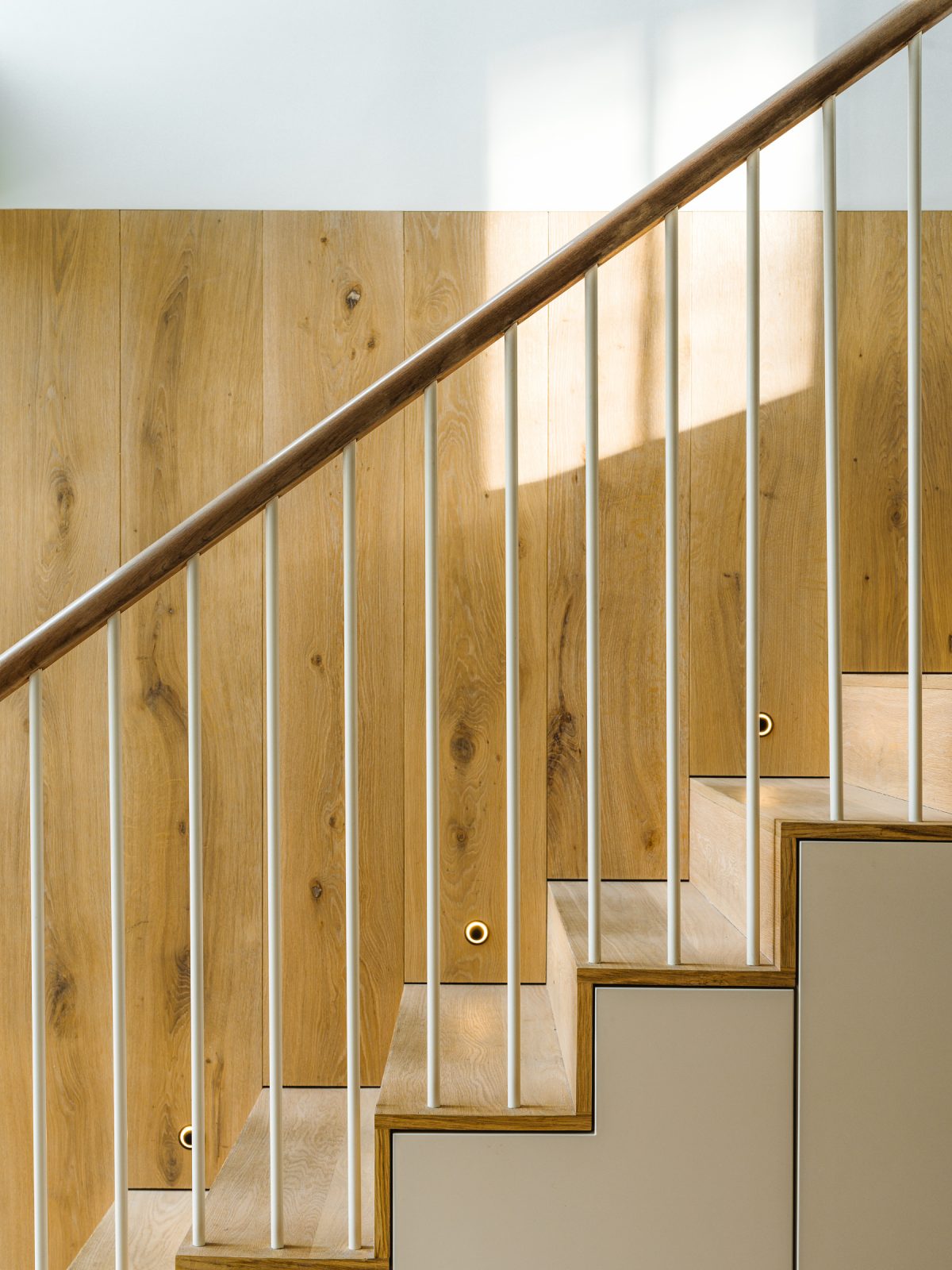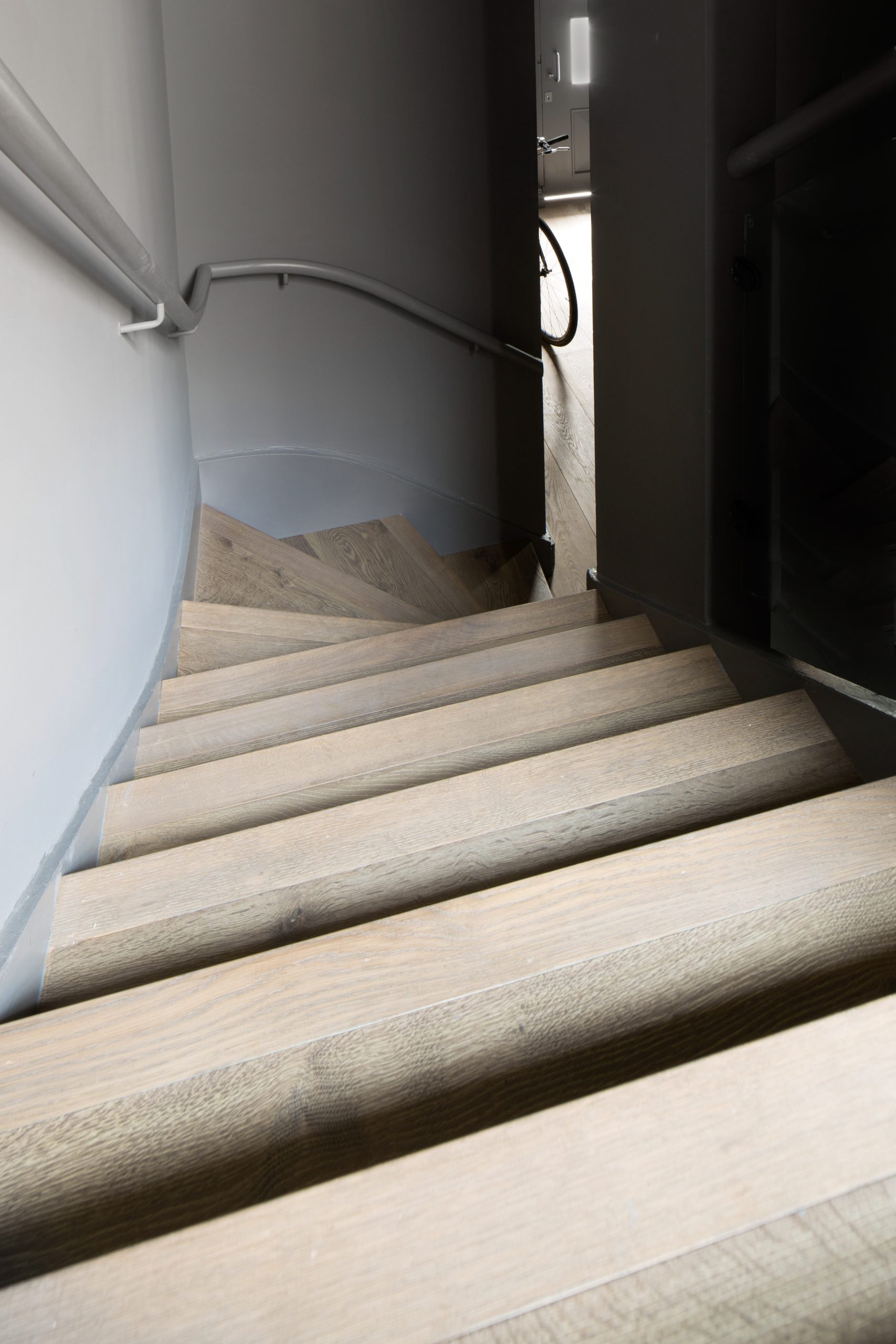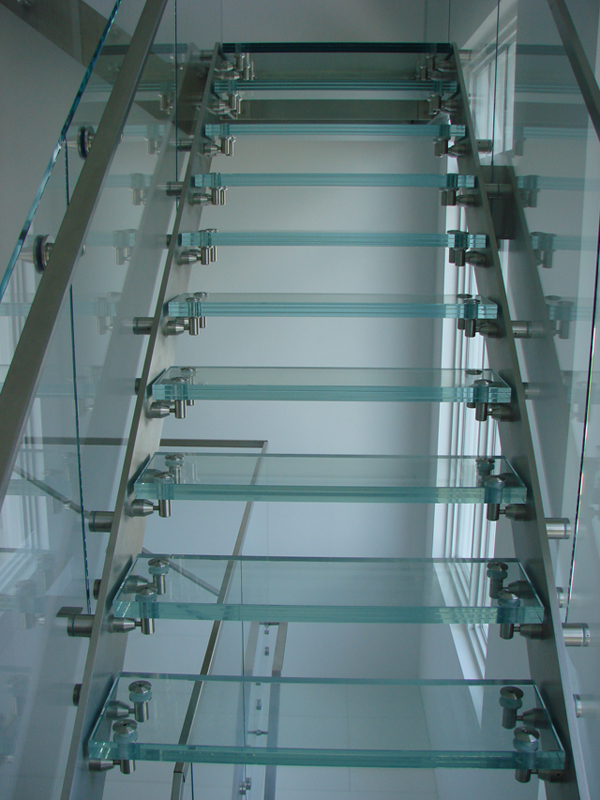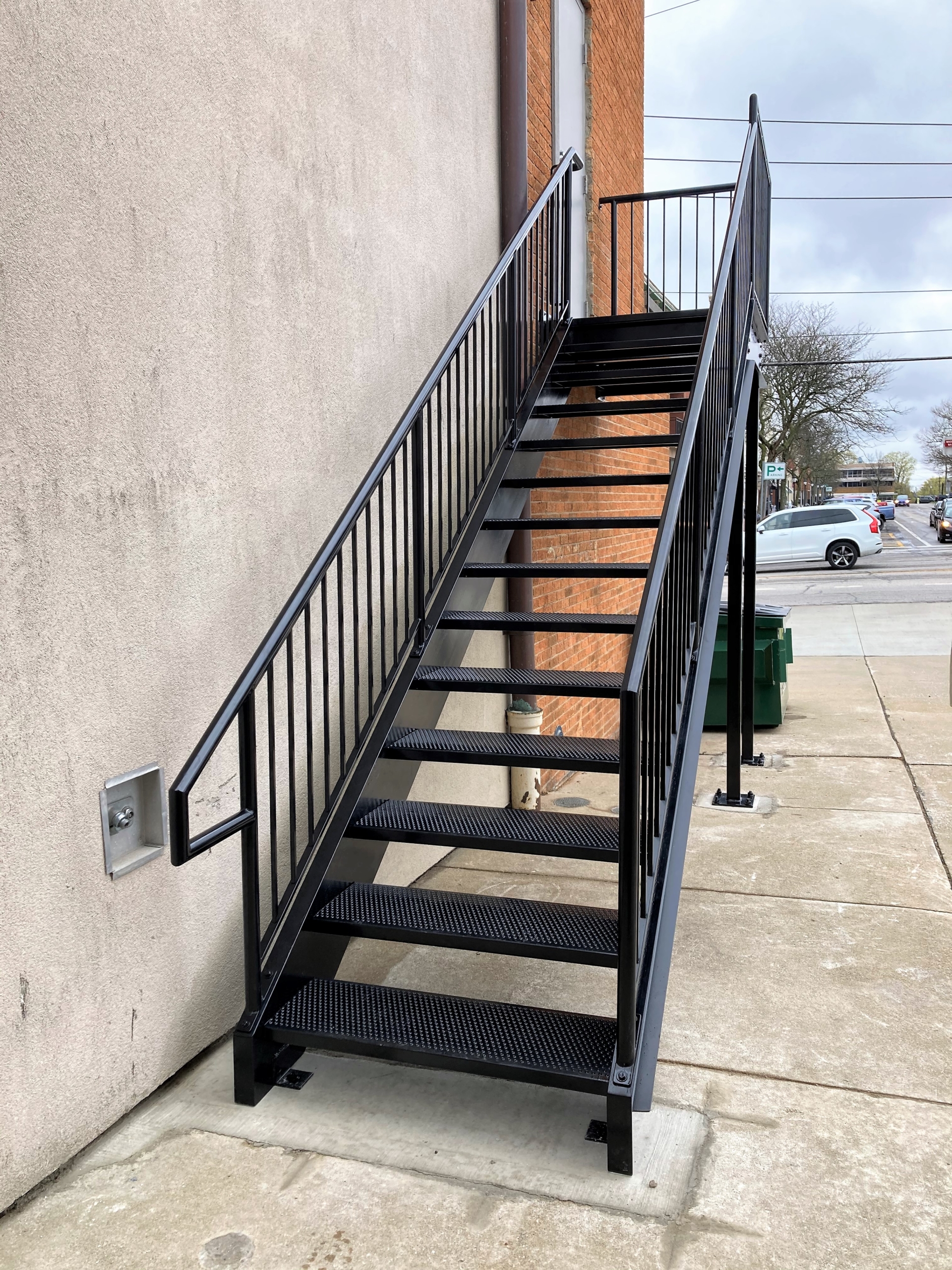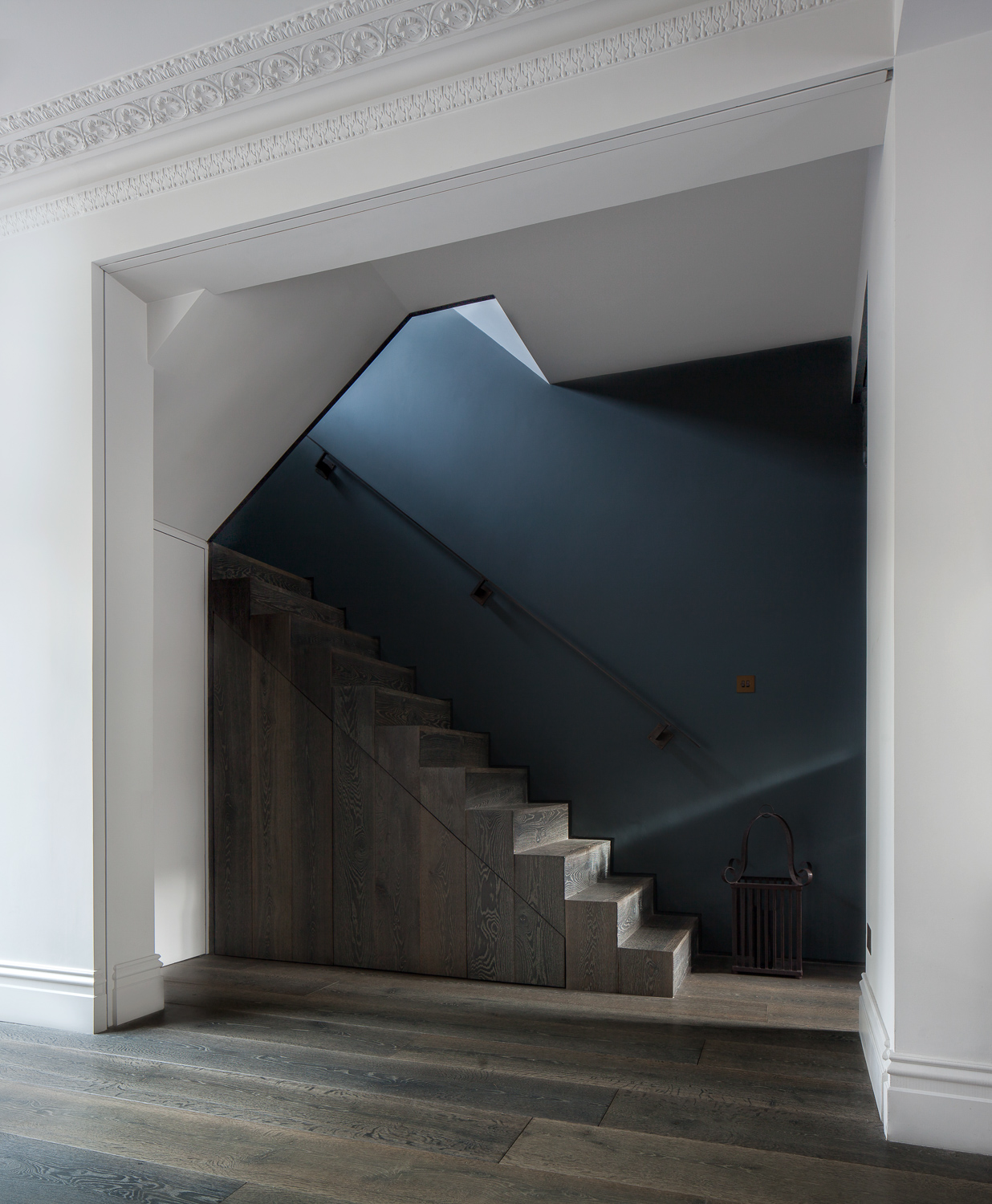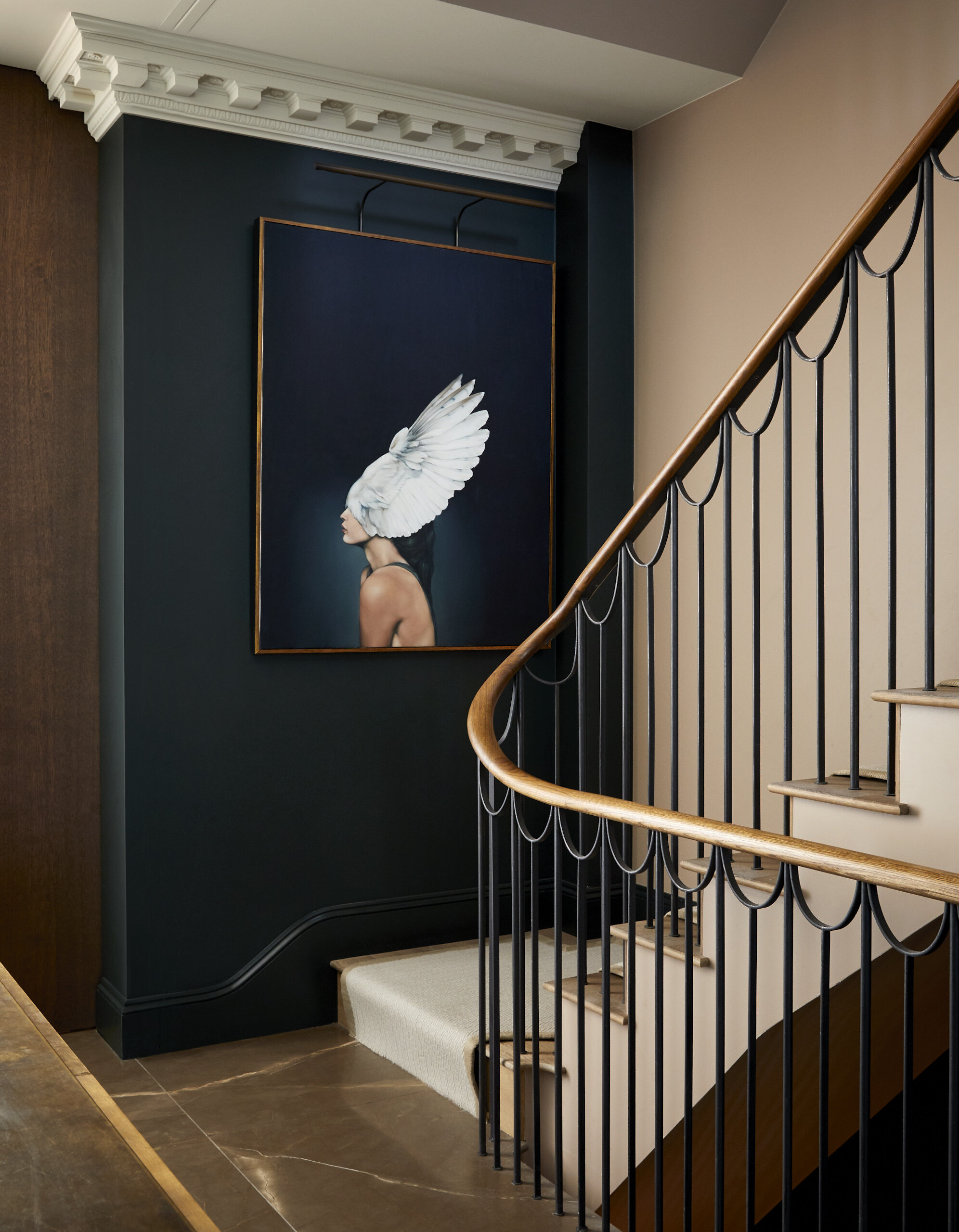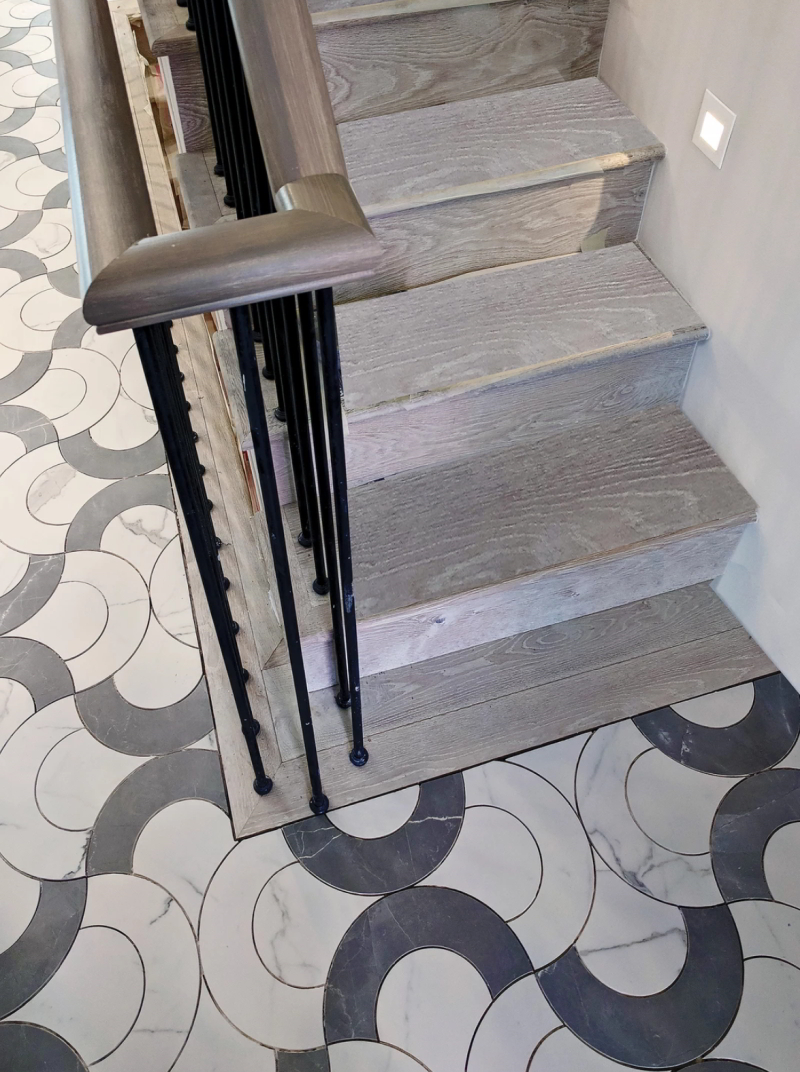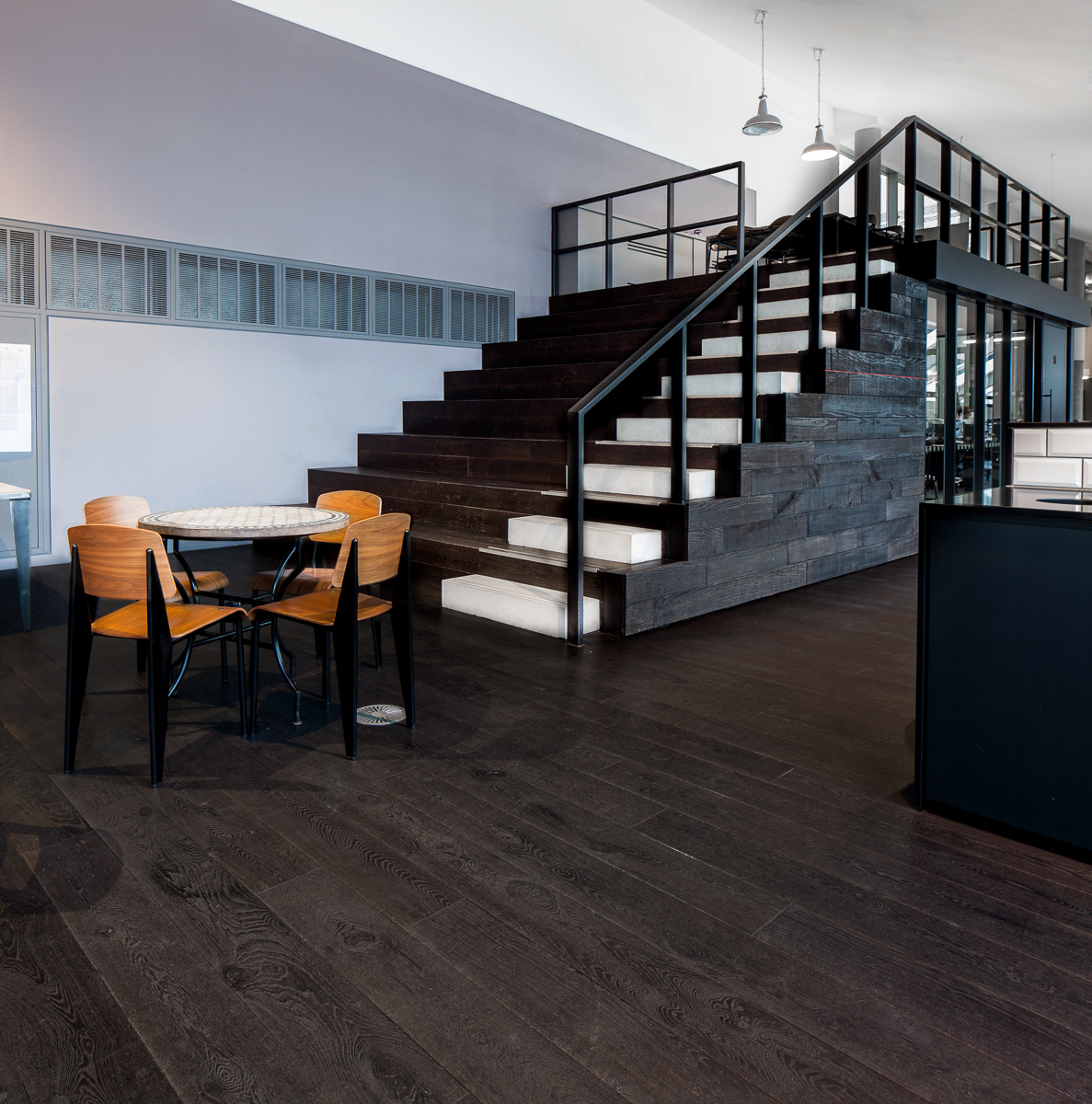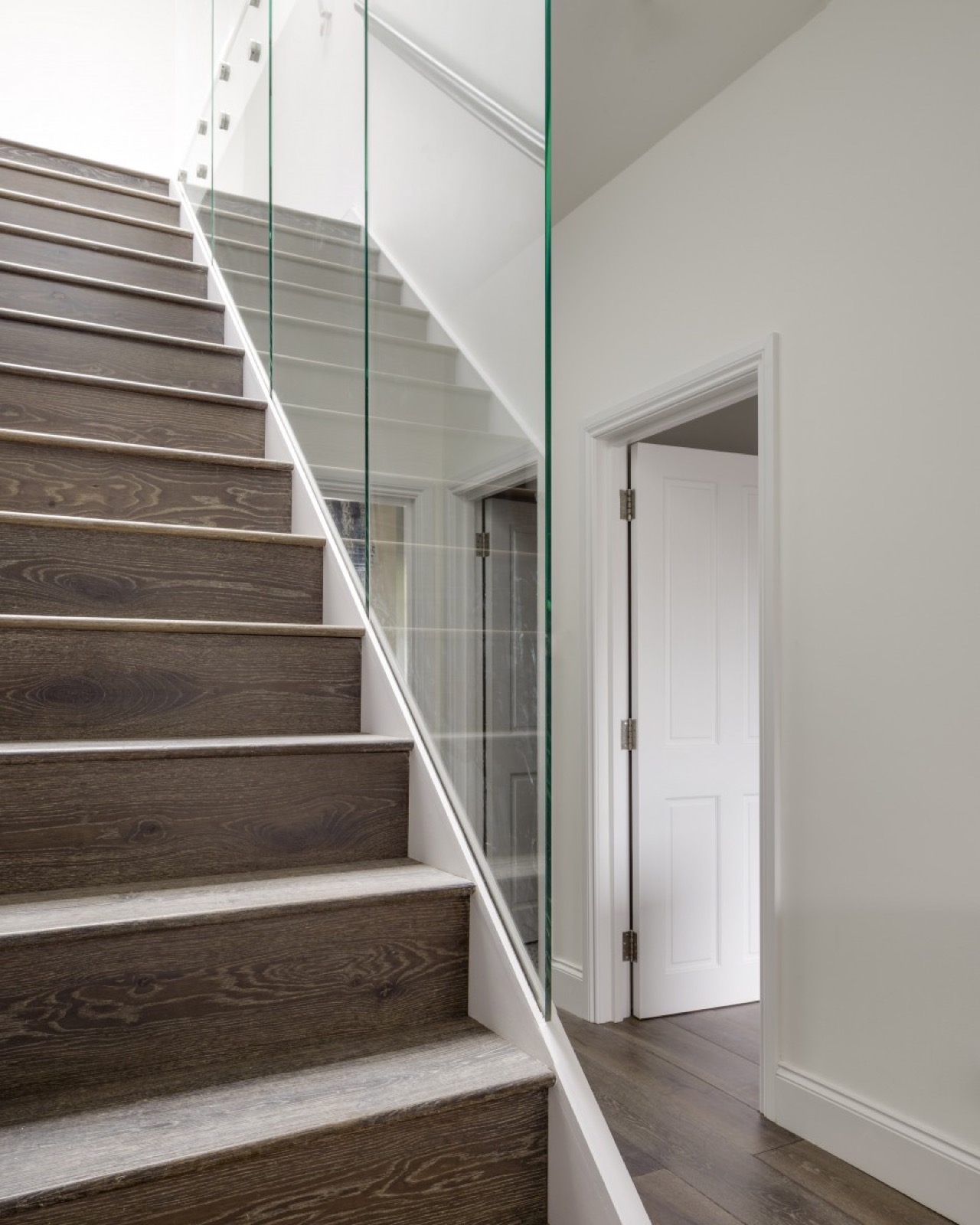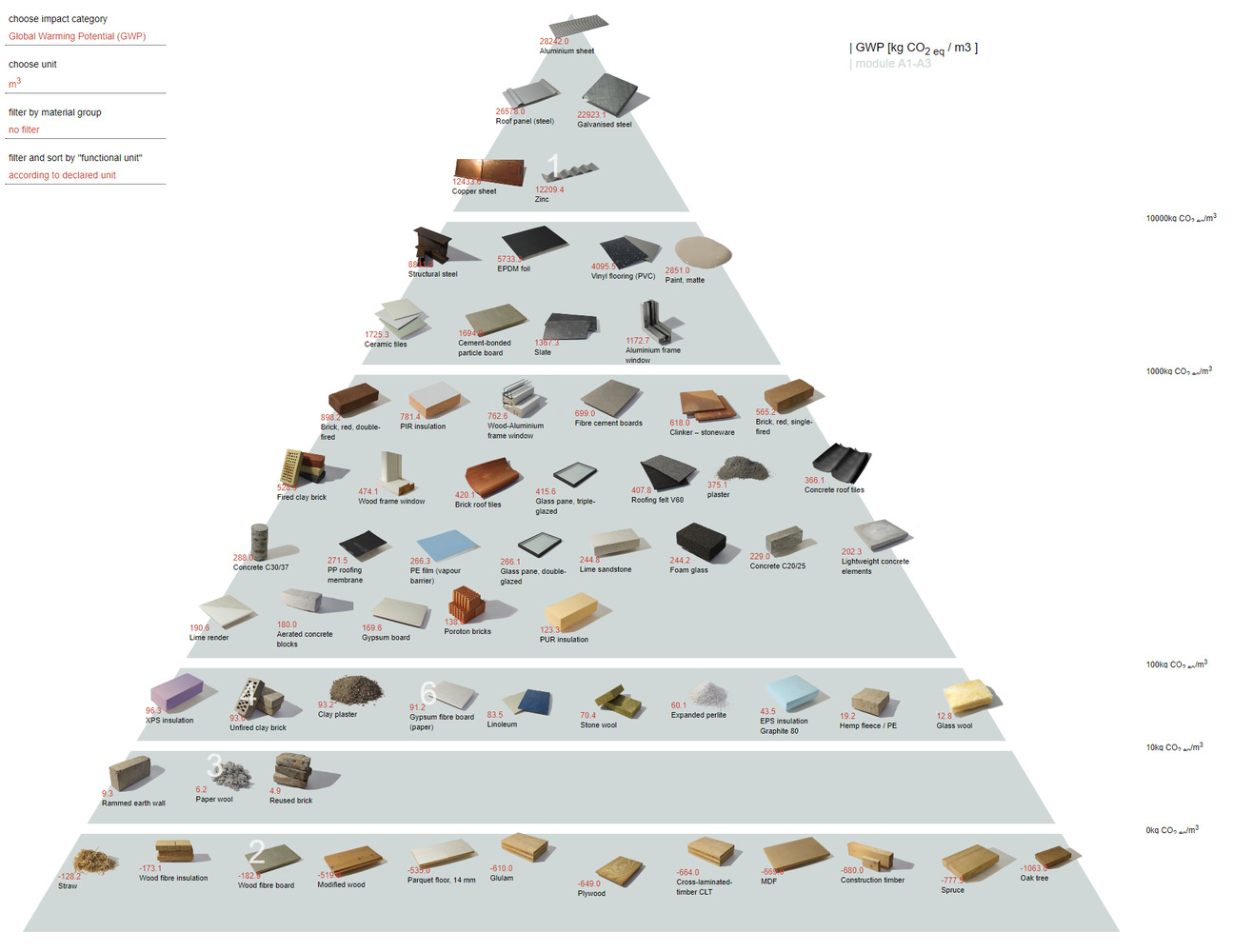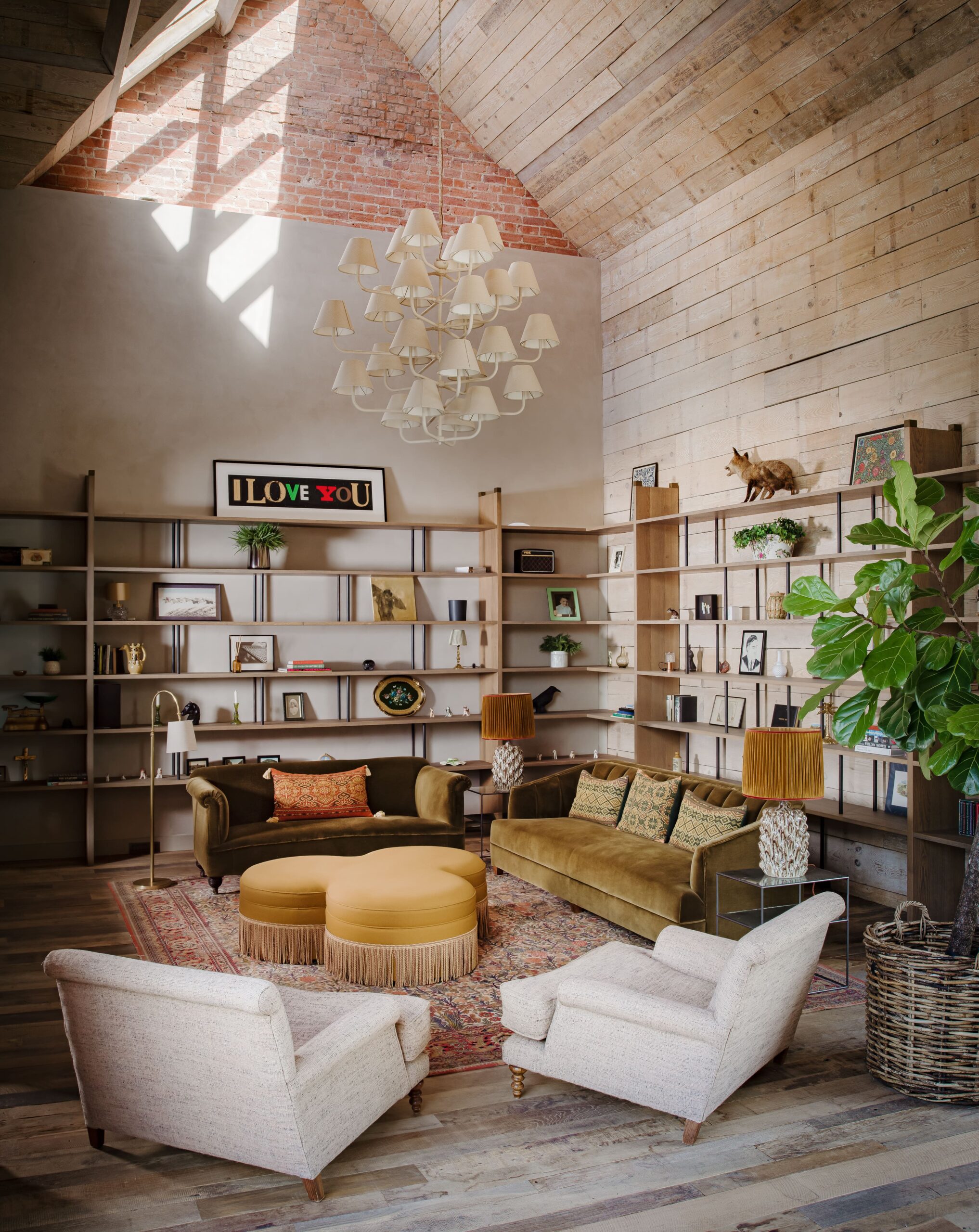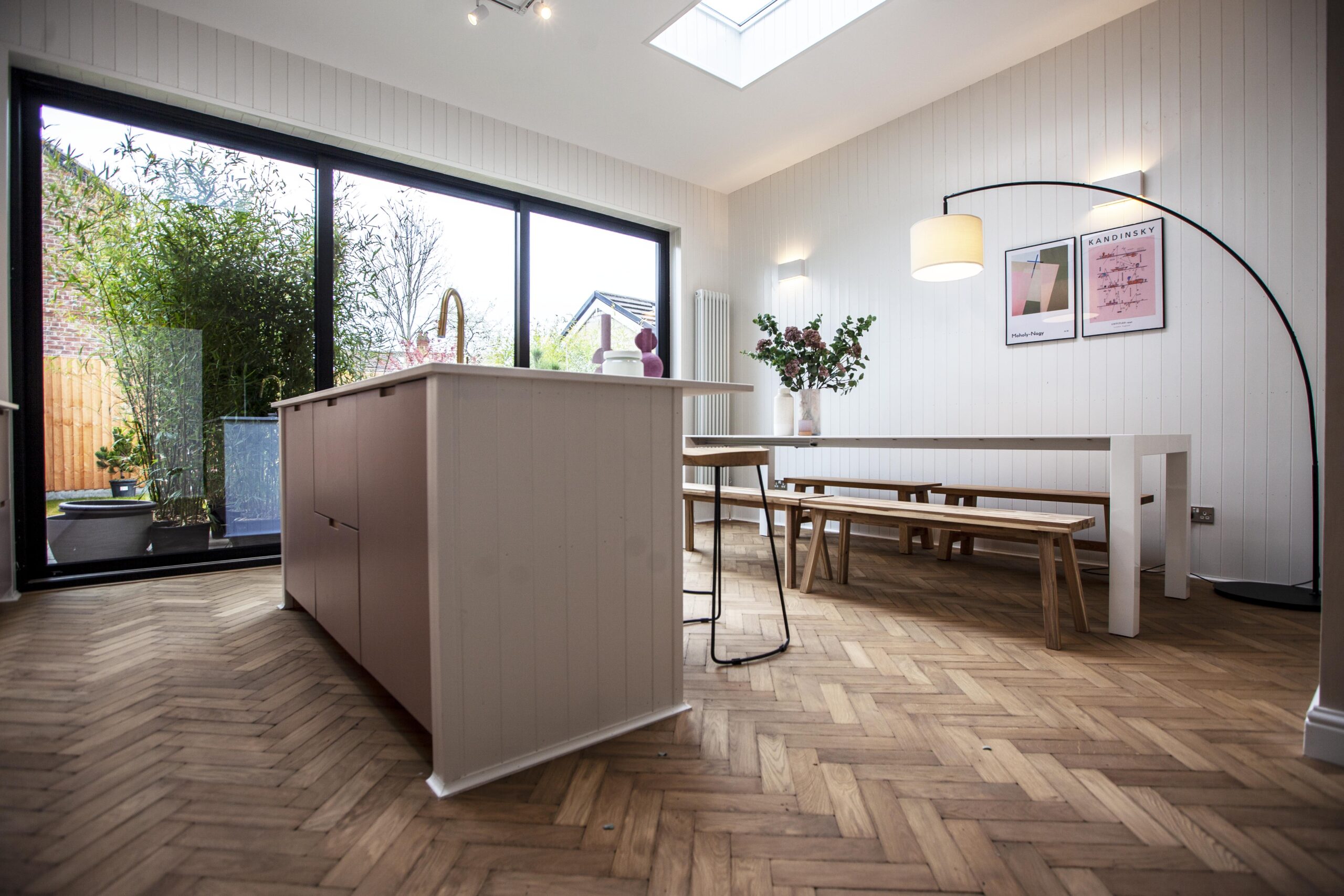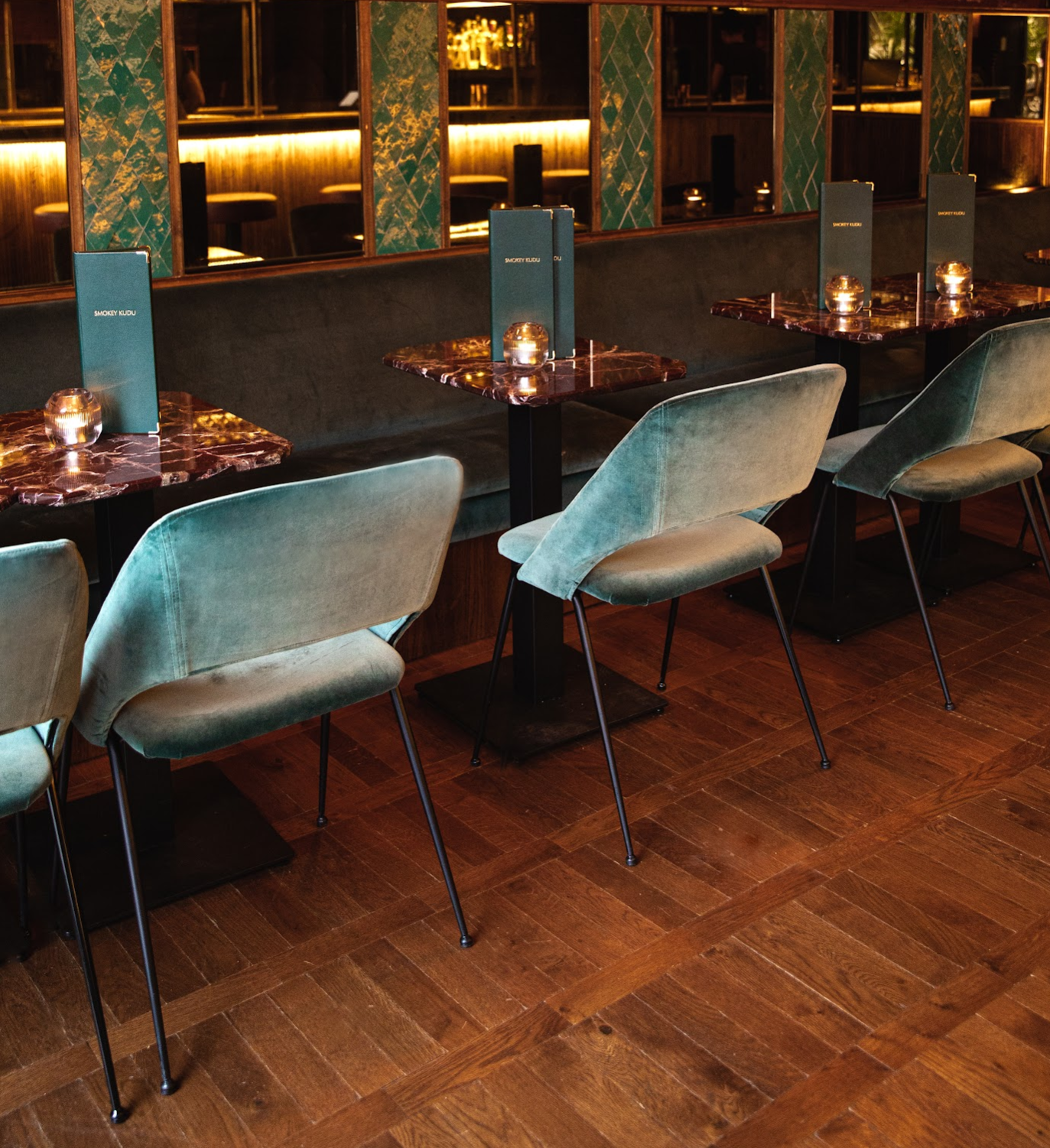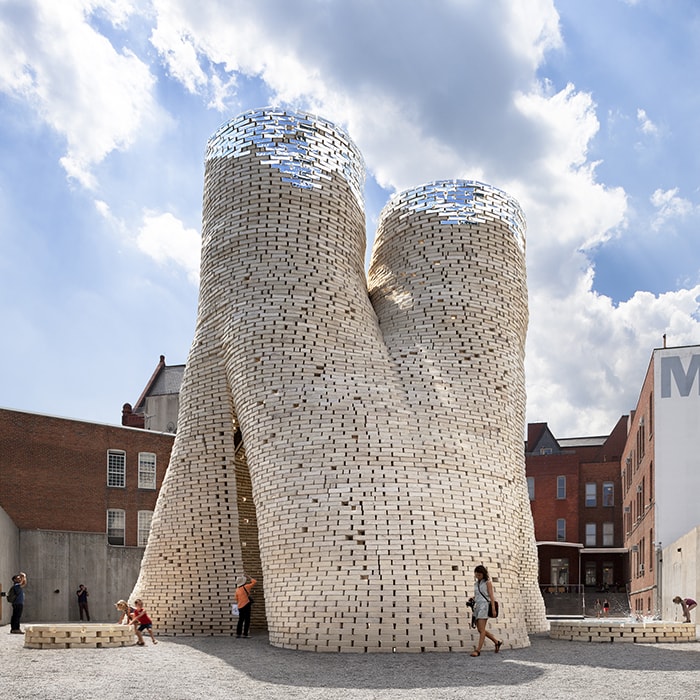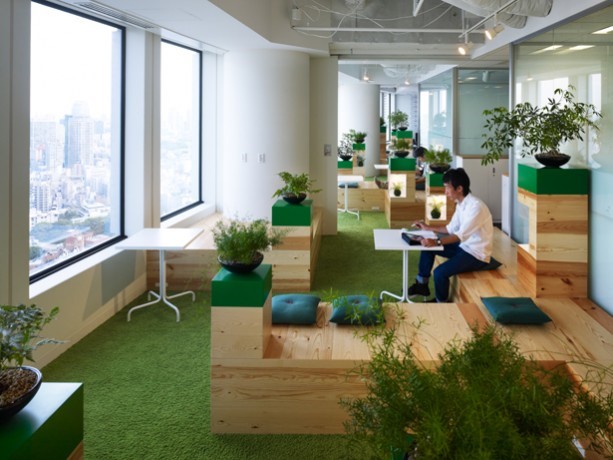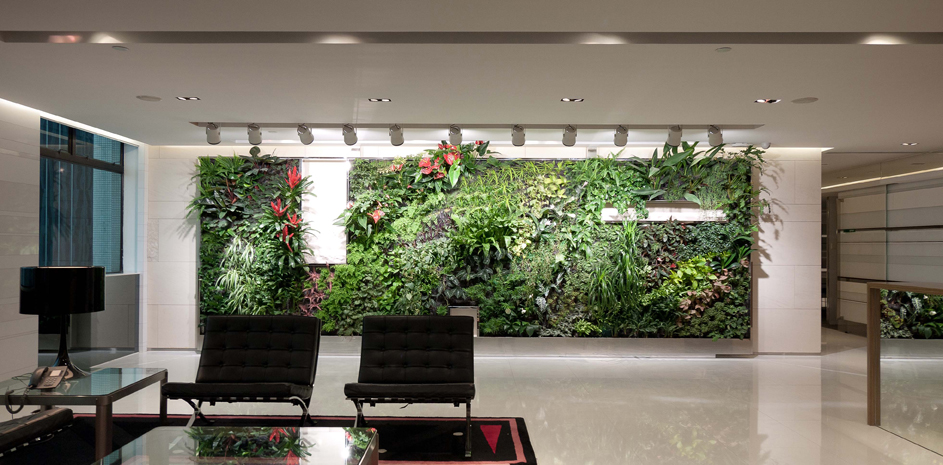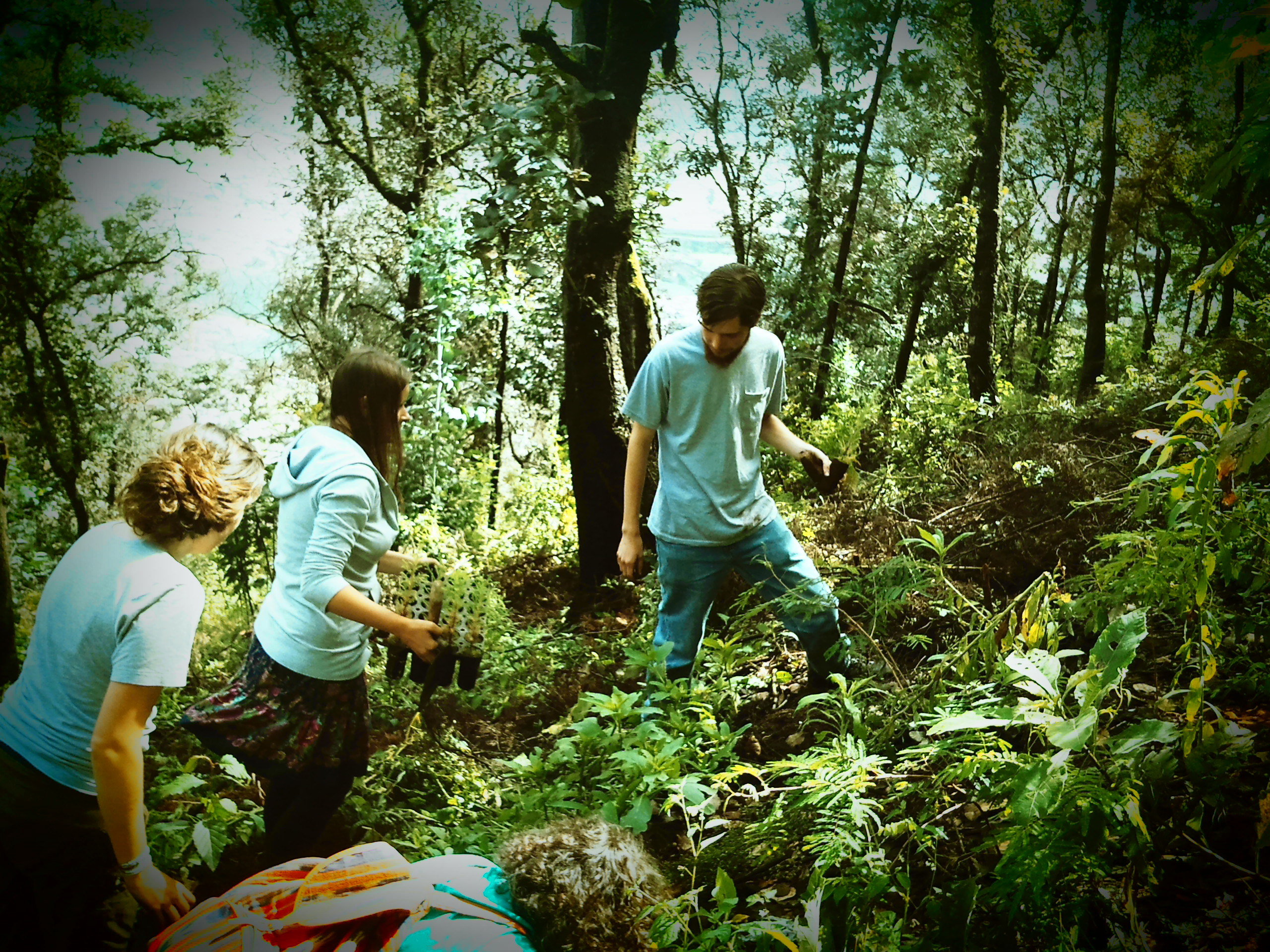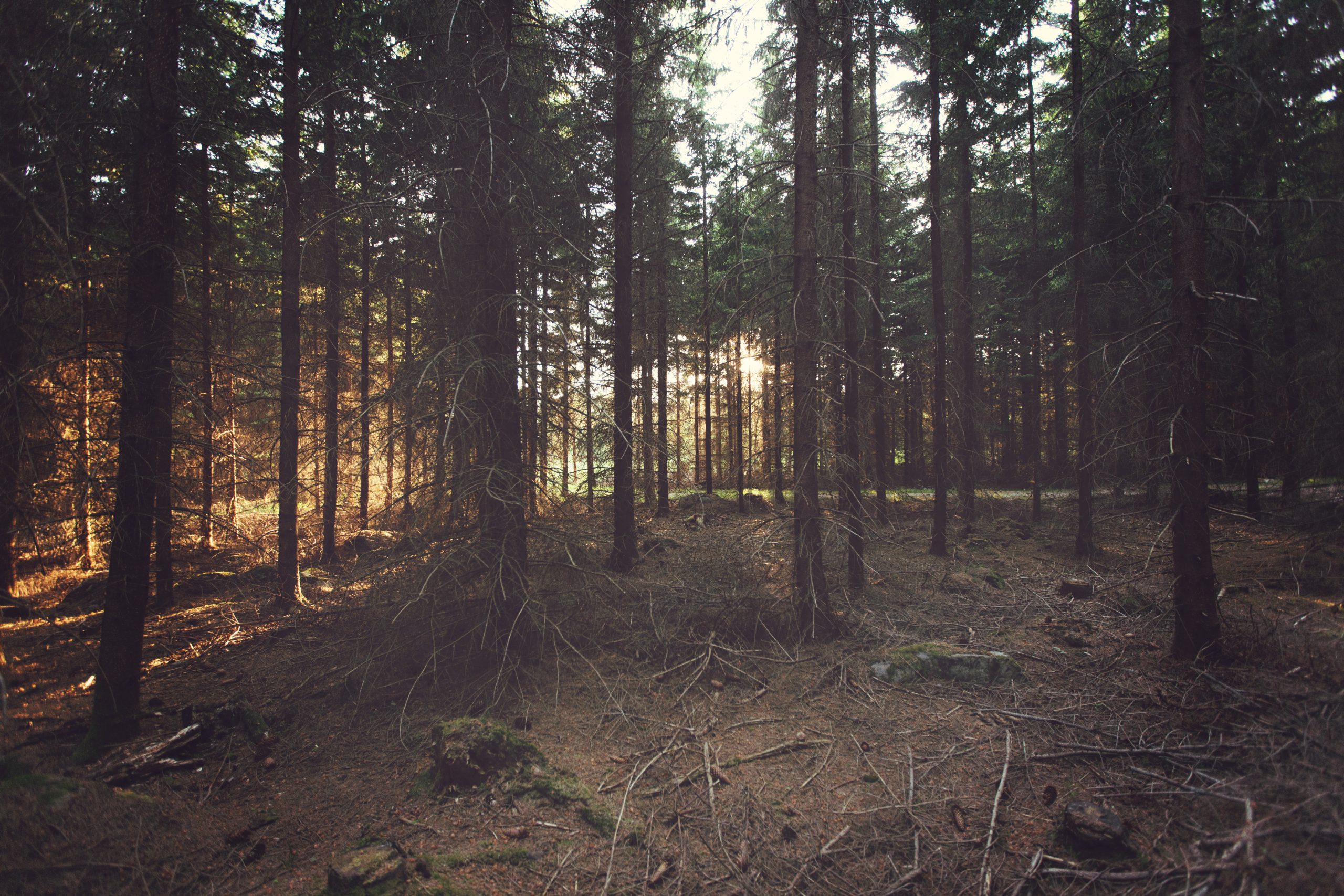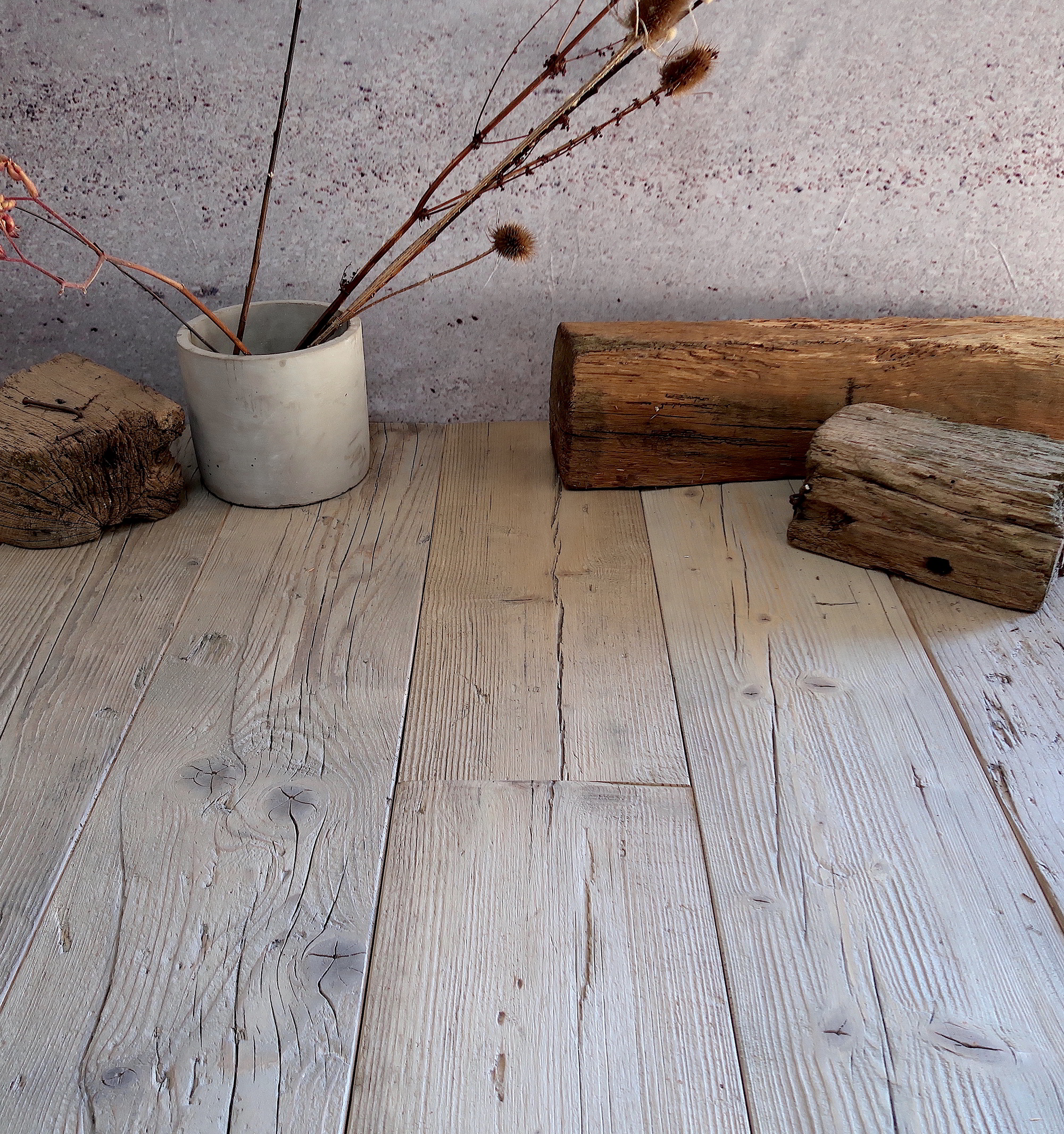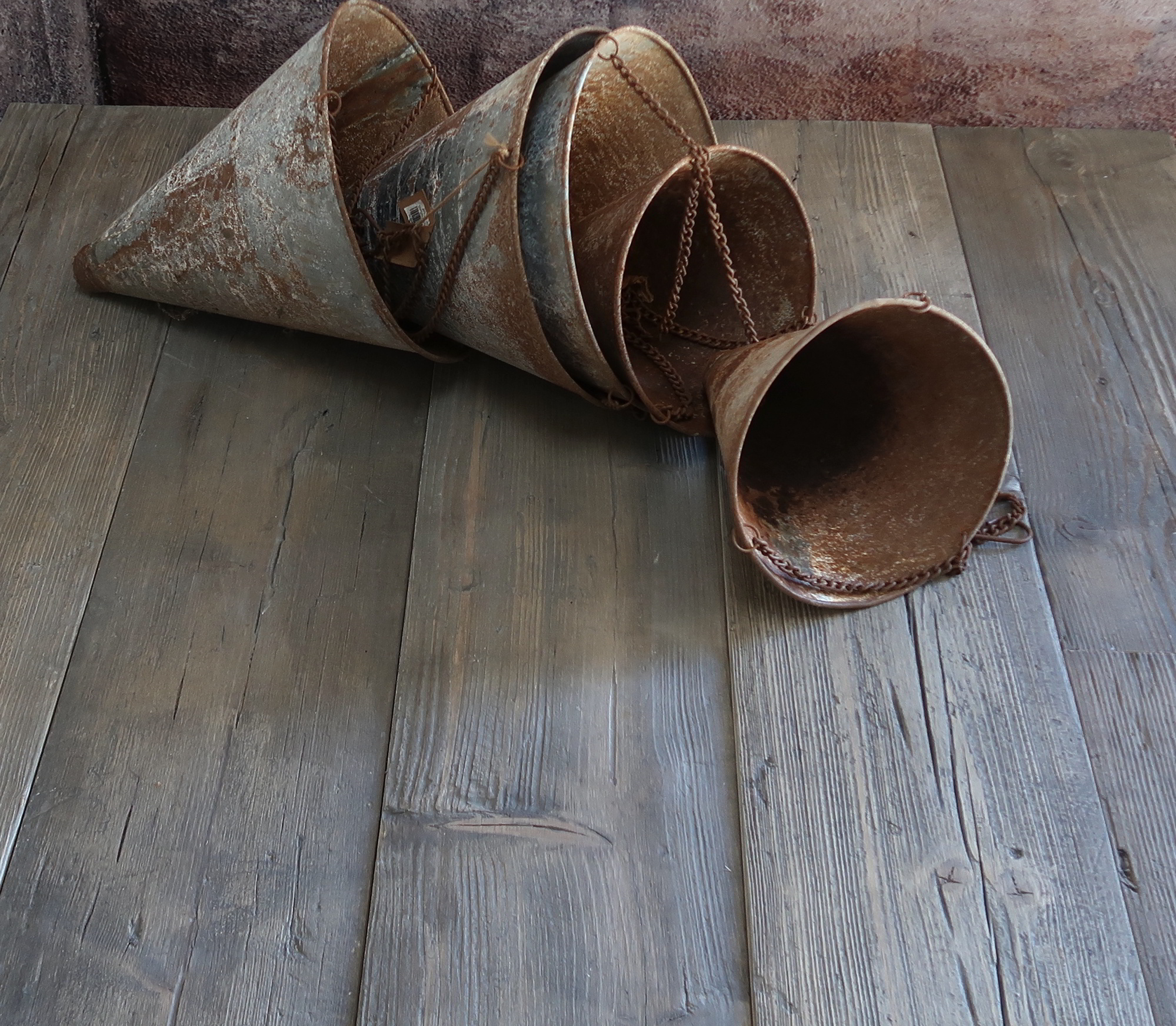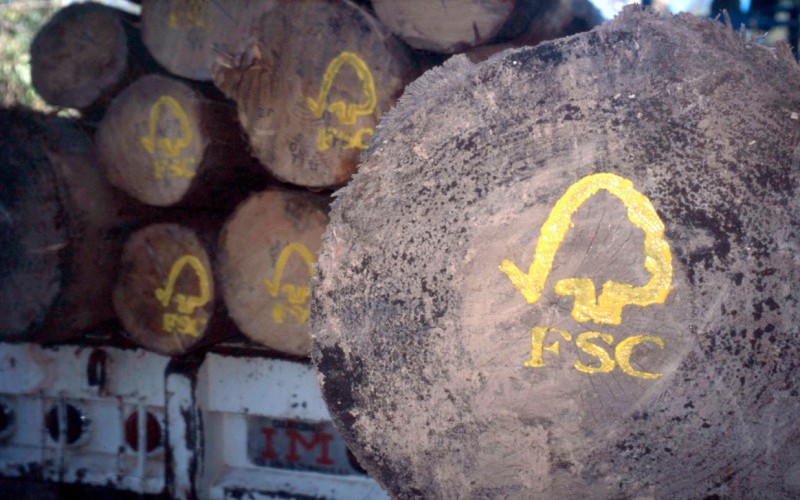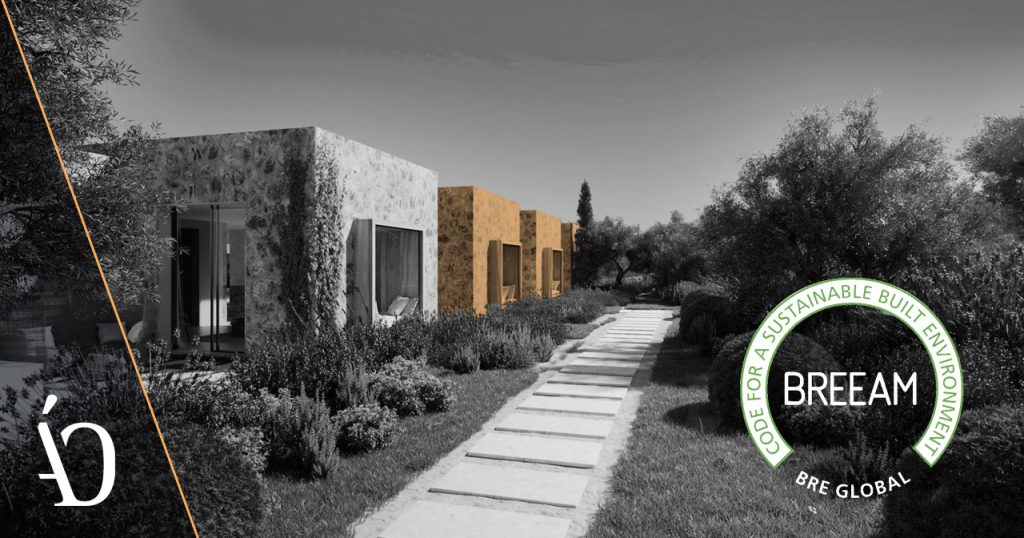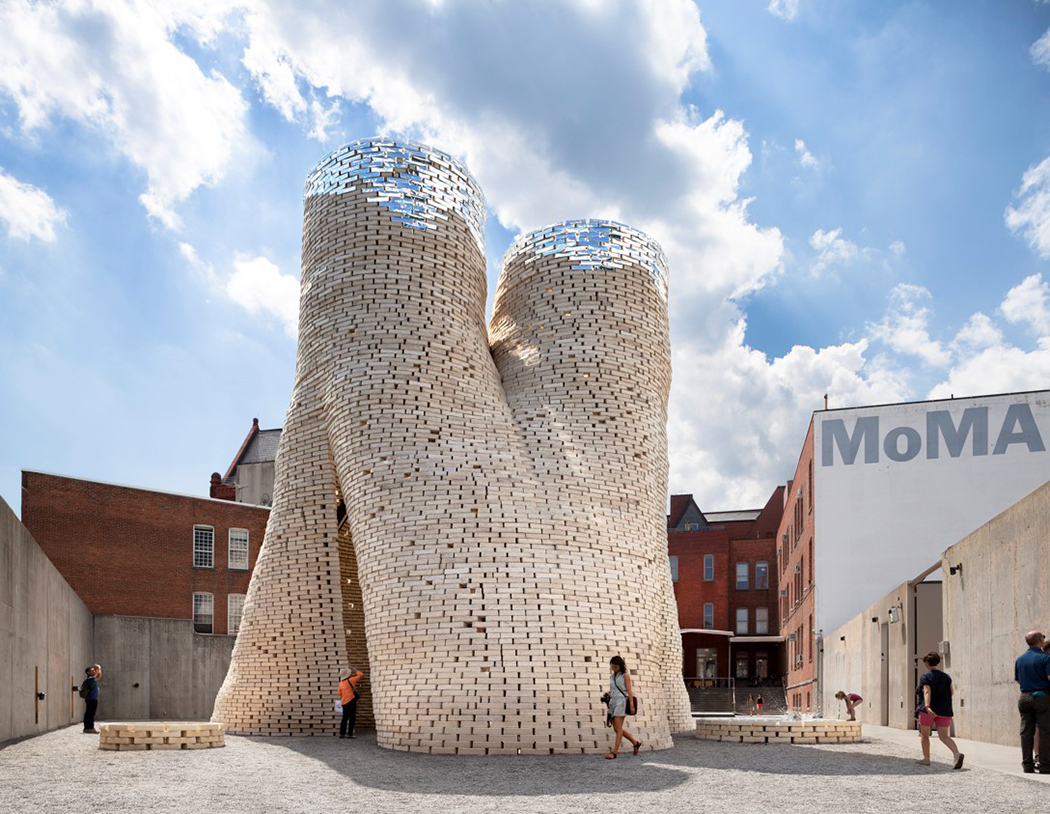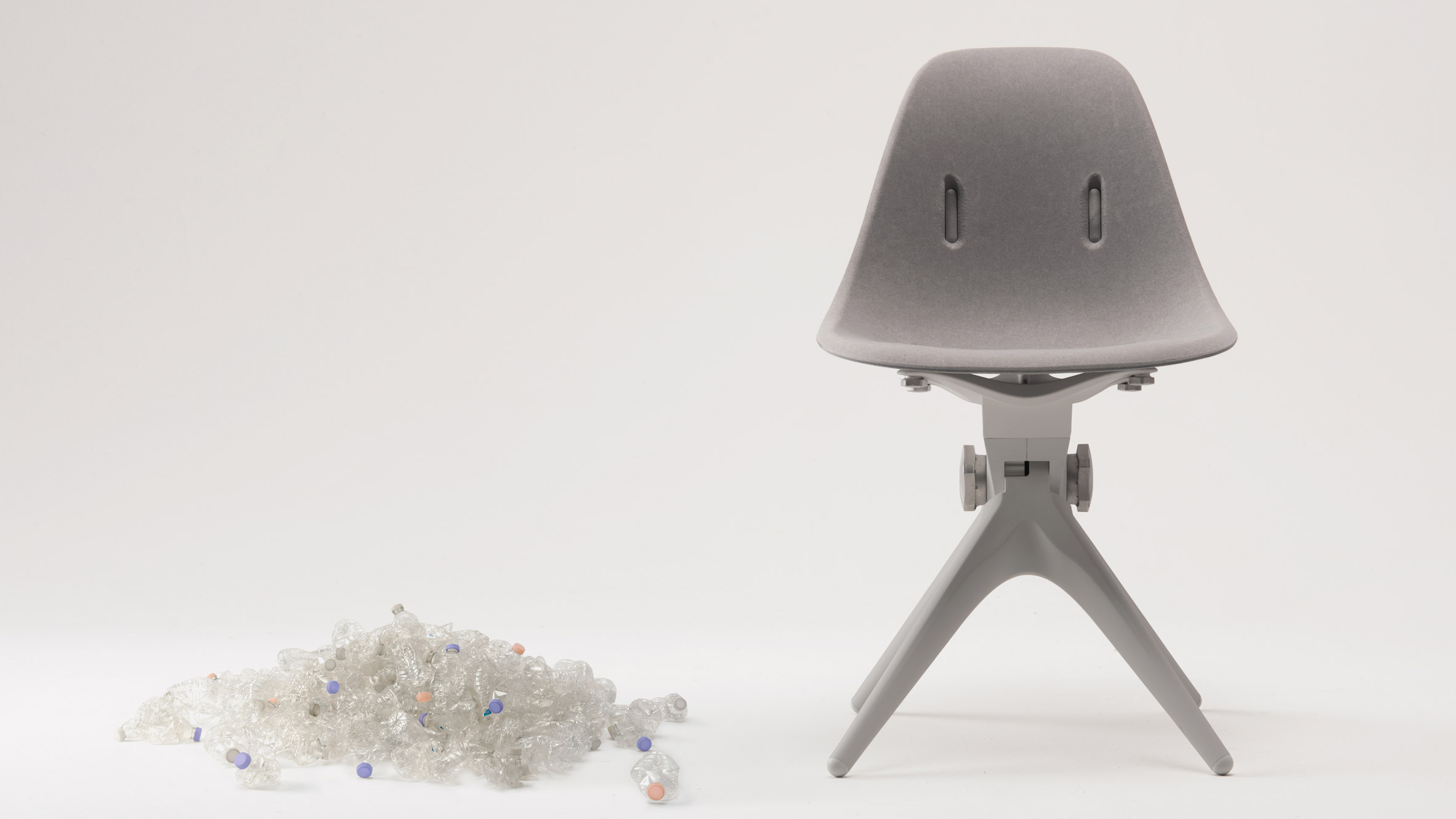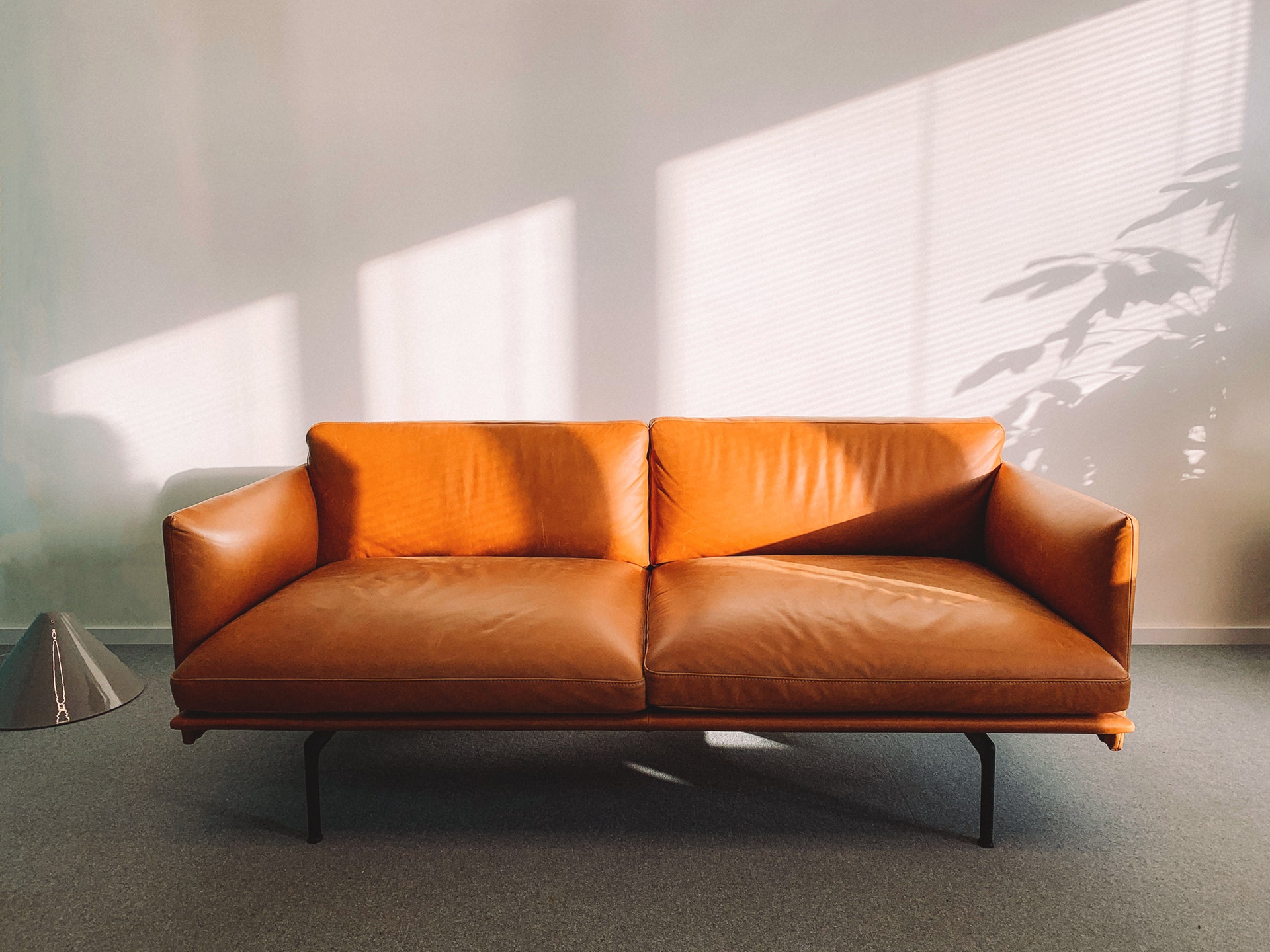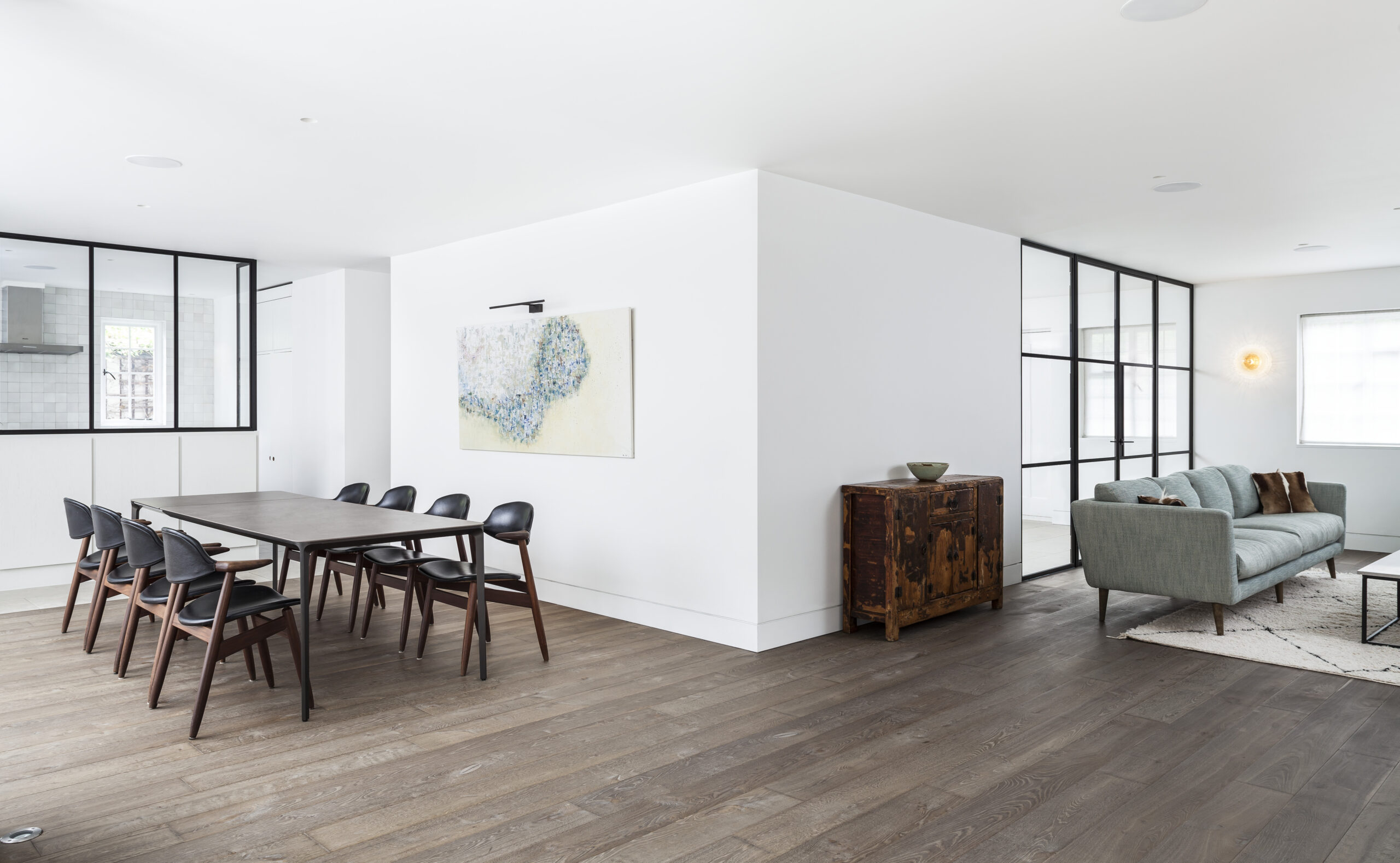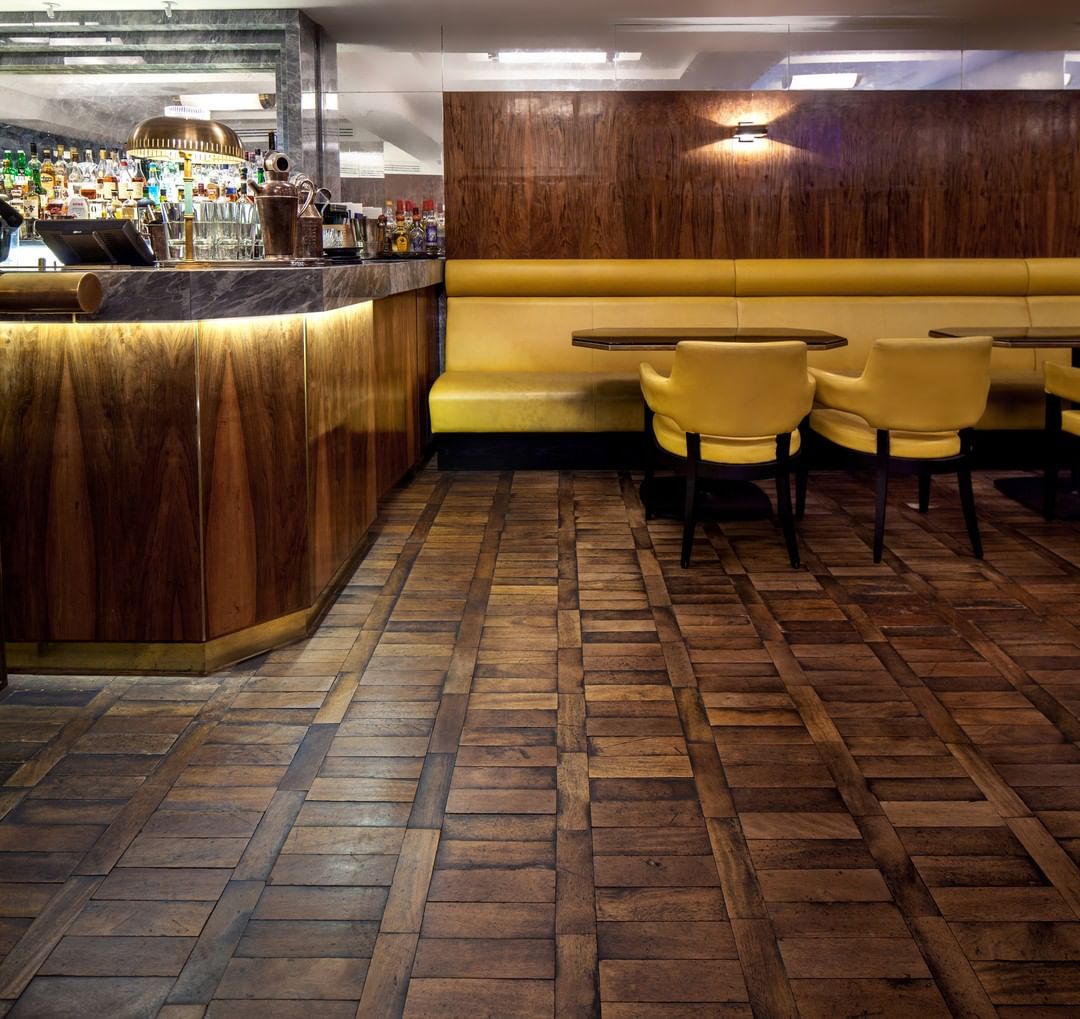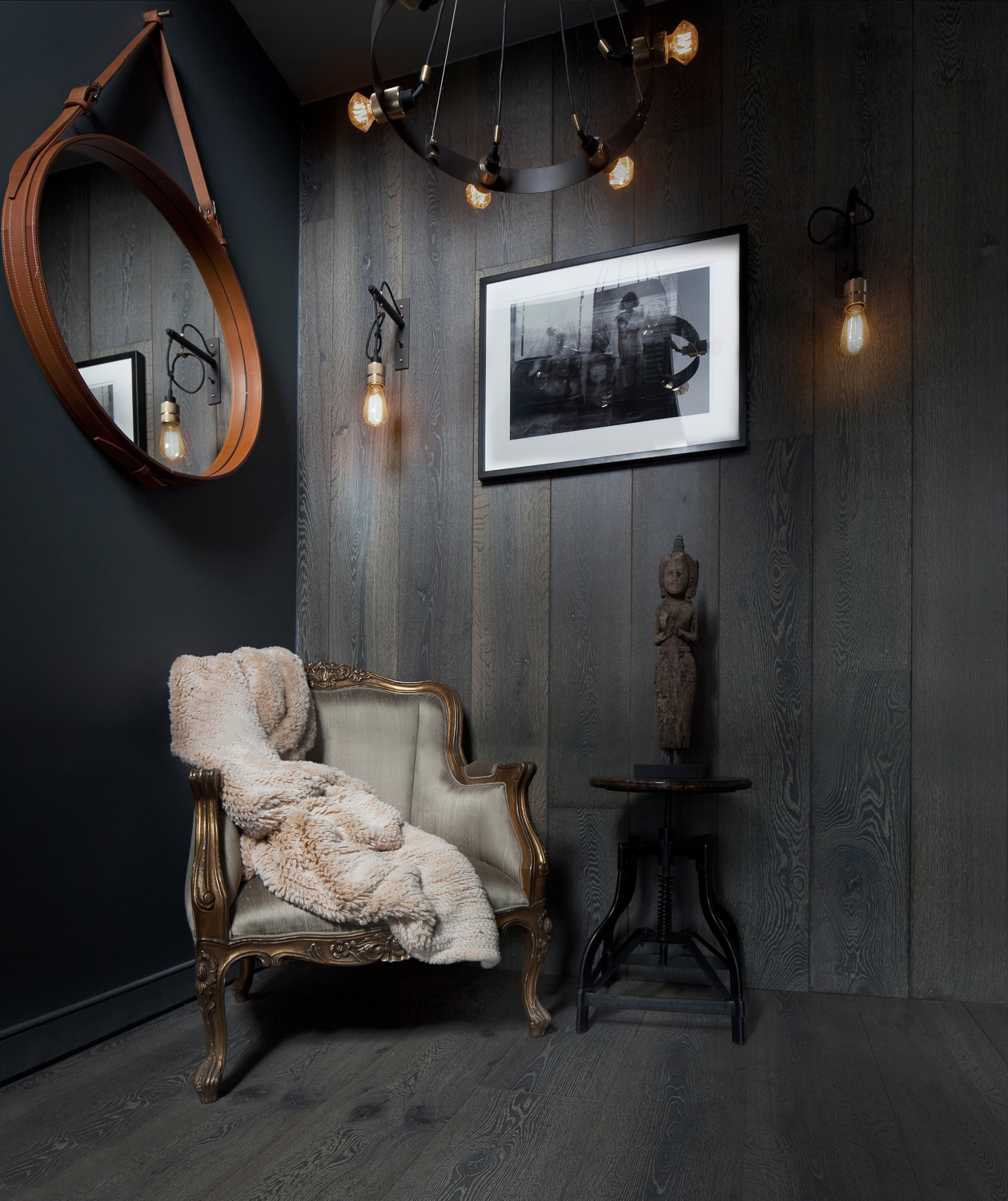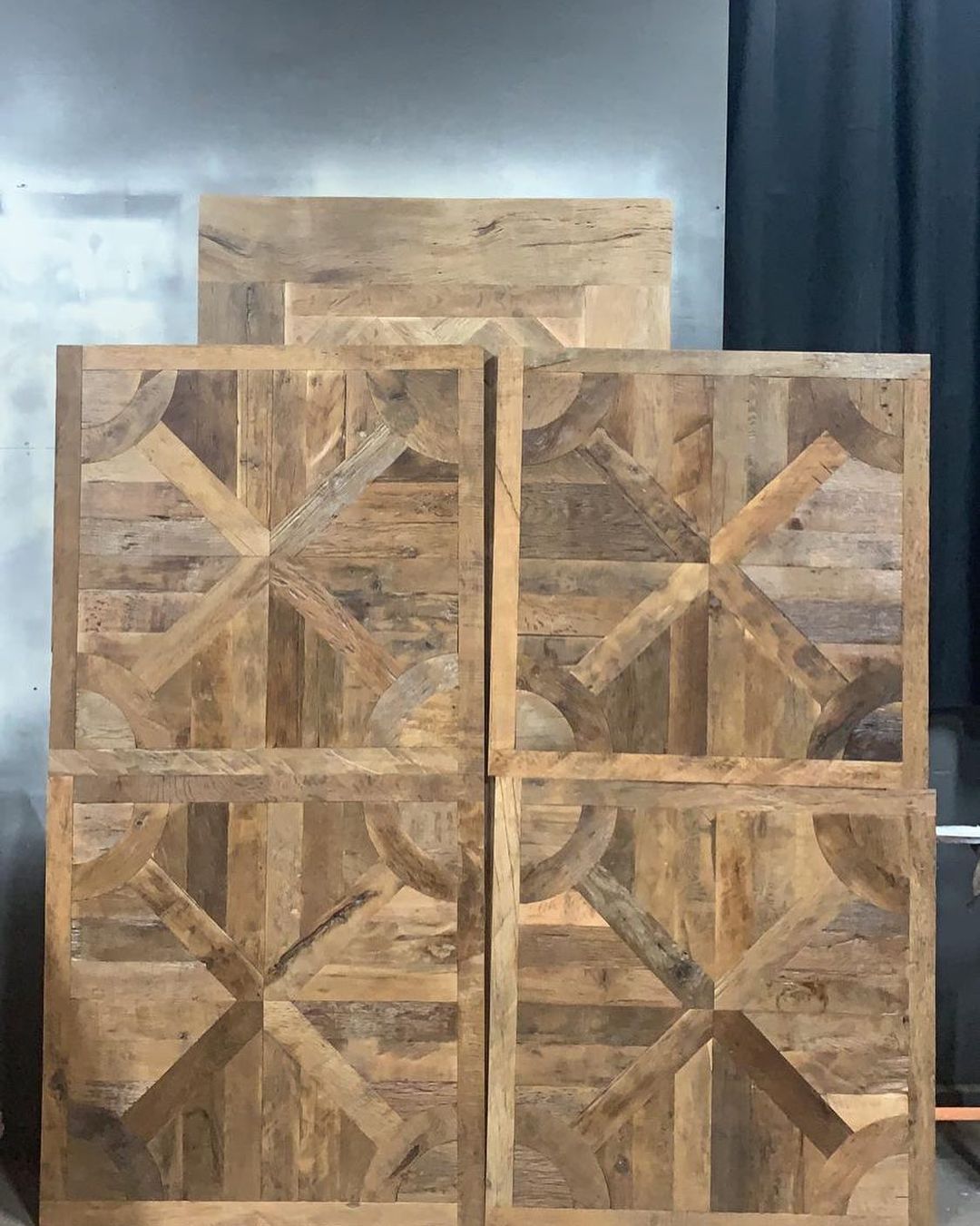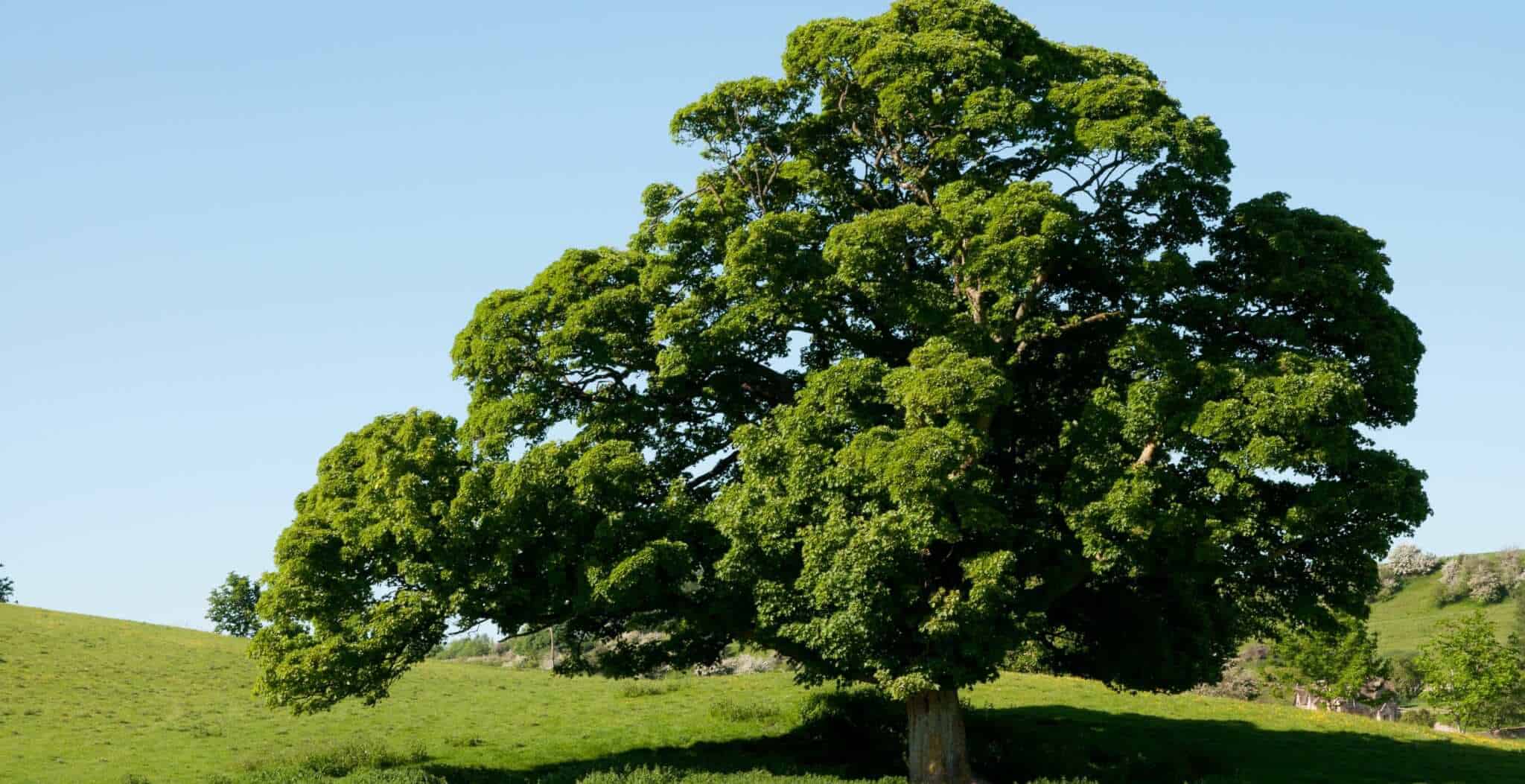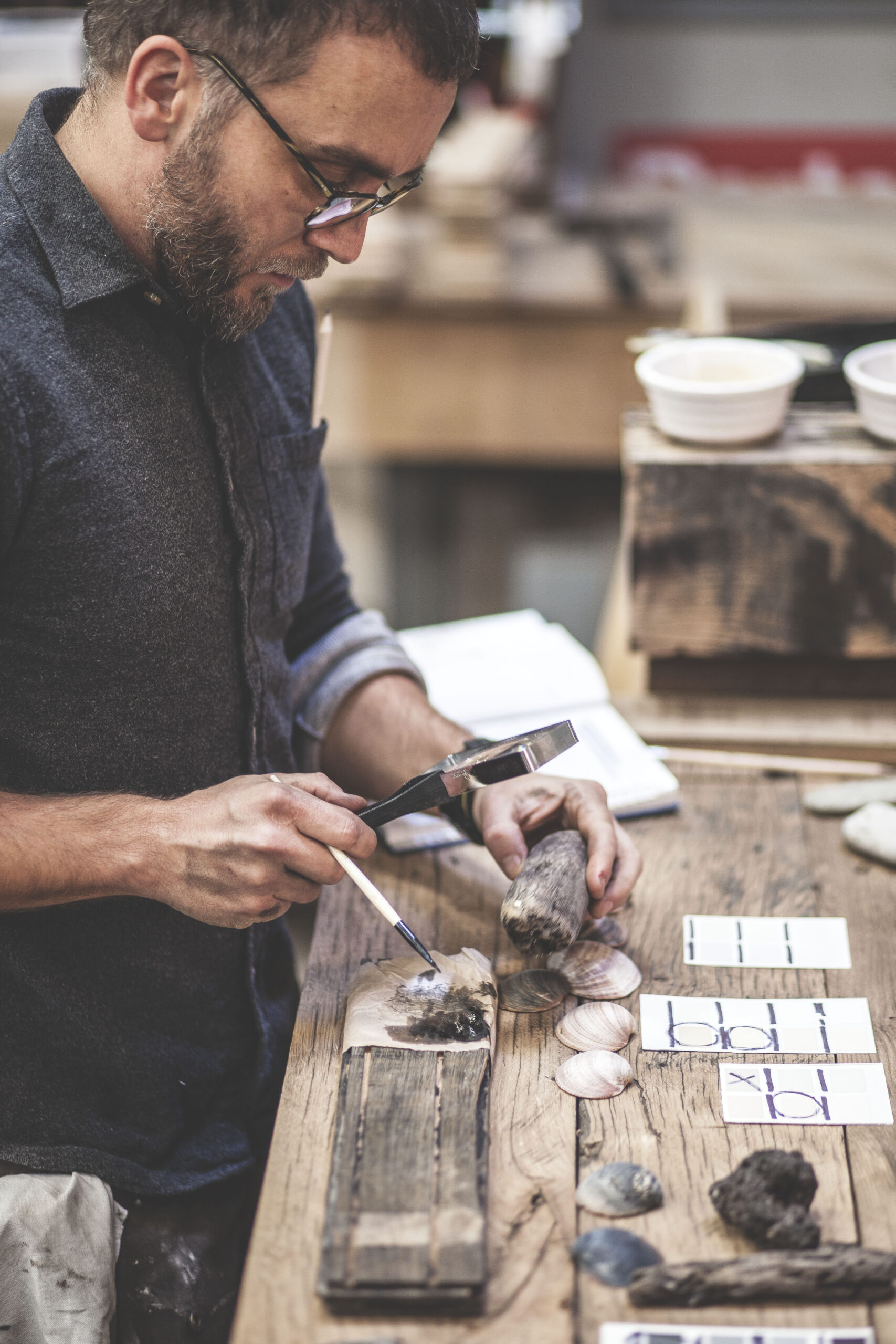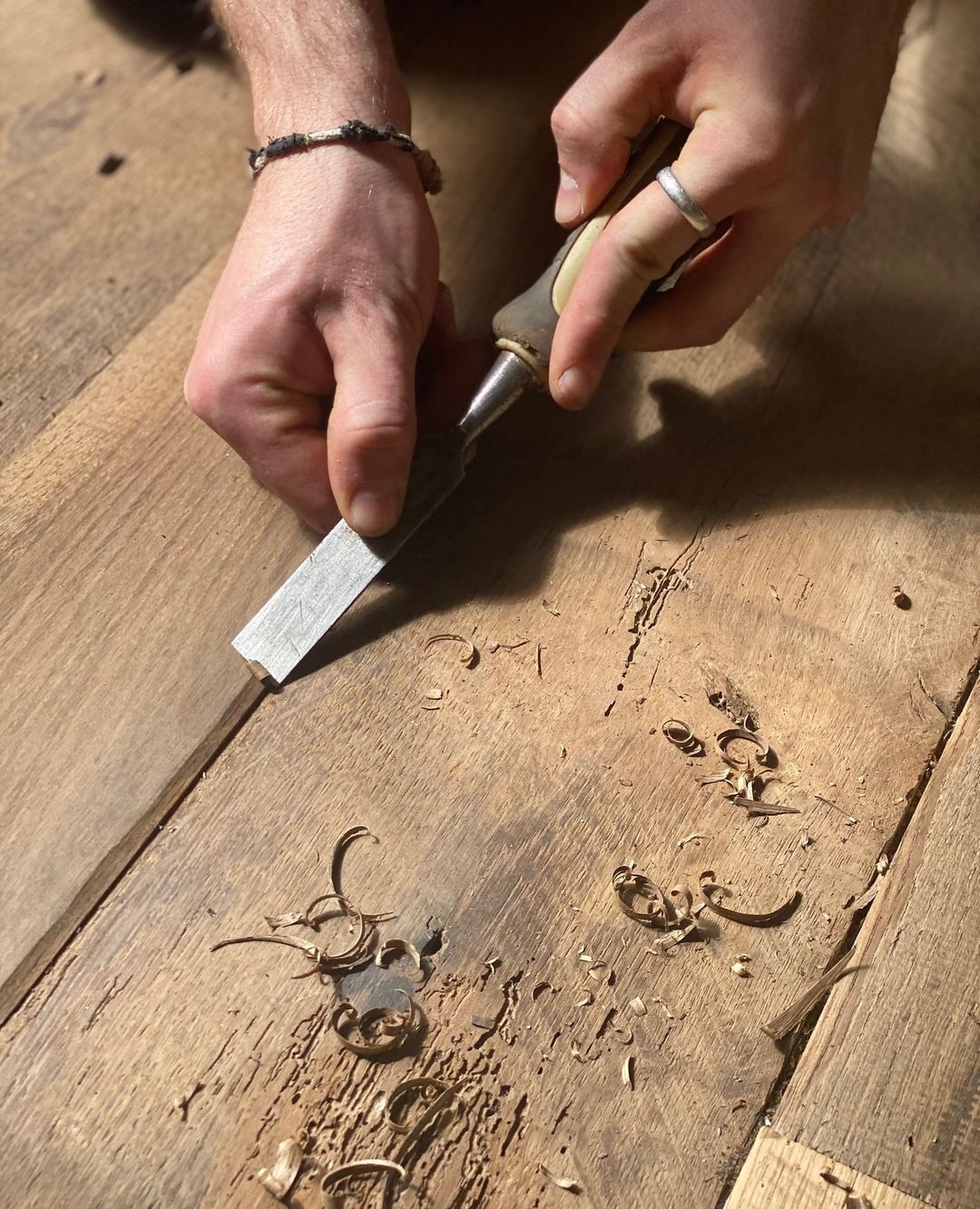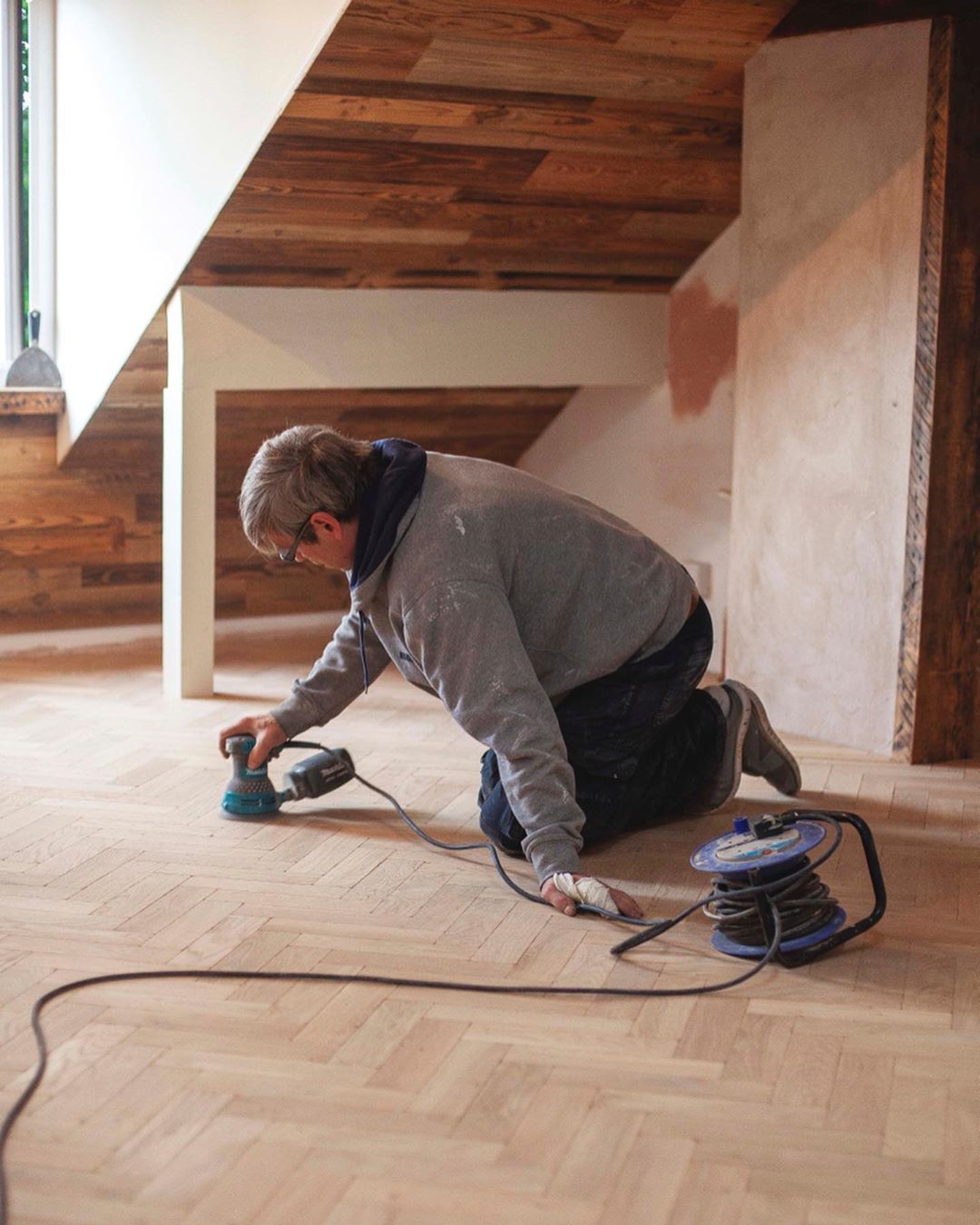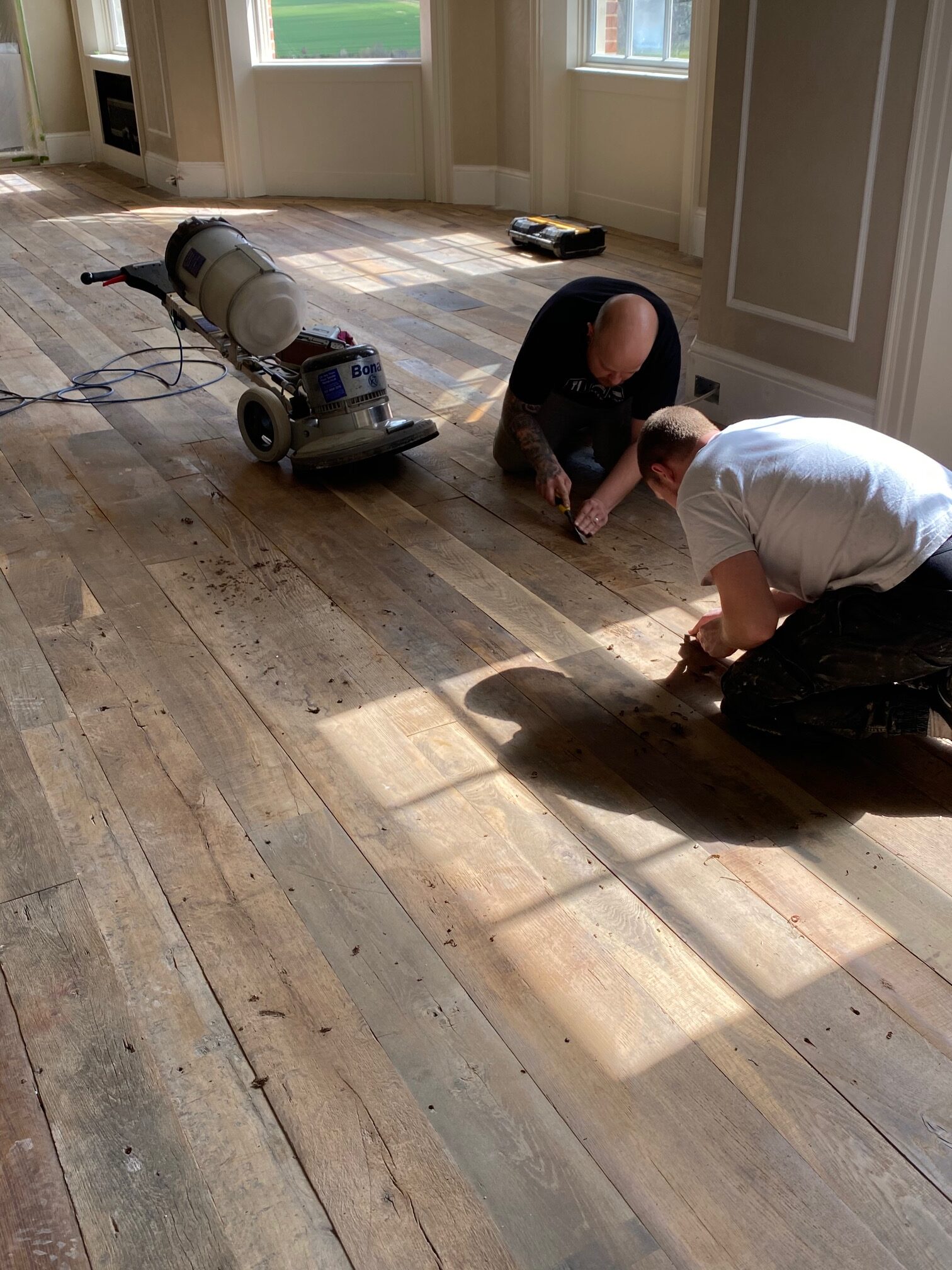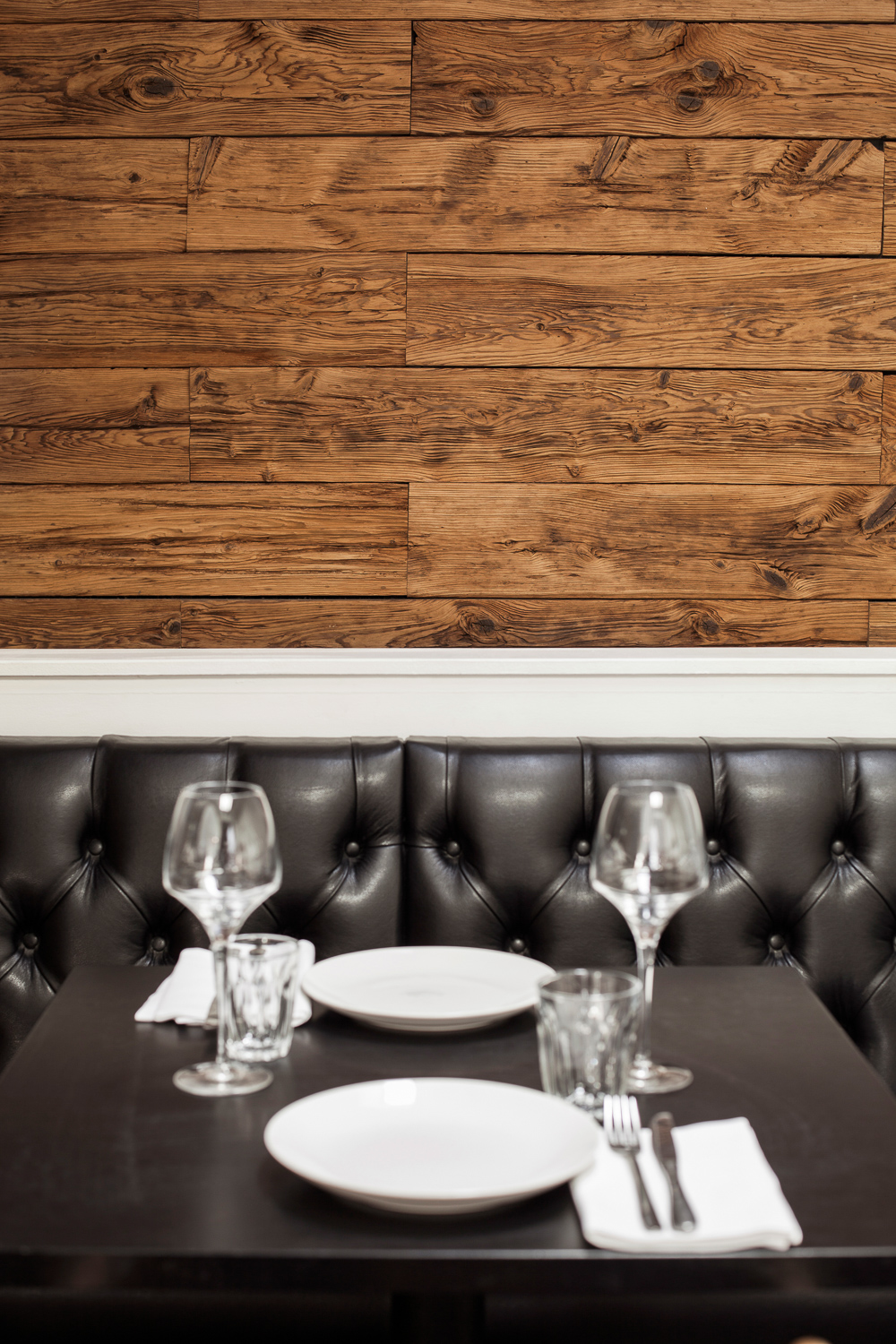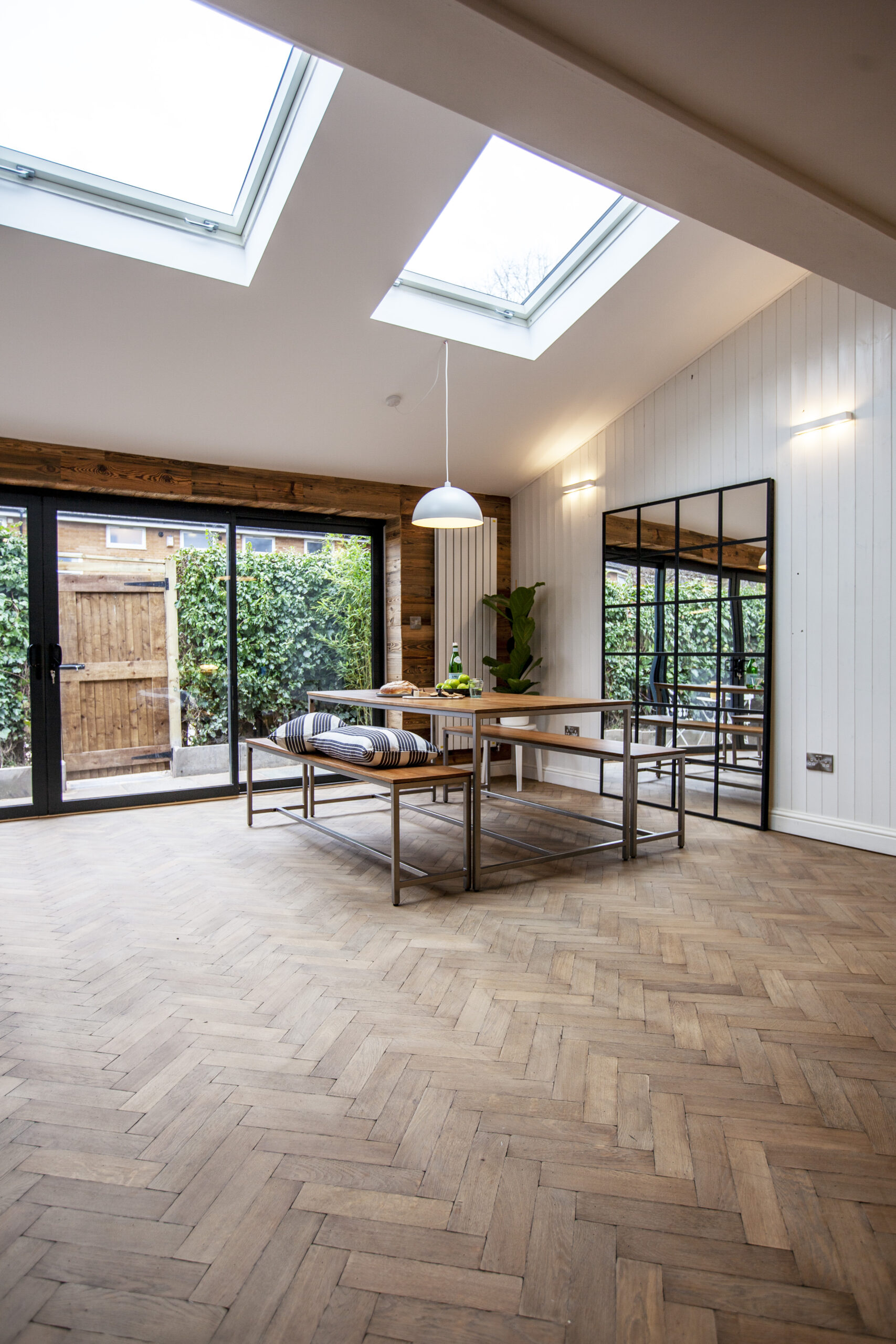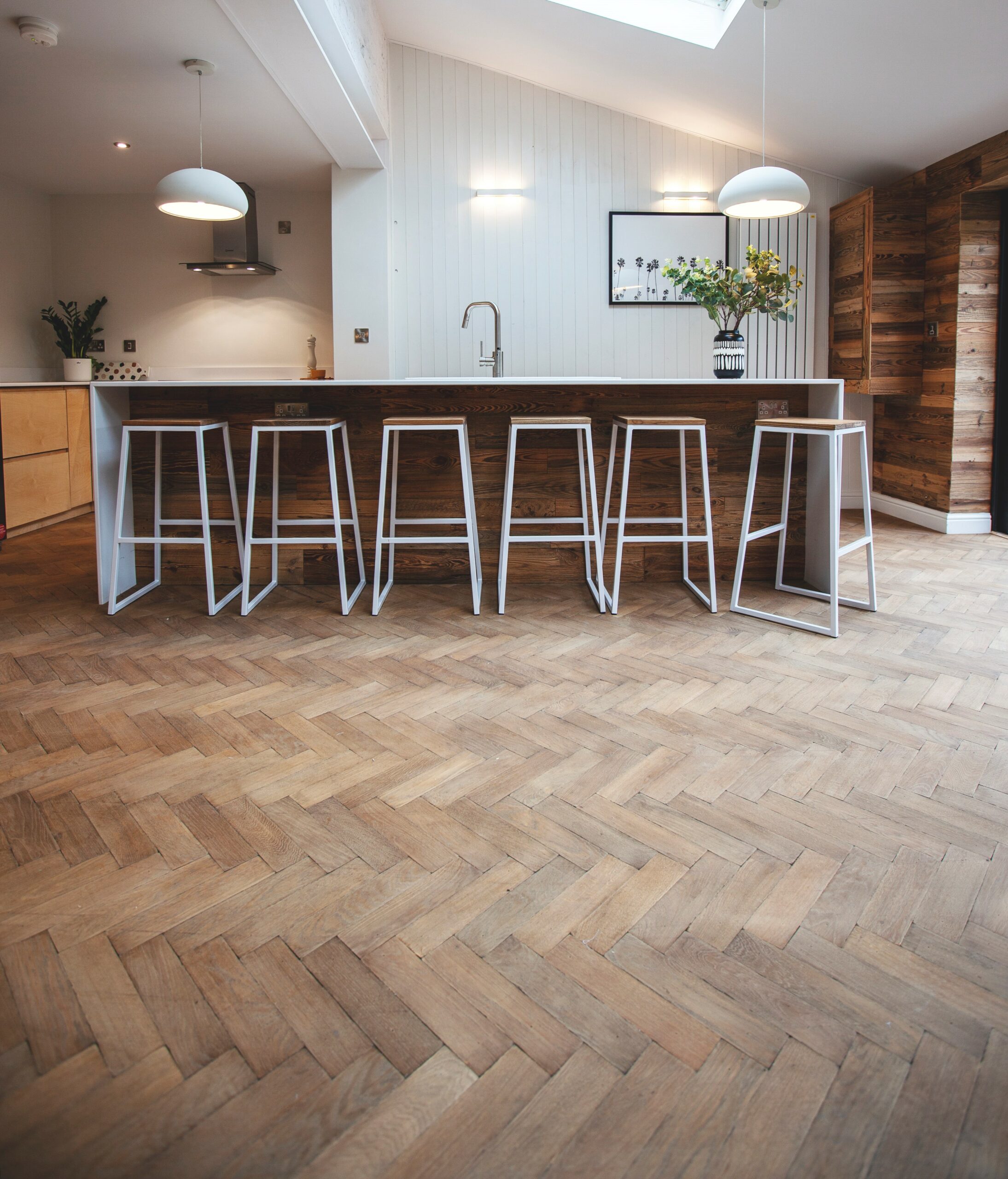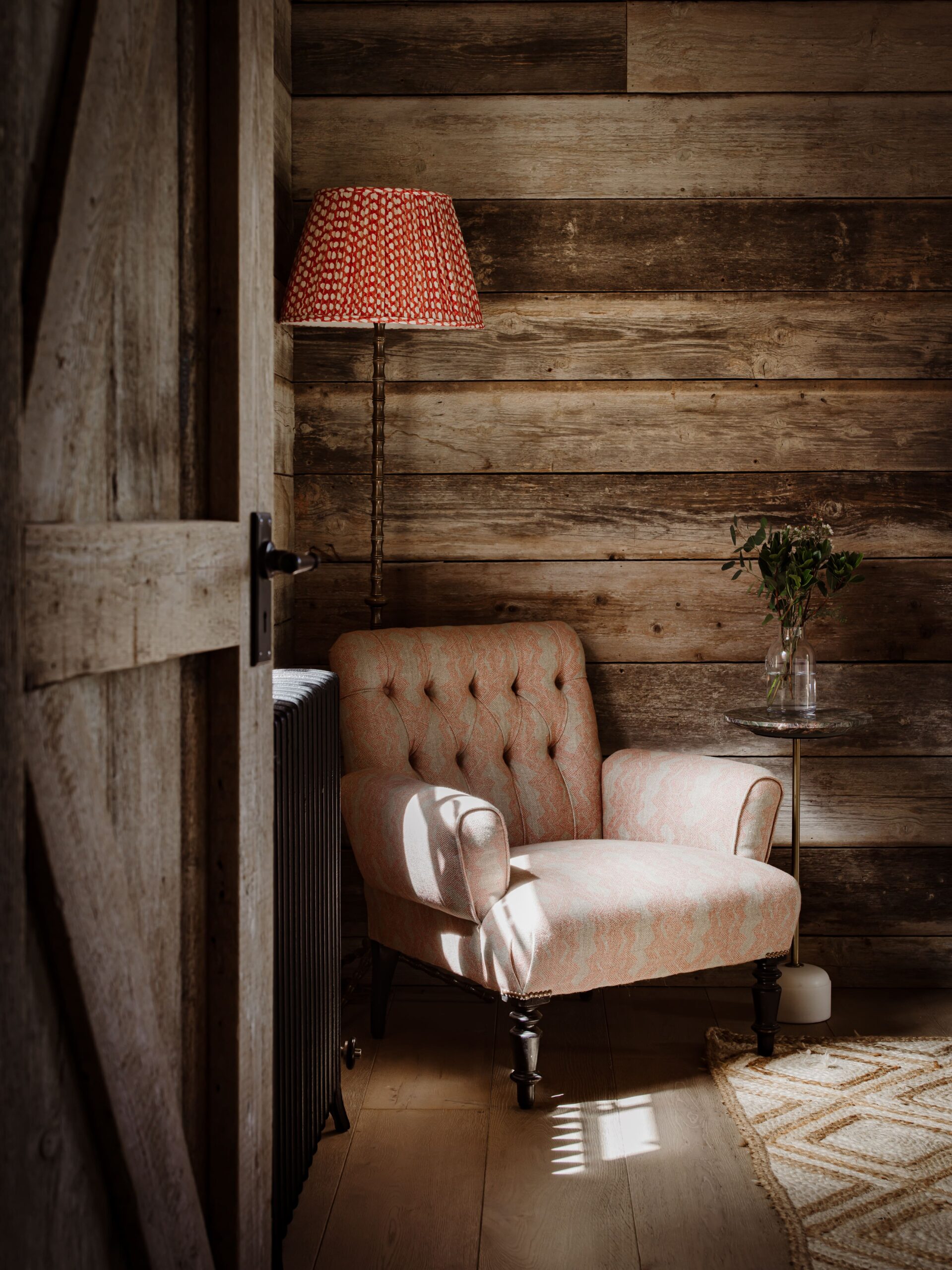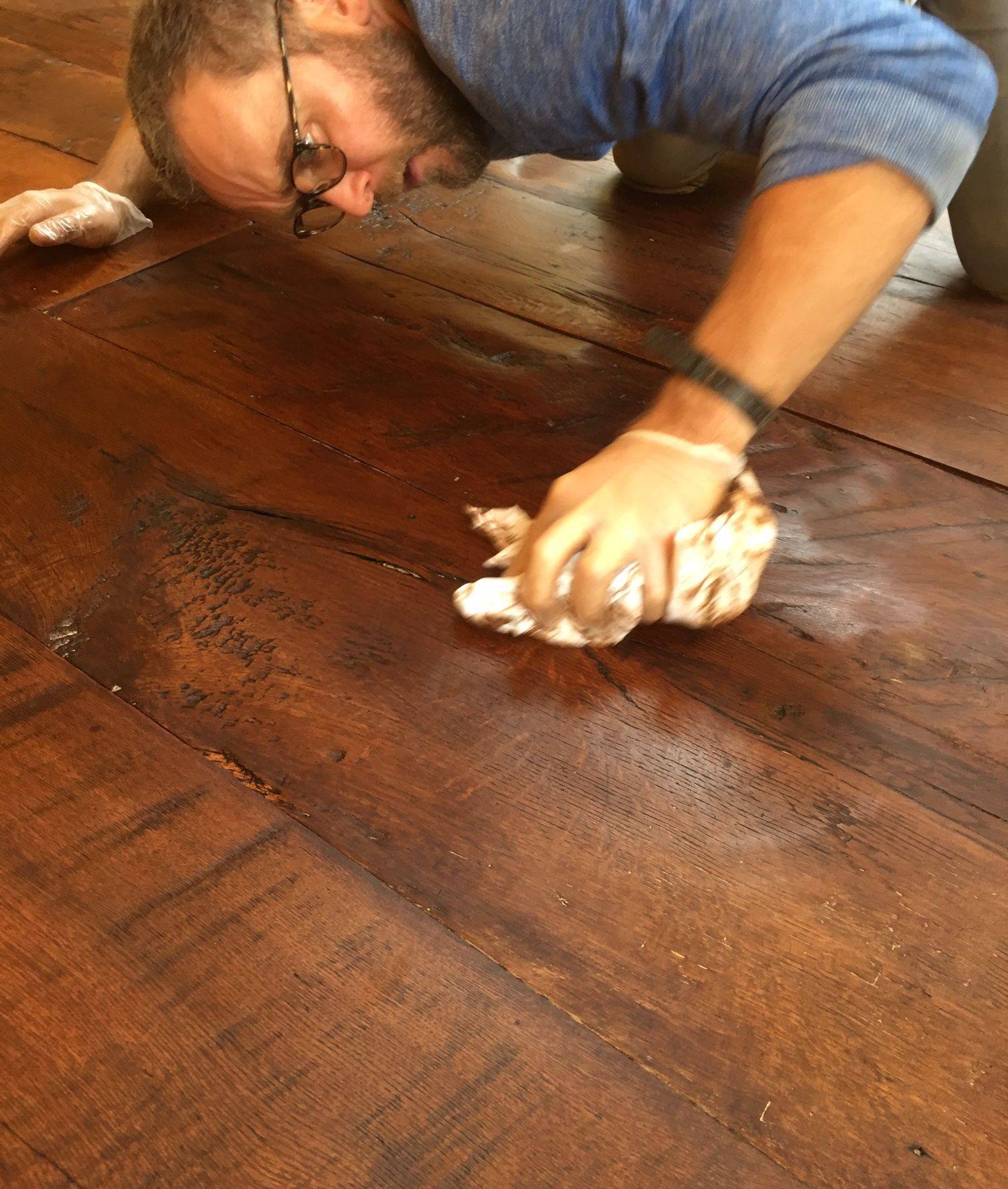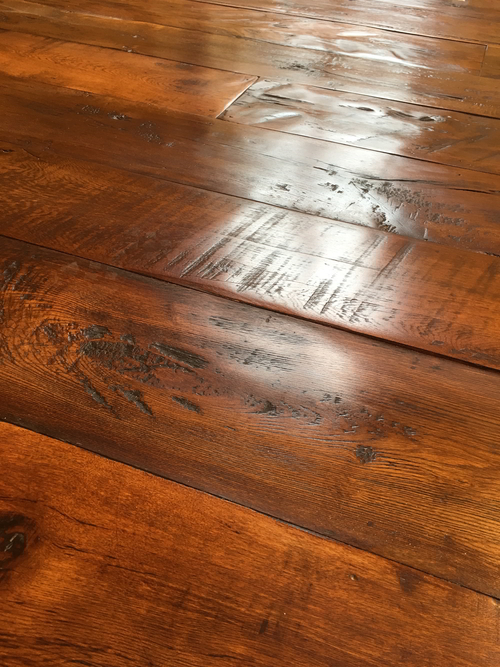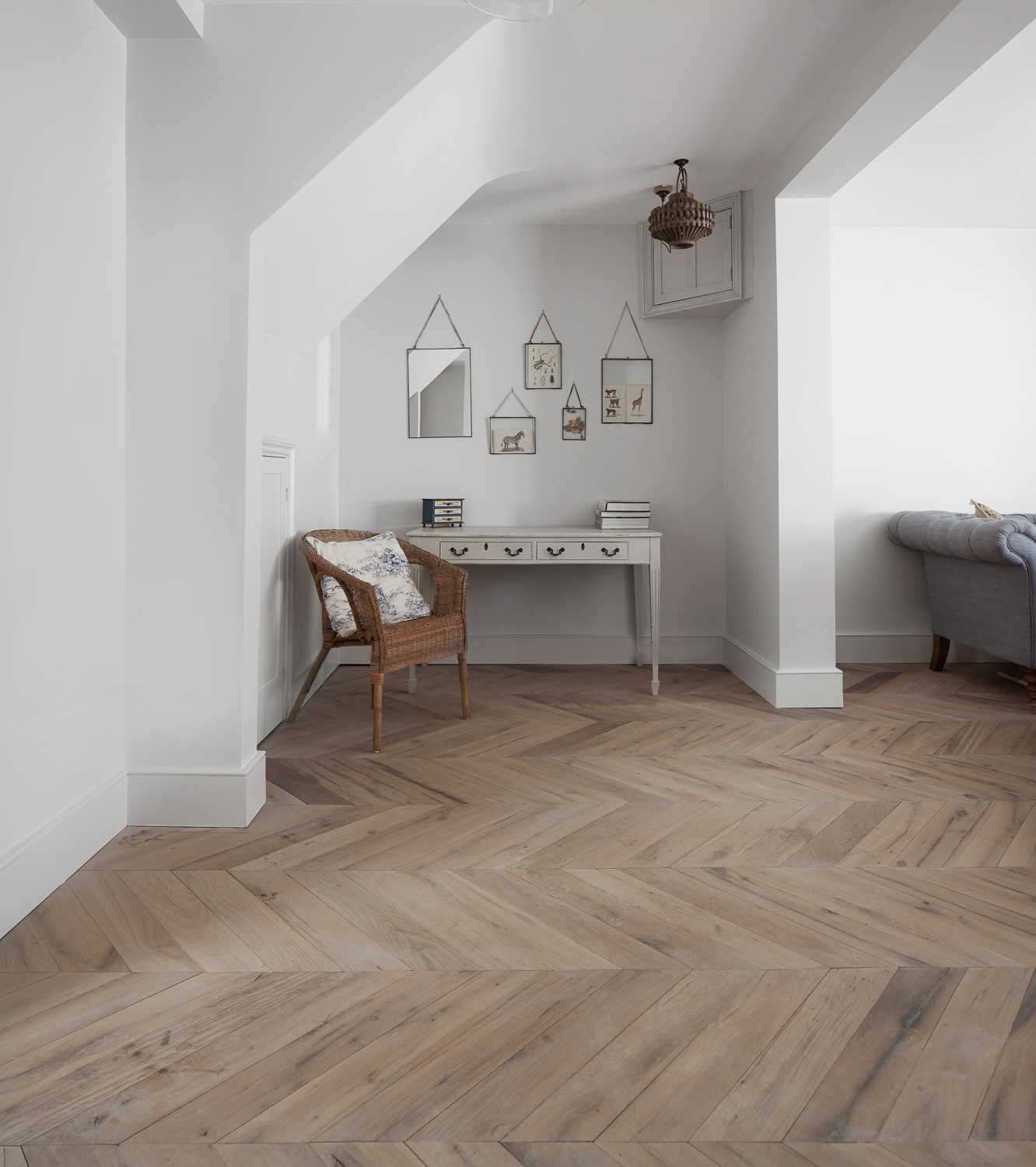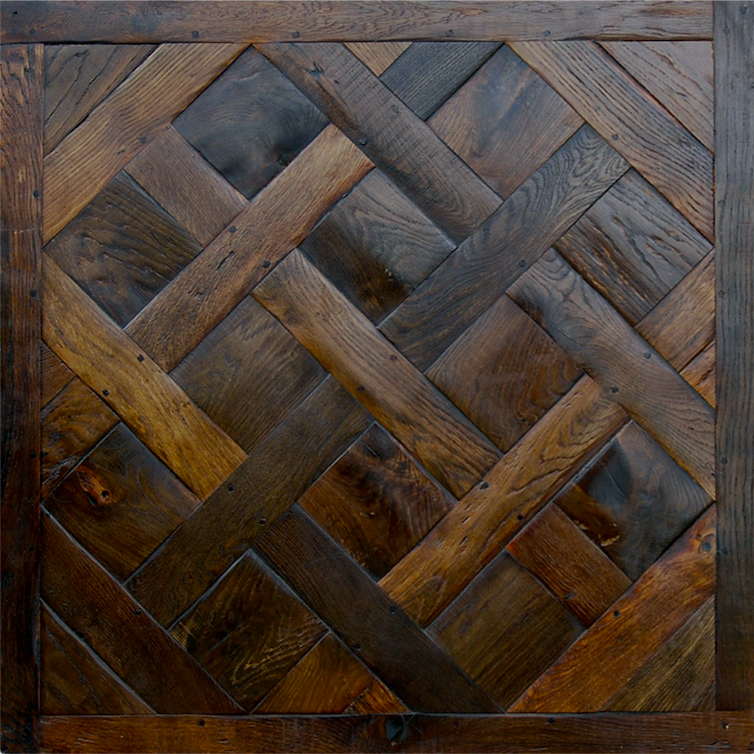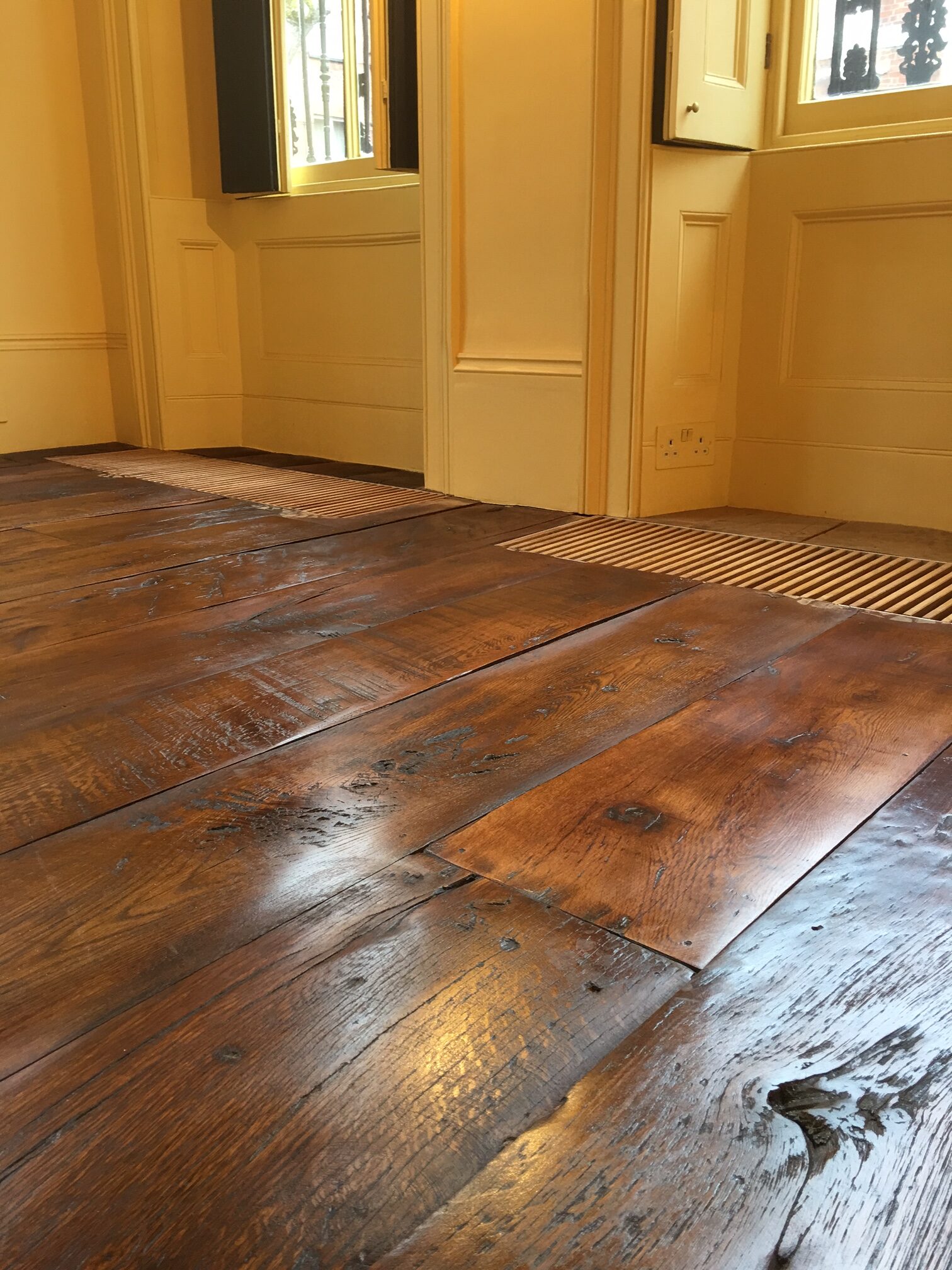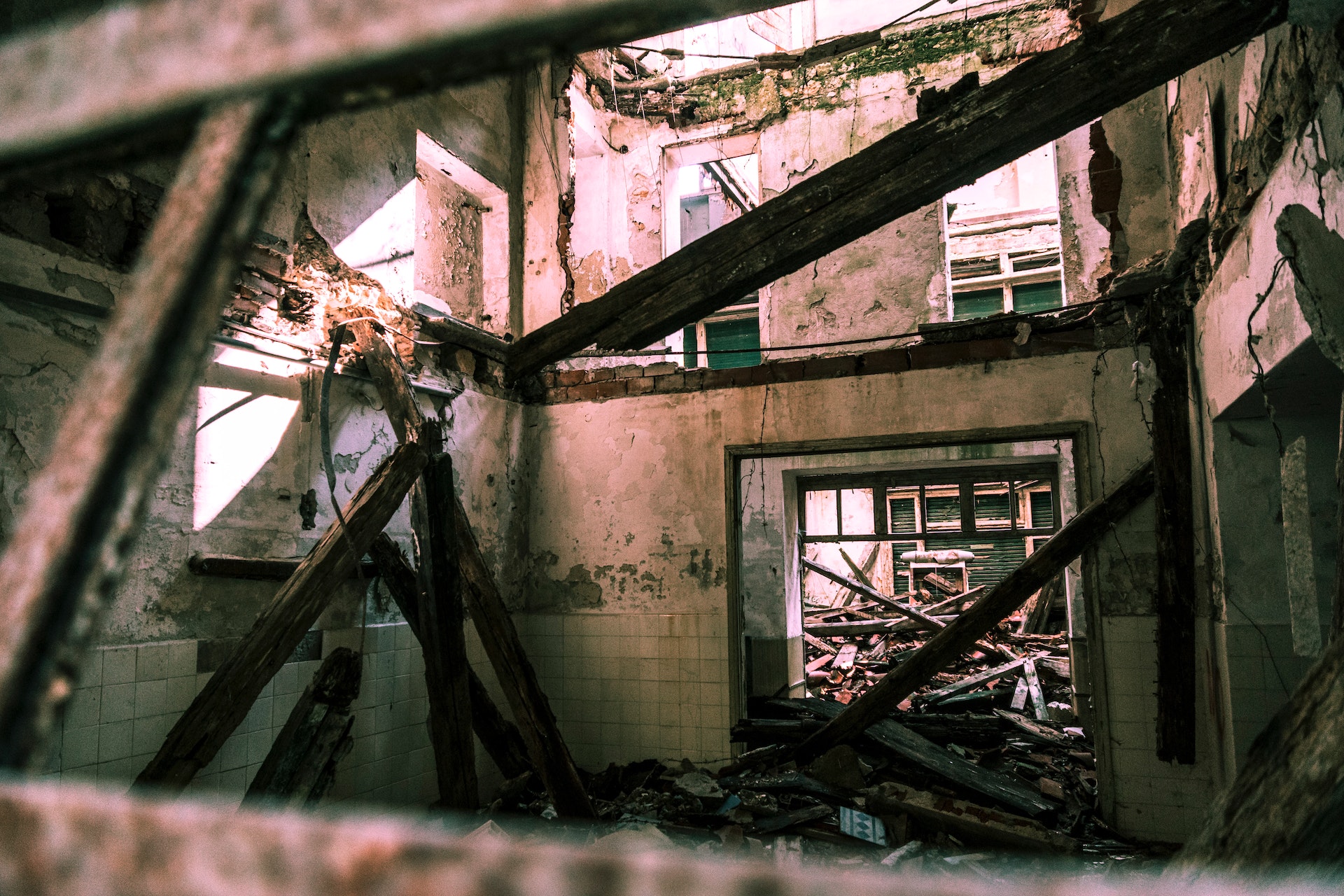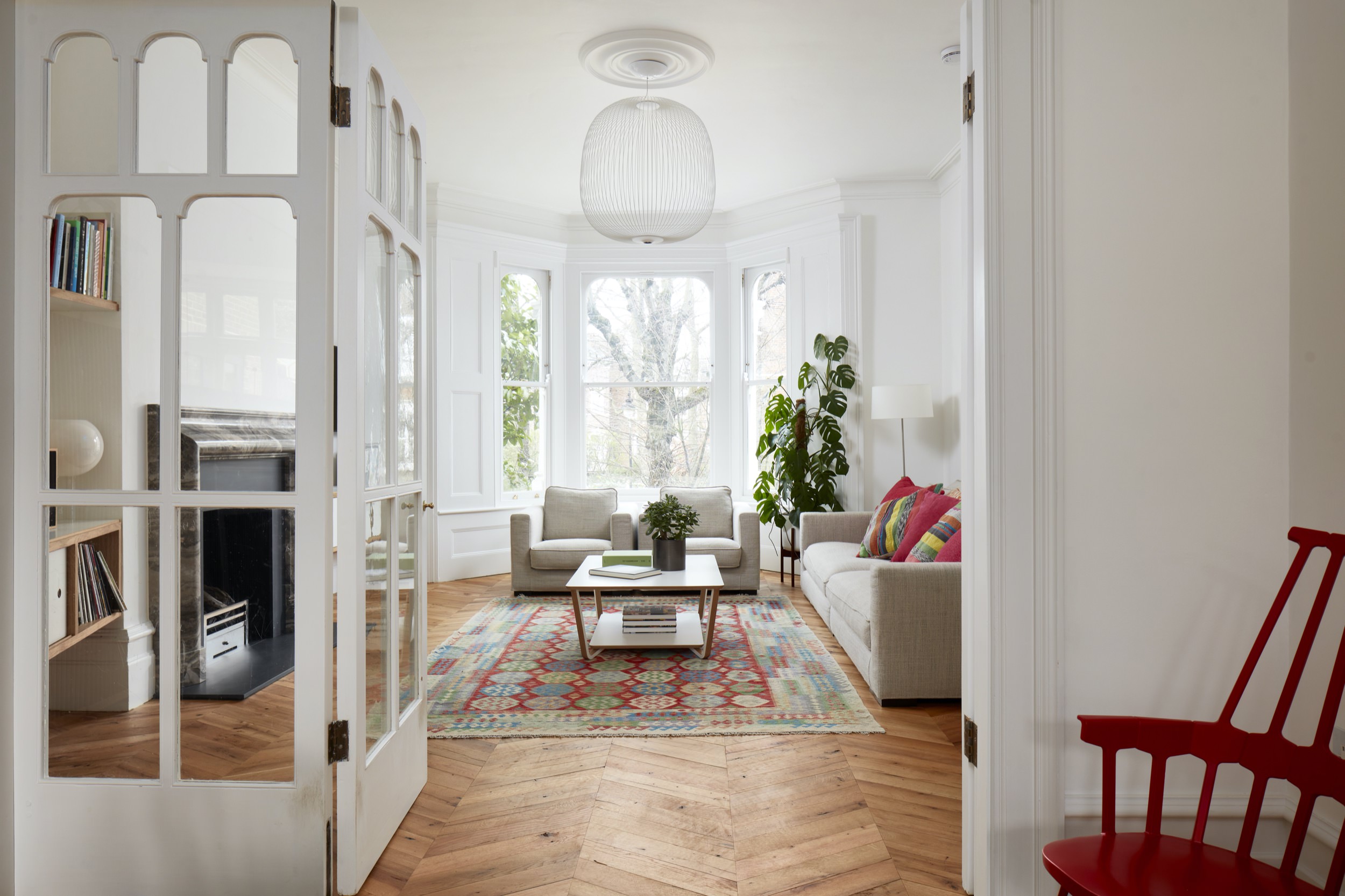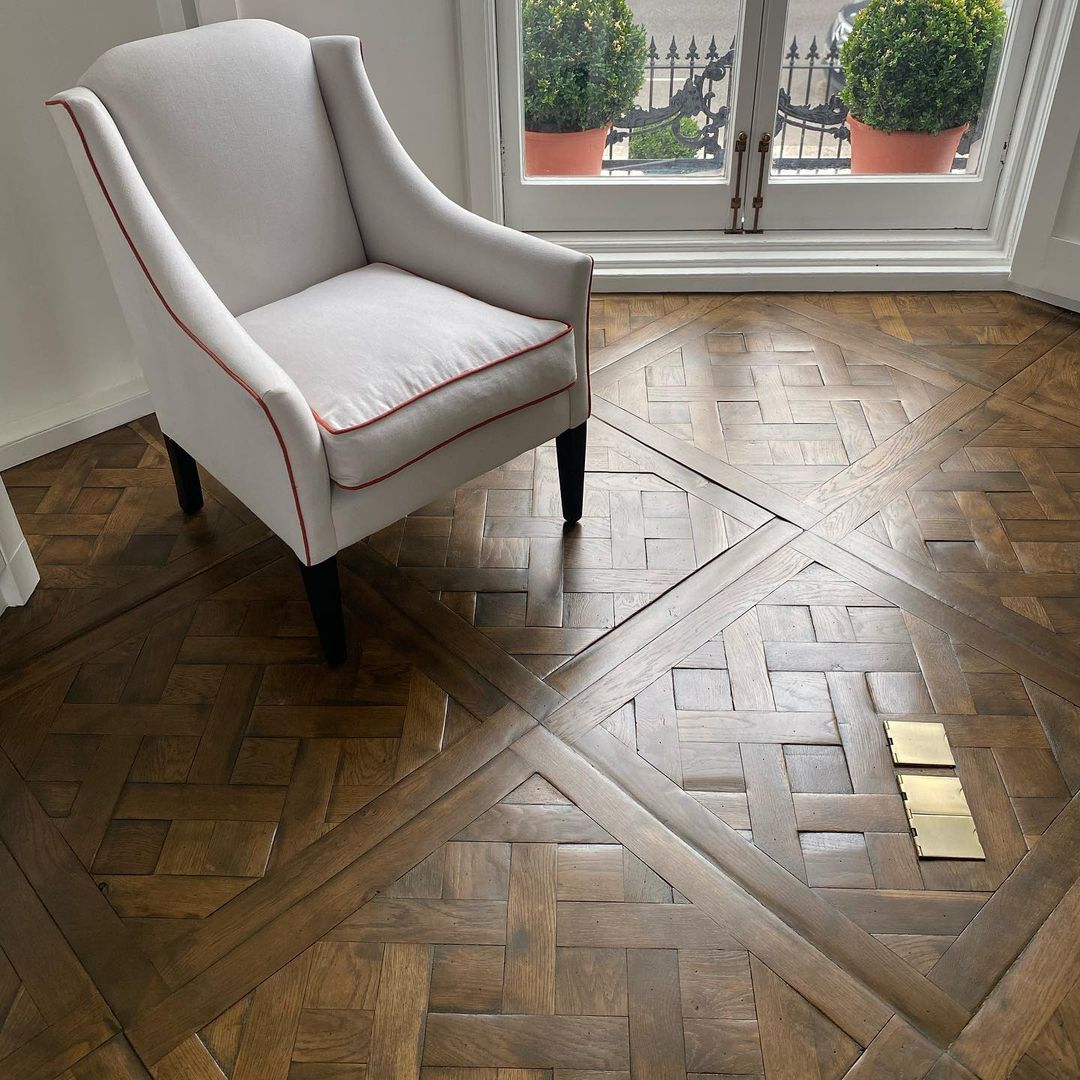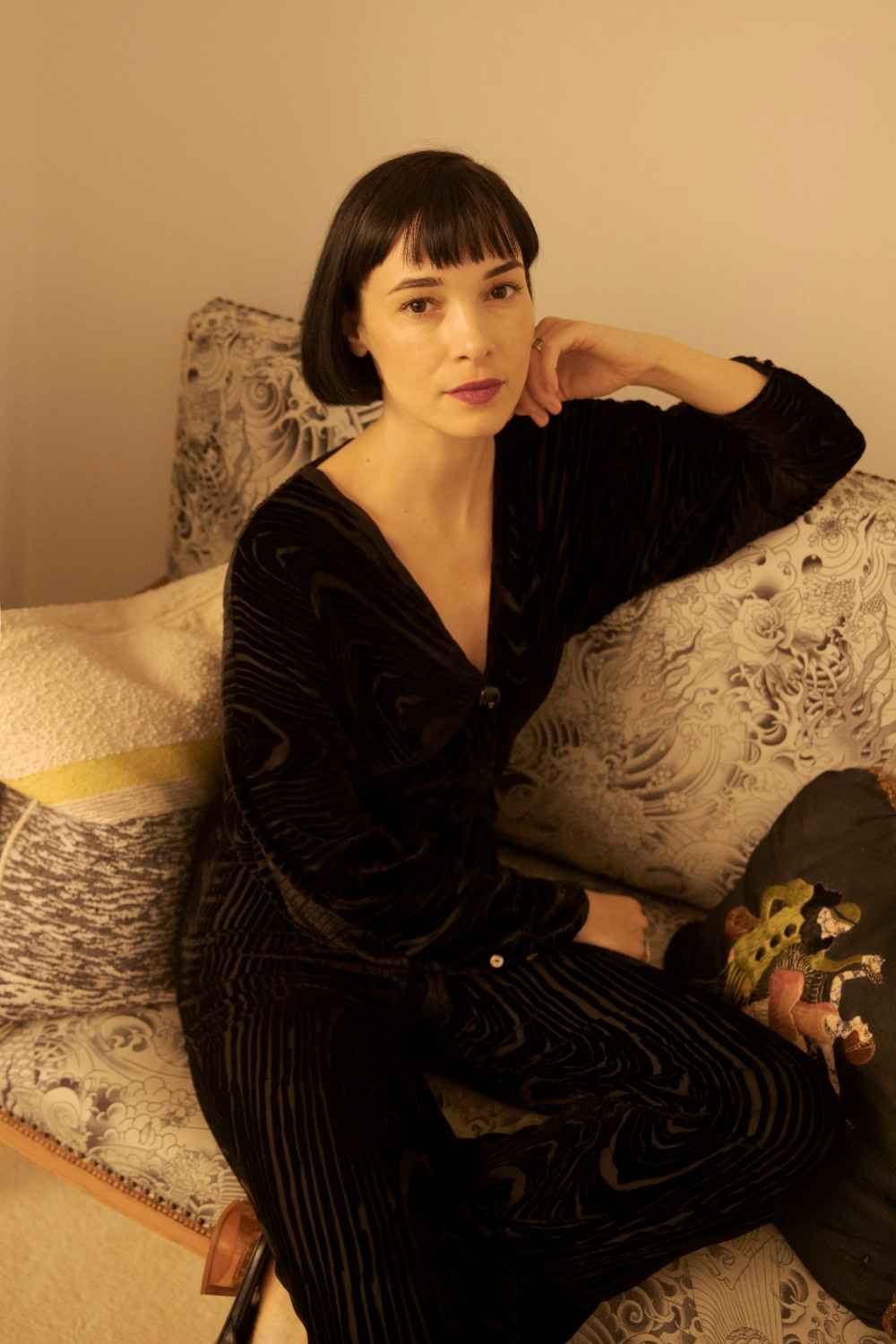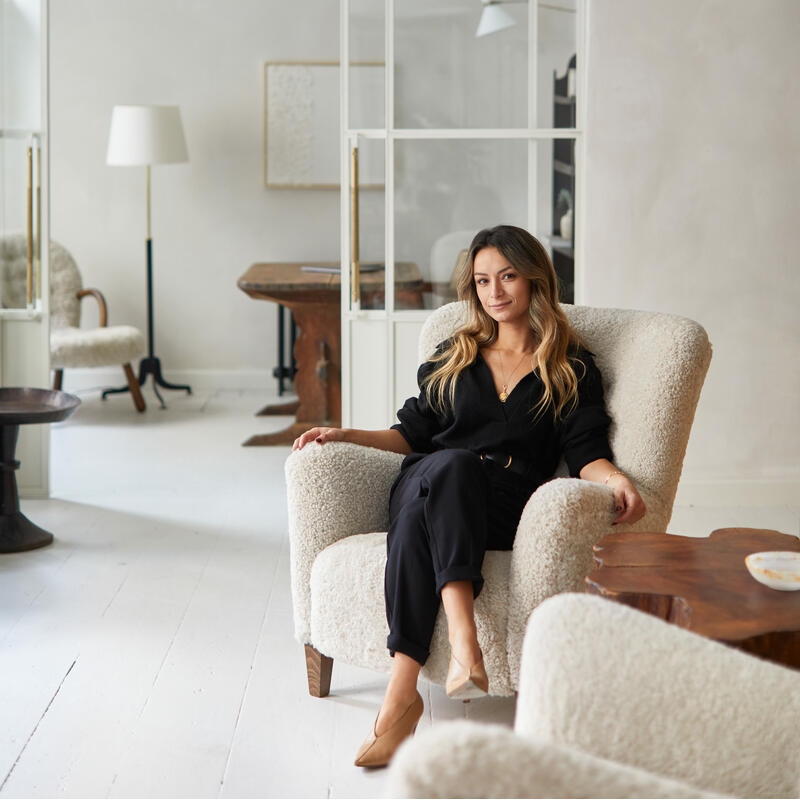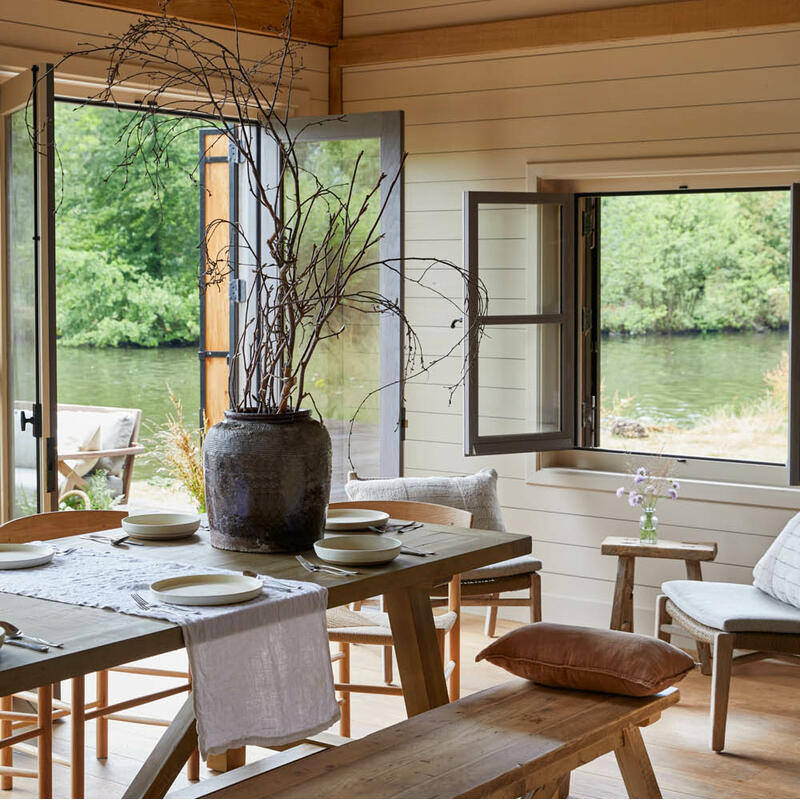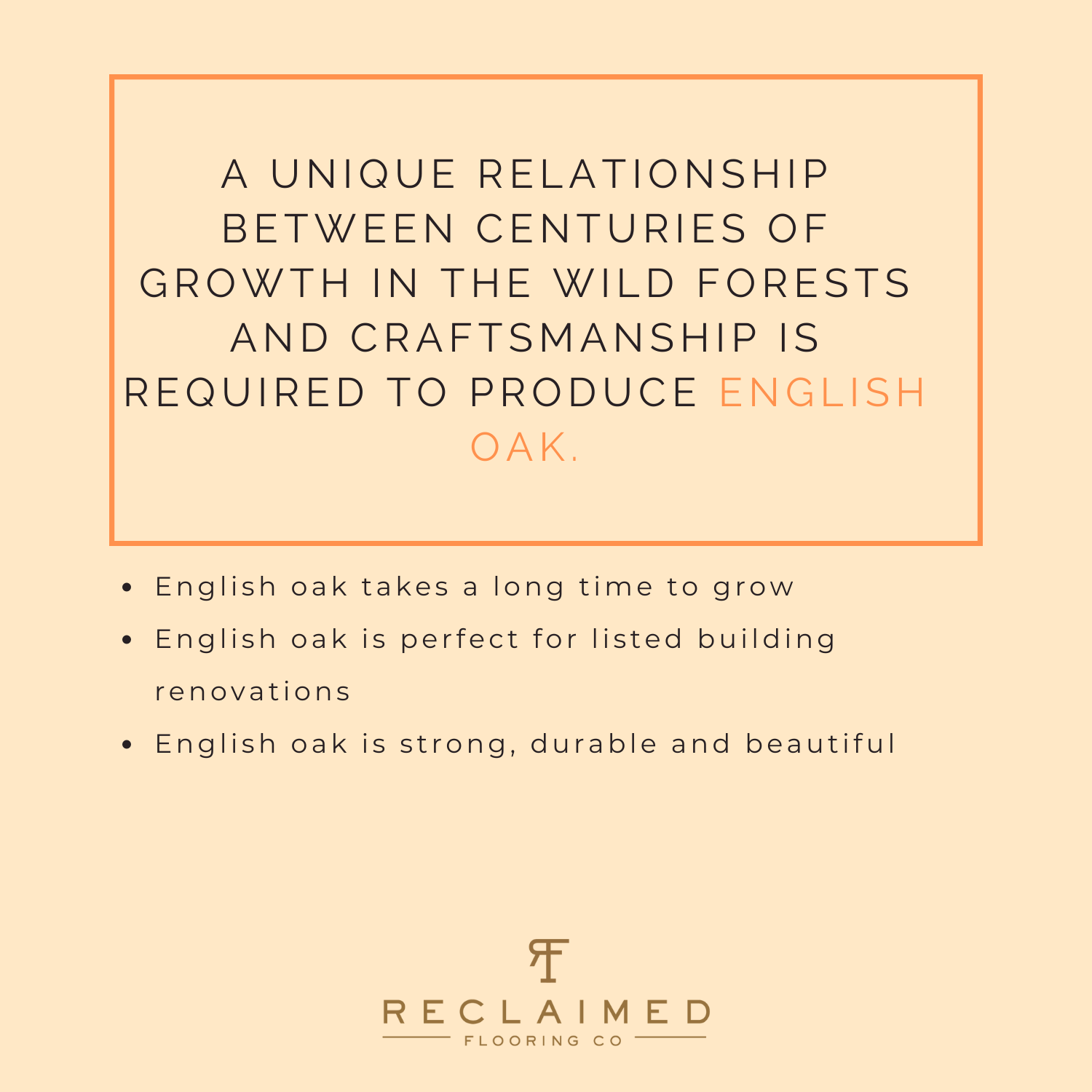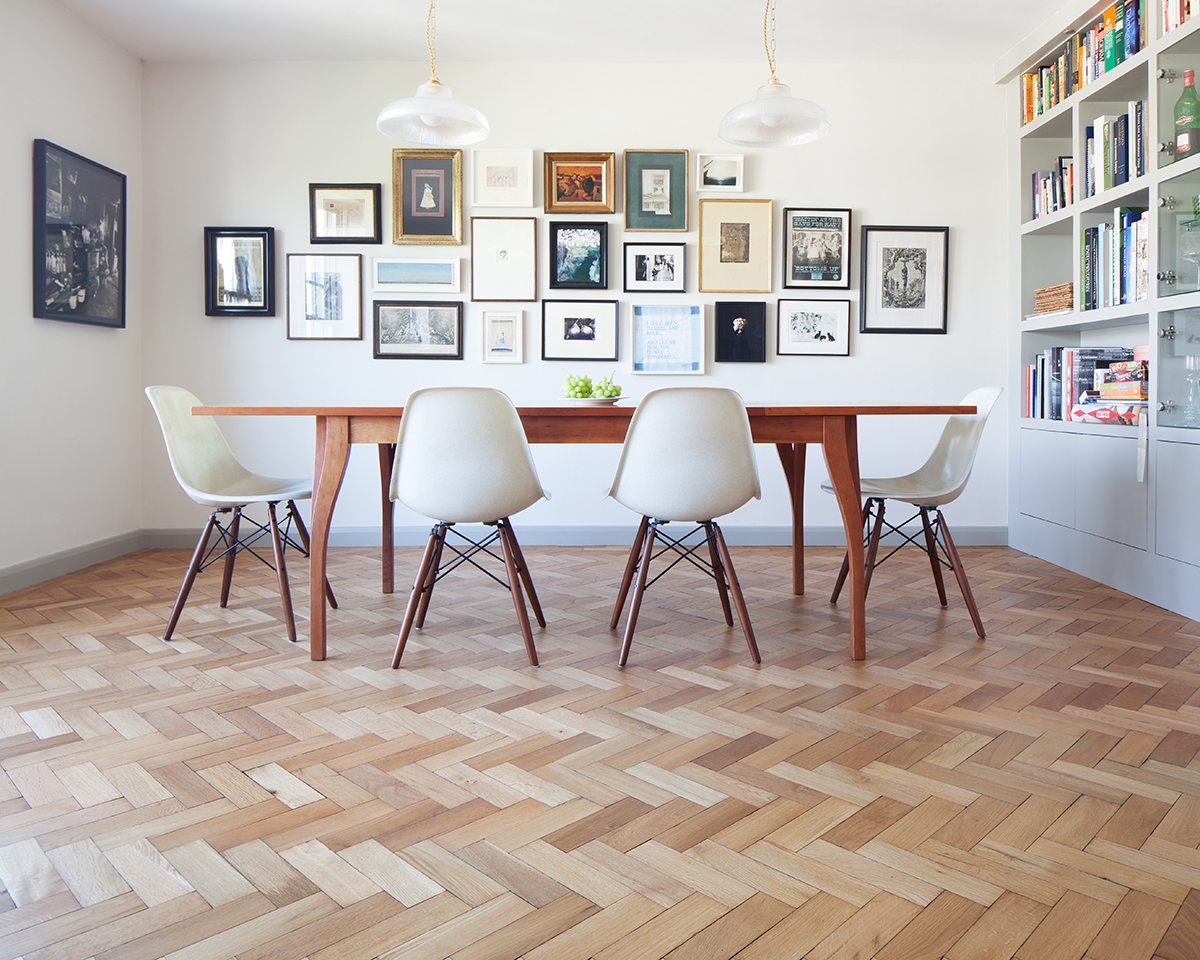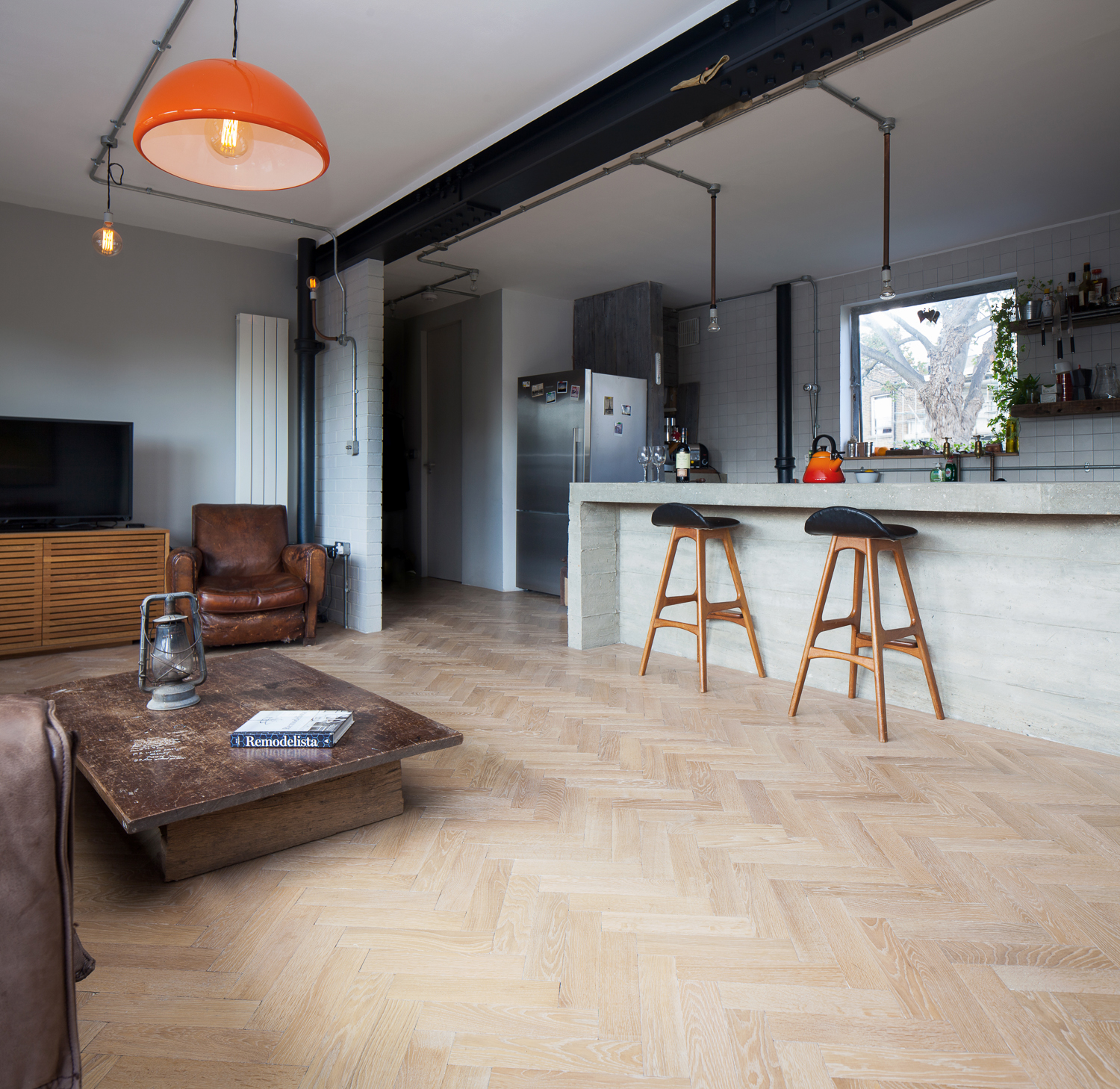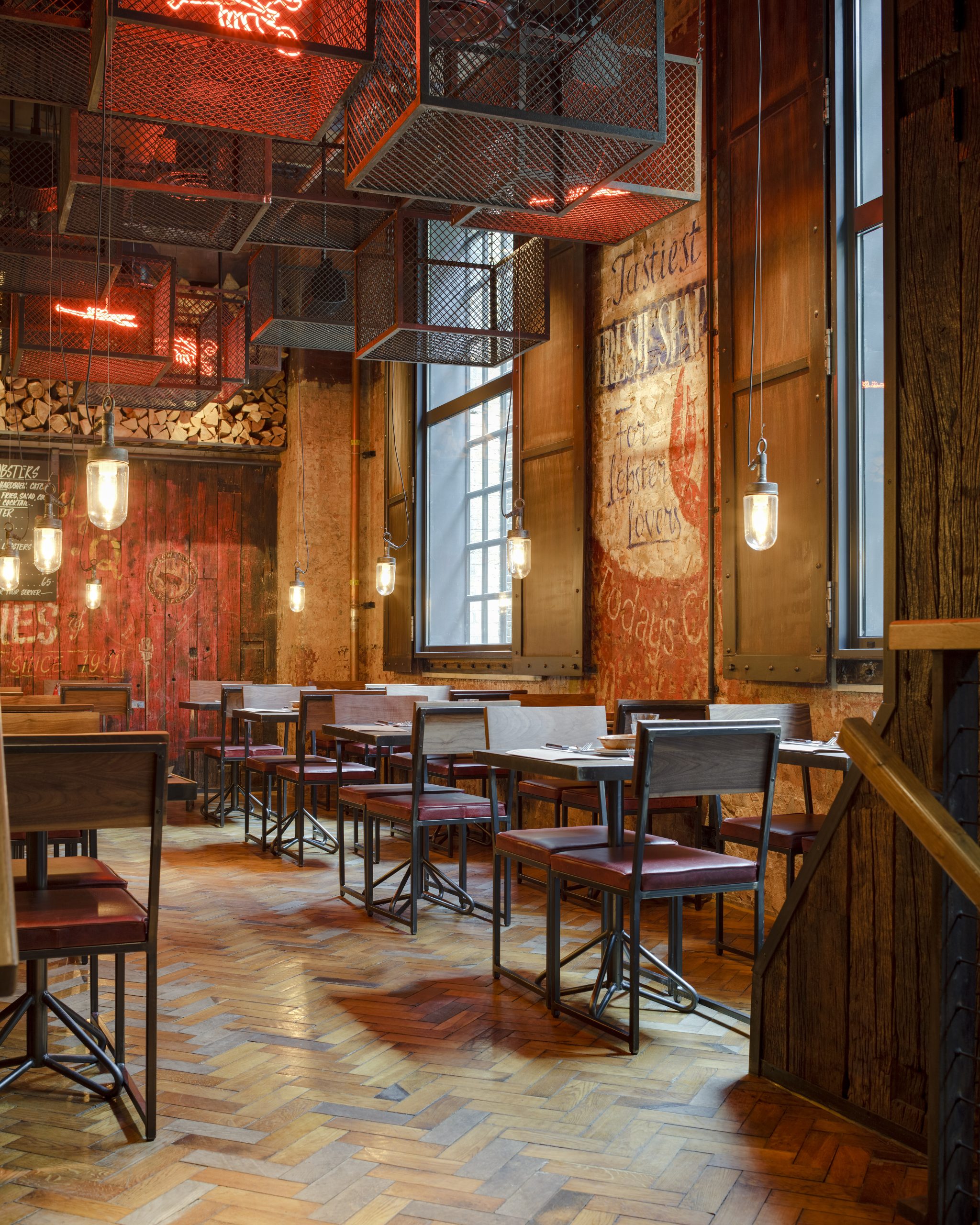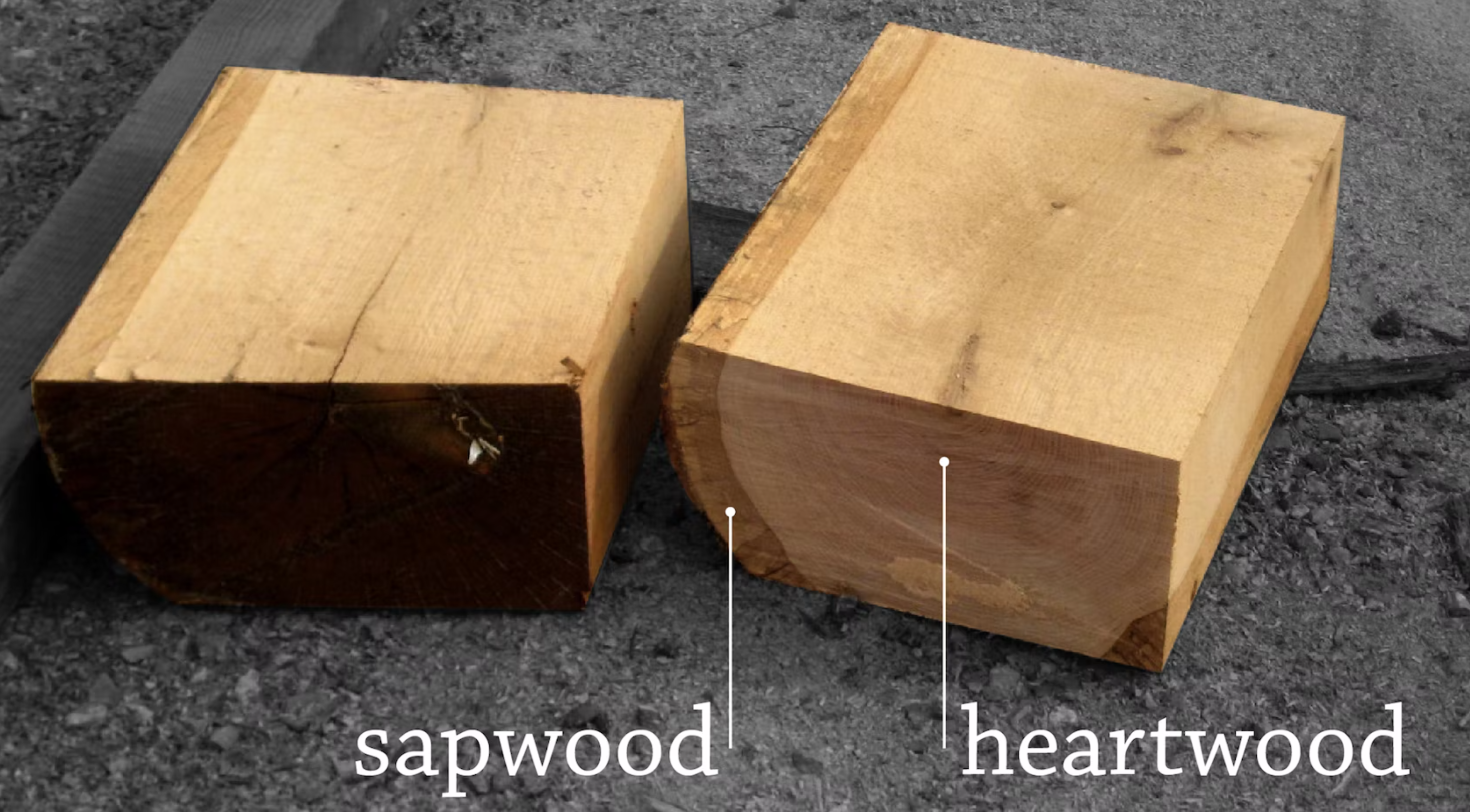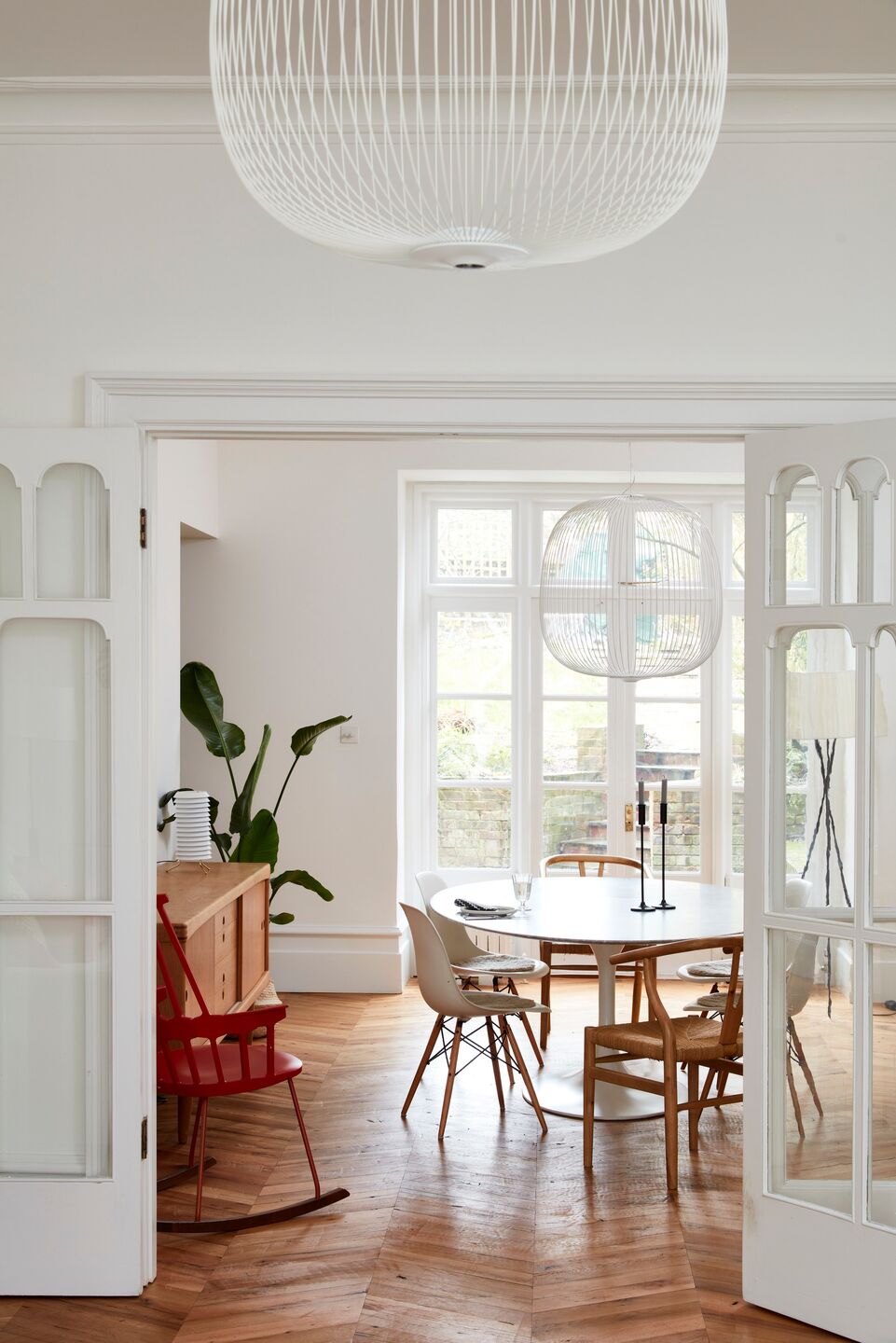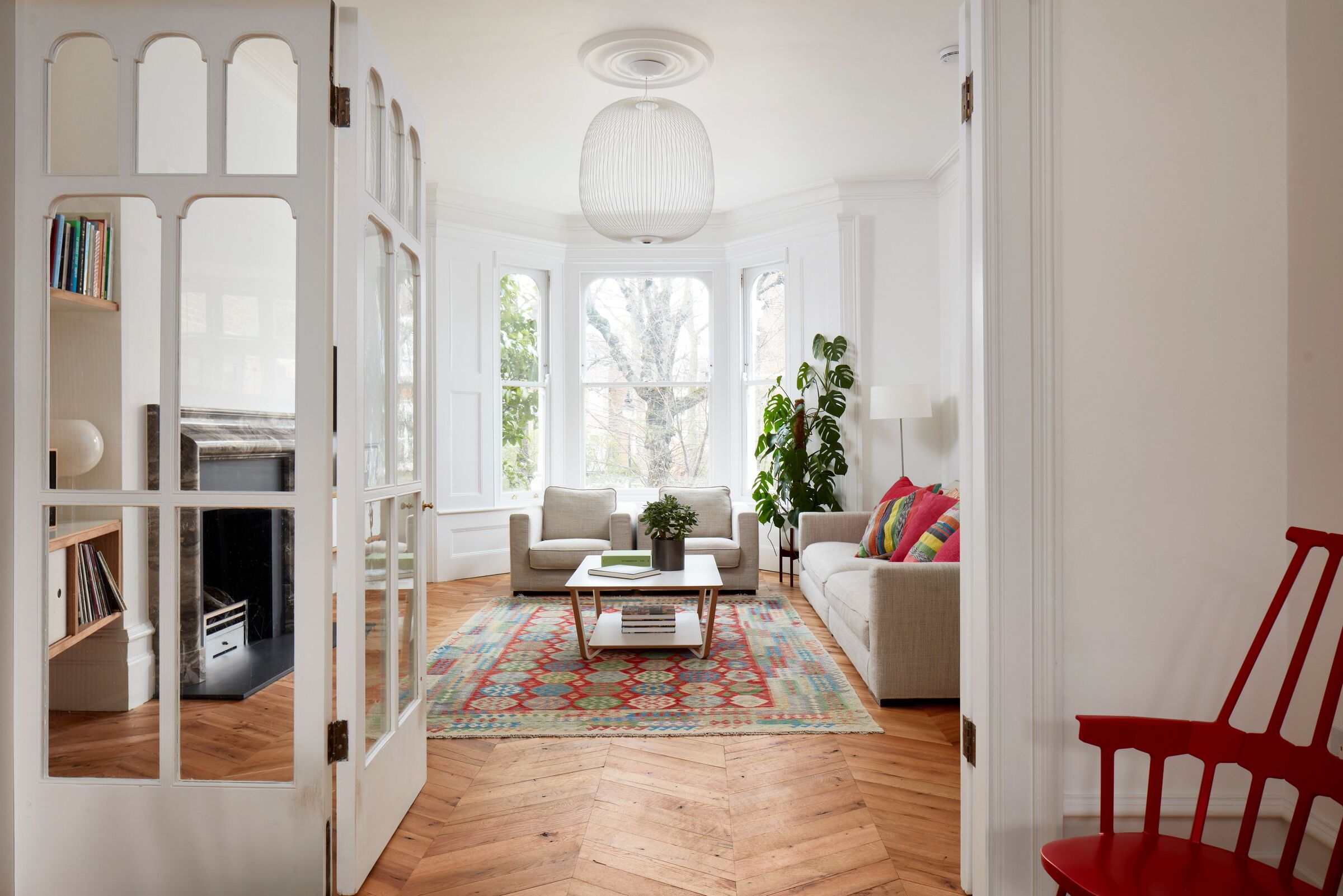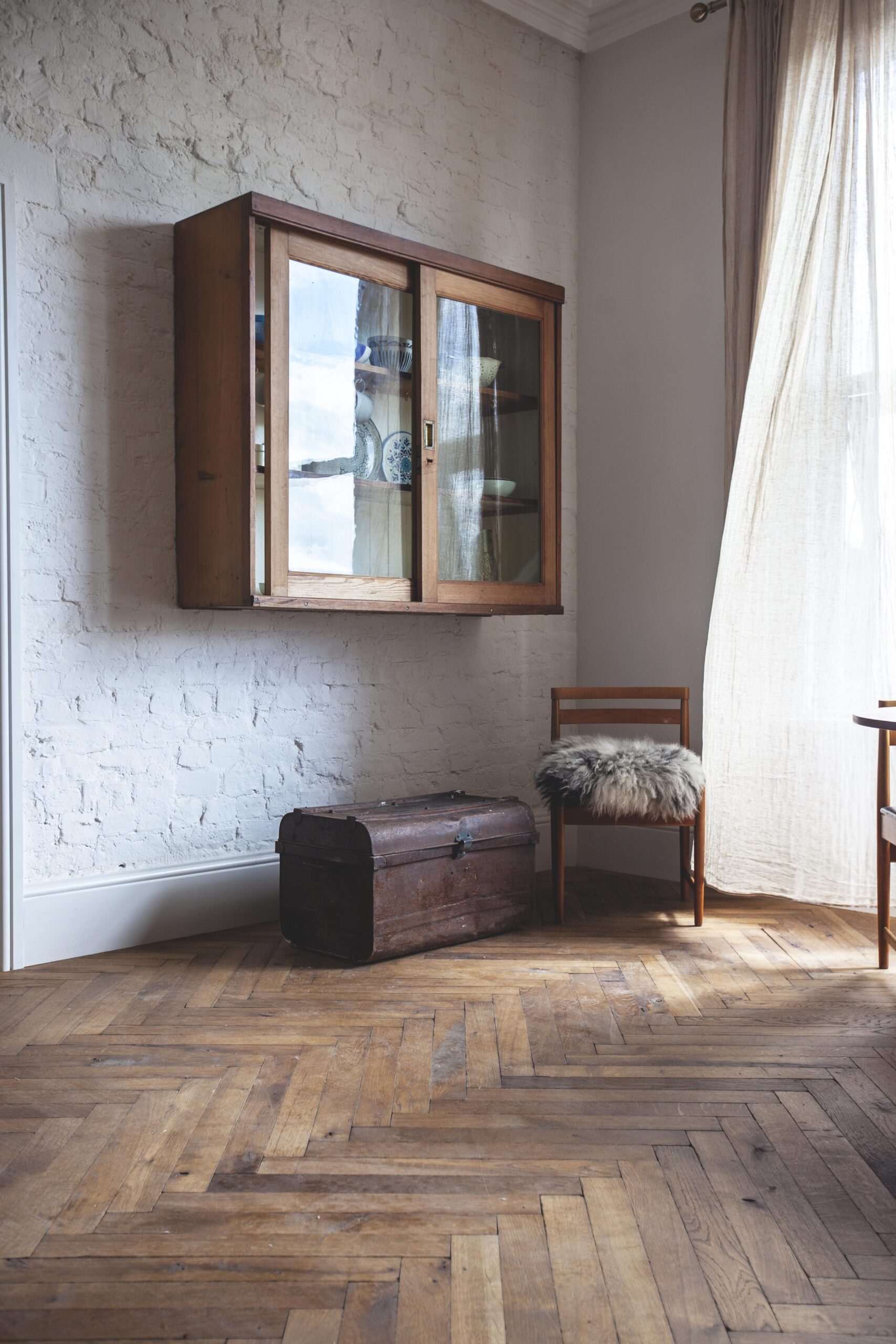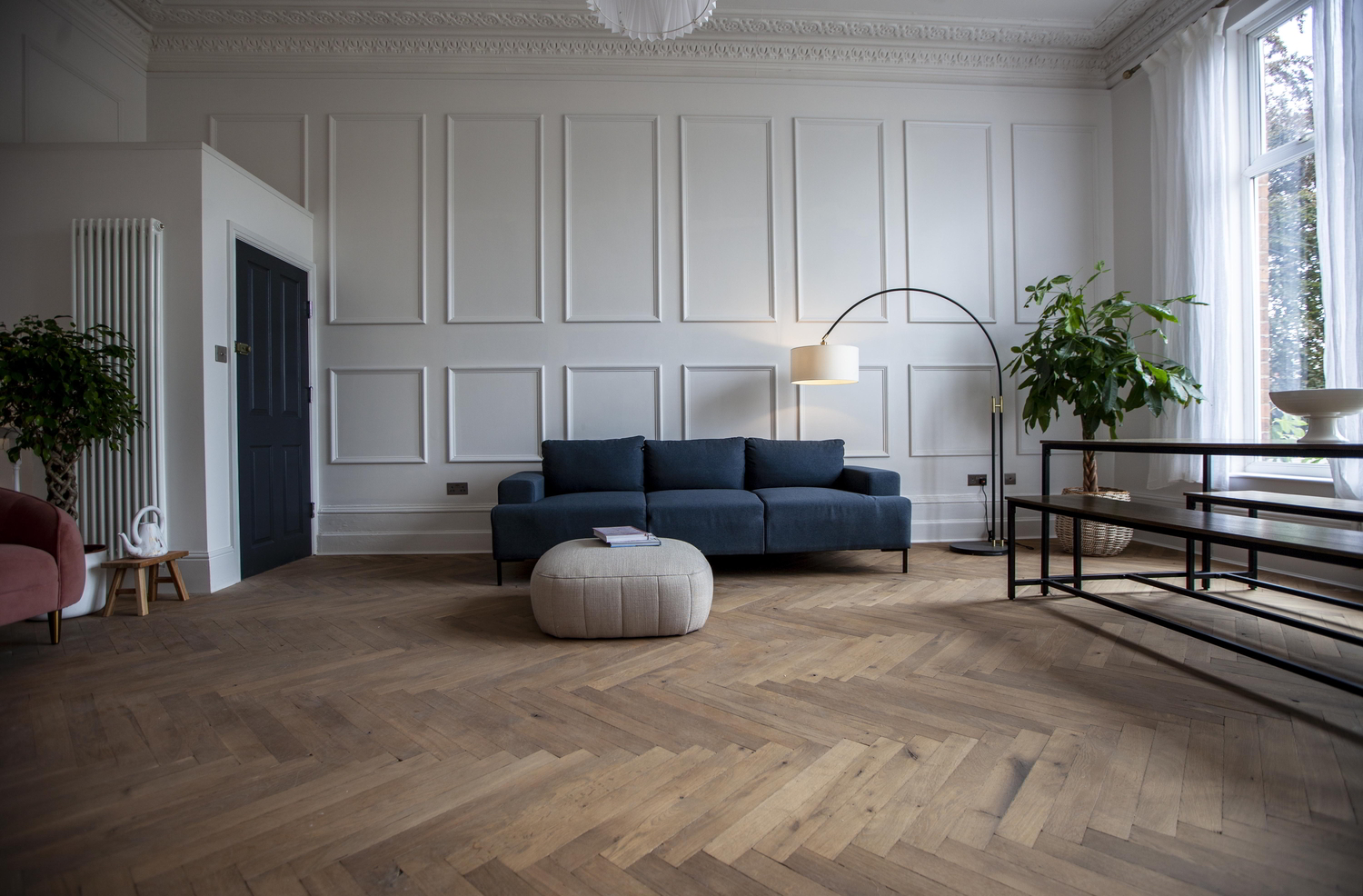
With wood floors sweeping through our homes, joining spaces, bringing warmth and breathing life into every corner, wooden staircases are now enjoying the same appreciation and desirability that wood flooring has been wanting over the past decades.
A wooden staircase can make an imposing focal point in any home.
The incredible versatility of wood means staircases can take a form as simple or intricate as the homeowner wishes, all at almost no cost to the environment.
No wonder any home’s beautiful and practical features are being celebrated the way they deserve to be.
Connecting living areas to our more private spaces in no subtle way, the sheer size of a staircase makes it a dominant presence in a home.
If something draws the eye, we should do all we can to make the object of our gaze as beautiful as possible.
Glass and metal staircases have recently enjoyed a heyday. Not only are these materials less ecologically sound than their wooden counterparts, but they are also prone to dating more quickly.
As they are less adaptable than wood, generally, the style you choose is the style you will have until the piece is replaced.
That is not to say that there is no place for more modern materials on our staircases; some of our favourite architects make stunning use of glass features in their interiors, but nothing beats the feel underfoot of warm, aged wood, bringing its history and stories into our homes.
Combining wooden staircases and glass or metal balustrades can create a stunning focal point and highlight your home’s spatial forms.
Incredibly ecological
Wood is almost endlessly reusable, but it is not just this that makes it such a climate-friendly choice.
It’s the potential to be not just carbon neutral.
Still, carbon negative, the minimal disruption of many manufacturing processes, and its longevity in situ makes it one of the most environmentally safe materials to bring into our homes.
Styles and shapes
When in expert hands, wood can be crafted into any shape and style and match any interior landscape.
Our expert craftspeople can help you materialise any design in our specialist colours and finishes.
Wood has a timeless style that adds value to your home when beautifully crafted for the space it will inhabit.
Another glorious benefit of wood floors is that many can be refinished, should you wish to change the style of your home.
Maintenance
Wood staircases, like wood floors, are wonderfully durable.
They are hard-wearing enough for the highest traffic areas of our homes.
Unlike carpet, as wood ages, it becomes even more beautiful, with patinas deepening, colours becoming richer and telling the stories of our homes and lives.
Stairs made of wood are also refreshingly easy to clean.
They can be vacuumed and washed as often as you like.
Colour matching
Close collaboration is tremendously essential in all areas of project specification and design.
For this reason, we offer the opportunity to customise stairs and other bespoke joinery to complement or match our wood flooring.
Should you want your stair treads and risers to be colour matched to our wood floors, we can provide this service for you.
Our expert craftspeople carry out colour matching and use bespoke colours and hard wax oils, which are air-dried slowly to ensure they have a perfect finish to match the floors and joinery elsewhere in your home.
Design Process
Whether straight cut or curved, all stair pieces are templated on-site before manufacturing for maximum precision.
Unlike other bespoke furniture pieces, a staircase can’t simply be moved a few inches if it isn’t quite right.
Our meticulous design process involves all of our client’s requests, ensuring the piece they receive is everything they dreamed of.
In summary:
- Wood staircases are hard-wearing, timeless and beautiful
- They can be matched to other joinery in your home
- The wood will stay looking beautiful and age along with your family.
Sources

No wonder wood floors bring warmth, luxury and well-being into our homes.
As with all design choices we make these days, we need to balance our desire for gorgeous aesthetics with the environmental impact of the resources we consider using.
Wood flooring has a shallow environmental impact.
Because of the reforestation initiatives, the benefits trees bring to the world during their lifetime, and the end product’s reusability, wood flooring can have a negative carbon footprint at its best.
This claim is supported by the Royal Danish Academy’s Center for Industrialised Architecture (CINARK), which developed the Construction Material Pyramid.
This infographic has been created to highlight the environmental impact of the most used construction materials.
It is designed to be easy to understand and, therefore, can help designers and architects communicate the environmental impact of consumers’ choices with their clients.
Clients can use this information to make informed decisions from the planning phase of their design on the environmental impact of their choices, starting with the extraction of raw materials through to the impacts of transportation and manufacturing.
The study looks at each product’s ecological and environmental credentials and measures them in several categories.
The study shows the minimal impact wood has on its environment and, in many cases, how it benefits the environment.
Global Warming Potential
The GWP is another way of referring to a product’s carbon footprint.
CINARK tell us, “When it comes to the potential to cause future harm to the health of our planet, organic materials have been shown to have negative rates, which means they absorb more greenhouse gases than they produce during their manufacturing.”
The positive impact of wood flooring doesn’t just impact the external environment – our homes are benefitted too.
Wood floors remove toxins from the air once inside our homes, meaning the protection provided by trees can continue and look after our families’ wellbeing when we bring wood floors into our homes.
Ozone depletion potential – ODP
In addition to measuring the carbon footprint of materials, CINARK’s analysis also considers the products’ potential to damage our ozone layer.
Those of a certain age will remember the banning of CFCs in the 1990s once the discovery was made about the damage they were causing.
Nowadays, products causing the most harm to our ozone layer are thermal insulators.
At the other end of the scale, materials that require low processing, such as wood, stones and copper sheets, have virtually no potential for ozone depletion.
Photochemical Ozone Creation Potential – POCP
We have often discussed the biophilic nature of using wood in our homes, and POCP can help us understand the science of biophilia.
In high concentrations, ozone can affect the health of humans and nature and may even affect breathing.
Wood has the lowest POPC level of all analysed building materials, which could help us understand why we feel so much better in homes built from materials that absorb carbon rather than produce it.
Acidification Potential – AP and Eutrophication Potential – EP
Measuring Acidification and Eutrophication helps us understand how soil nutrients are affected.
By looking at how specific materials’ production and manufacture impact ecosystems, we can make choices which safeguard their finely balanced nutrients.
Unsurprisingly, wood floor products have very low AP and EP.
These low levels help to safeguard soil health which is vital for our agricultural industries and food production.
Products, such as wood and straw, which are nestled at the pyramid’s base, ensure this bedrock remains safe.
Keeping the impact low
Unsurprisingly, oak trees, modified wood, construction timber and plywood are at the bottom of this pyramid, alongside other natural resources such as straw and manufactured products, including MDF.
This study shows how much lower wood flooring’s environmental impact is than those of concrete, lime sandstone, glass and even brick, which all appear at least two rungs higher on CINARK’s Construction Material Pyramid than wood.
Most beautiful of all, wood can have negative C02 rates from its first use, but the carbon footprint of building materials reduces even further, and the benefits increase even more with each subsequent reuse.
Long-term impact on our homes
Wooden or hardwood flooring also comes with the added advantage of improving indoor air quality by absorbing and storing carbon from the air.
Helping more than just our air quality, wood flooring’s naturally insulating properties can also help your home to consume less energy.
Since you save on energy utilisation, you directly contribute to energy conservation, which contributes towards a greener environment.
With their potential to be refinished to keep up with your evolving home design choices and personal style, wood floors can reduce waste as they are far less likely to need to be disposed of.
Even after you have exhausted the use of hardwood floors, they can still be reused time and time again.
Summary
- Wood flooring has a shallow impact on the environment
- Wood floors can be carbon-neutral or even carbon negative
- Wood flooring helps keep homes energy efficient
- Wood floors can be reused and recycled, contributing to green and circular economies.
- Wood floors are suitable for individuals and have a minimal impact on the planet.
Sources:
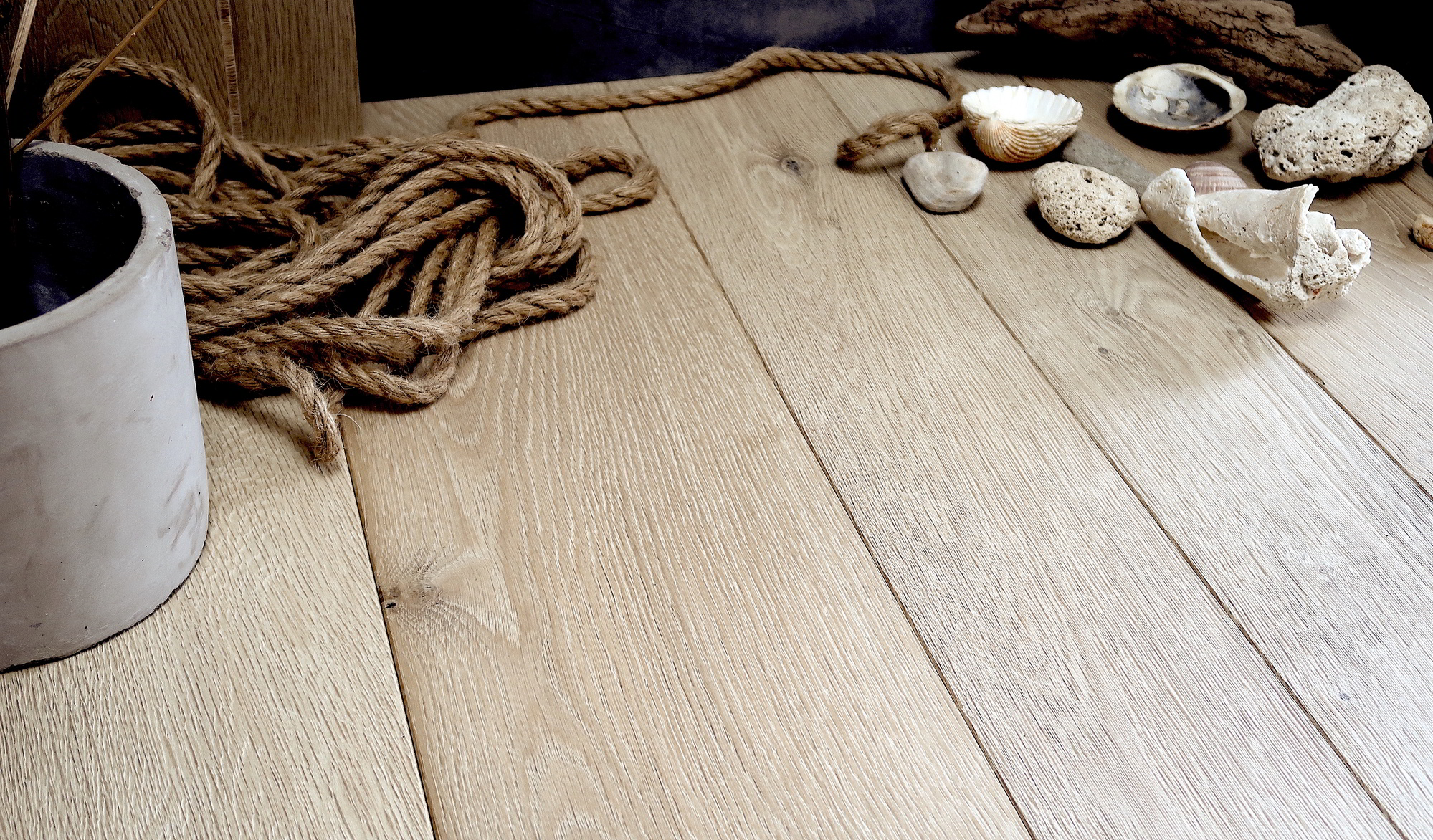
With a strong focus on sustainability, the circular economy is involved in creating new or improving existing offices and workspaces.
Circular design companies build the concepts of reducing waste, repurposing existing products and reducing carbon emissions in every aspect of the process, from planning to production.
The circular design focuses on its responsibility to reduce waste and improve well-being with every step.
The circular economy is concerned with using and repurposing existing waste and designing out waste from the very beginning and at every stage of the interior design process.
When designing our workspaces, we should all be considering how circular economy and circular design can boost not only environmental health but also our health.
Circular Economy: Why now?
Over the past few years, we have all been forced to rethink how we work, and as we are now getting comfortable with being back in our workplaces, we have new opportunities to find better ways of using these spaces.
The importance of maximising our own well-being and the well-being of our environment has never been more evident.
We have become acutely aware of how our workspaces can influence this.
Many of us will well remember having to suddenly repurpose our existing home offices to work harder than they ever had done before during the challenging times presented to us in early 2020.
We now have the luxury of time. We can take time to design more slowly and in a more considered way than ever before.
We also see the benefits of sustainably designed and expertly crafted spaces on our well-being and productivity.
Certifying circular economic principles
The industry has been catching up with our consciousness about circular design.
While, as individuals, small companies and cottage industries, we have looked at repurposing, reclaiming and upcycling materials for centuries, C2C certification has been available to designs which consider the ‘cradle to cradle’ approach since the early 2000s.
The C2C certification is a globally recognized measure for safe, circular and responsibly made products.
For example, where wood products are used, C2C certification is reserved for companies whose new wood comes from controlled and reforested woodlands.
Good for our businesses
Being able to spend precious time using the circular economy principle of waste to resource gives us new ways to approach traditional design principles.
Specialist design companies will consider the lighting, acoustics and flow of our workspaces, allowing us to create spaces that minimise our environmental impact while maximising the space’s impact on those working within it.
Circular Economy’s respect for resources affords us increased opportunities to incorporate biophilic design, which we know improves our quality of life incredibly.
When we feel well, we can work better.
Good for our planet
The lifespan, reusability and potential for reuse of every product are carefully considered.
Mindfully, expertly produced and repurposed materials are used in careful and considered ways, knowing that their lifespan won’t end with this project.
Materials are respectfully used, preserving their characteristics so they can be used again.
However, finishing materials and fittings are most frequently replaced and discarded, and, disappointingly, waste reduction here is less incentivised than in the construction industry.
This is why we must each consider the waste consumption and carbon emissions of our new office design projects.
In that case, a growing number of circular design companies are taking on increasing numbers of clients as our collective consciousness around preservation, sustainability and respect for our world’s finite resources increases.
Circular Economy Designers we love
Kard Architects
This Greece-based architectural firm takes sustainability seriously. Circular economic principles are the beating heart of their designs, using reclaimed materials to create stunningly modern buildings and interiors.
TP Bennett
Award-winning London-based architects, TP Bennett, use Passivhaus concepts to reduce energy consumption when creating beautiful designs. Their spaces feature neutral tones and lots of glass of pale wood to bring a natural feeling to contemporary design.
House of Grey
London-based House of Grey is a Pioneering Circular Salutogenic design studio. They provide clean, sophisticated, private interiors, hospitality venues and bespoke pieces, and selling products directly to the public. They are rightly proud of their symbiotic approach to human and ecological health in interior design.
Find out more:

For our interiors to be as sustainable as possible, we must consider and build sustainability from the very start.
Far from being an add-on or an afterthought, sustainable payid deposit casino australia design processes are more widely available now than ever before.
We can do many things to ensure that our interiors don’t negatively impact the environment but actively contribute to environmental wellness.
Sustainability is more than just the ‘reduce, reuse, recycle mantra that we have become familiar with over the last decade.
It is a social project aiming to improve human quality of life through the preservation of materials and conscious thought about our choices’ impact.
Truly sustainable spaces with biophilic characteristics boost the wellness of their inhabitants by bringing them closer to nature.
Materials and products
As far as possible, our interiors should use natural materials such as wood, marble, ceramic, linen and wool.
The fewer industrial-scale finishes applied to these products, the more sustainable they are.
This keeps more chemicals out of our environmental systems and preserves the reusability of the products we choose.
When choosing products, it is also essential to consider the impact of transporting them to our site.
Using less material produces less waste, lowering transportation’s impact.
This can be harnessed by choosing one supplier for more than one design element in our design, as more suppliers will bring a higher environmental impact.
Environmentally responsible suppliers
One of the key tools in ensuring our interiors’ sustainability is verifying our suppliers’ environmental credentials.
Many organisations offer certification for those businesses that have proved the sustainability of their materials and procedures.
The following three are internationally recognised certifications worth looking out for.
BREEAM
BREEAM is the world’s leading science-based suite of validation and certification systems for a sustainable built environment.
Planet Mark
Planet Mark is a sustainability certification which recognises continuous improvement, encourages action and builds an empowered community of individuals who make a world of difference in the field of sustainability.
C2C
Cradle to Cradle Certified assesses the safety, circularity and responsibility of materials and products across five categories of sustainability performance.
It looks not only at the sourcing of products but also at the impact of sourcing and reusability of materials.
Designing for waste reduction
One of the newest approaches to sustainable new projects has been to flip the entire design process on its head.
We can build out waste by asking which materials are already available and using those materials as a starting point.
This novel way of considering the impact of our interior projects from the beginning of the design process not only vastly reduces waste produced by the project but also takes existing waste out of the industry.
Reuse is far less harmful than recycling.
By seeking reclaimed products and ways to incorporate existing structures and materials, our projects will be as unique as they are sustainable.
Second-hand furniture
The simplest way to minimise the environmental impact of our new project is to bring in second-hand furniture.
Stunning pieces can be found to work as statement objects or to blend seamlessly into our existing designs.
A creative interior designer can help you source the perfect focal points for your room or design around an existing piece you already own.
Design for longevity
Projects with aesthetically timeless and highly durable pieces that will retain their value over time are increasingly popular.
Choosing products that will last longer, do not need to be replaced as frequently and can be repaired or upgraded will ensure our new projects are sustainable as they are not sending any waste back into the environment.
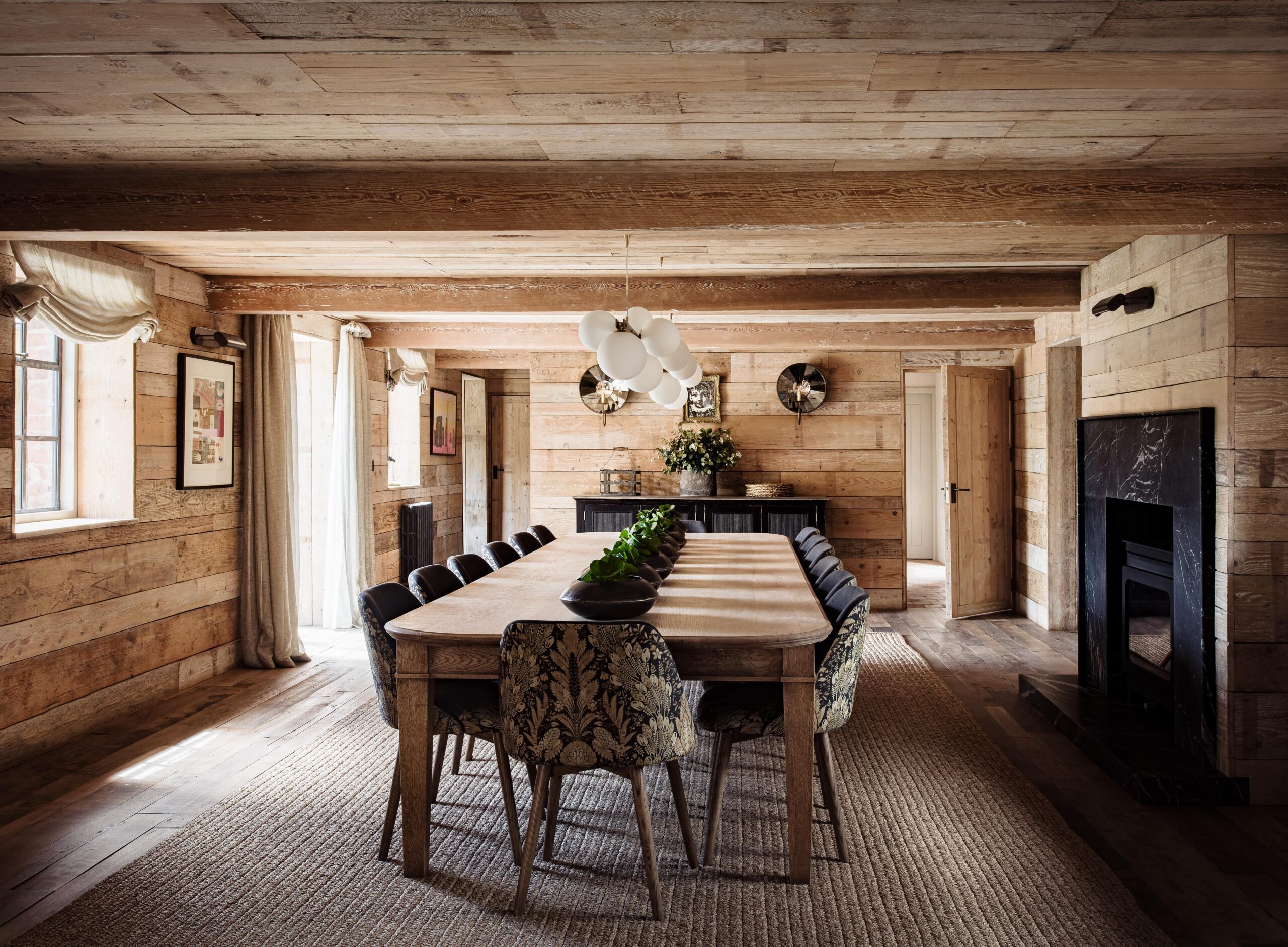
As the seasons change, our homes remain important havens.
We crave their shelter and warmth as the frosts and chilly rains arrive outside; they offer refuge from summer’s intense summer months and give our families beautiful places to gather for winter celebrations.
We want to make design choices that will grow and evolve over the changing seasons and years that follow, making wood flooring the perfect choice.
Now is the ideal time to look forward to the wood flooring design trends of 2023.
With a focus on sustainability, expert craftsmanship and long-lasting beauty, 2023 promises to be an exciting year.
Here are some emerging trends and those which we expect to see far more of as we head into 2023 and beyond.
1. Using bespoke patterns and colours
Gone are the days when flooring colour and pattern choices were limited to what was in stock.
By choosing an expert company to supply and install natural wood floors, bespoke designs can be created using intricate patterns, unique patinas and colours to match any request, creating a truly personalised and individual look for your space.
2. Creating cohesive spaces
Using a bespoke craftsperson for your project allows the same wood for flooring as for other accent pieces, complementing and drawing together the whole project.
With individually hand-crafted mouldings, stairs, kitchen countertops and doors, natural and long-lasting beauty can be brought to every aspect of your home.
3. Celebrating craftsmanship
2023 will see a reprisal of traditional, slow-production methods, which can be admired in every aspect of your flooring: from colour to finish to flow.
Choosing traditionally crafted floors, stairs and cabinetry for your space will sustain and celebrate the artisan producers and help your space stand out from those that use mass-produced, off-the-shelf fittings with a disposable feel.
Instead, carefully crafted, bespoke pieces will bring a depth of character and life into your home, which will last for generations.
4. Sustainability and Circular Economy
Using sustainable and up-cycled materials has never been more critical as we all try to preserve our Earth’s precious materials.
Reclaiming and expertly recrafting old and antique wood which would otherwise never be truly appreciated, is where we started, and it will always remain our passion.
Where new wood floor products are the best choice for a project, it will be increasingly important to choose companies with re-planting programmes.
5. Wellness and Biophilia
Wood is a living and breathing material.
Using wood throughout our homes can satisfy the innate biophilic tendency in humans to seek connections with nature.
In the same way that a walk in the woods is re-energising and grounding, wood flooring in our homes boosts our wellness and helps us to slow down, taking time to breathe more deeply.
6. Slow design
It takes an expert eye to see the treasure held within each piece of wood, and time is needed to reveal the magic within.
Each piece of wood being treated concerning uncovering the strength and beauty it holds is a slow process.
Since our inception, slow production and wellness have been our passions. In 2023, we expect more people to develop an understanding of and love for the benefits of wood flooring products which are designed and created slowly with love, care and attention to the minutest detail.
7. Specialist Installers
There is more awareness that choosing the right installer is as important as choosing the right flooring.
At The Reclaimed Flooring Company, many floors are finished once installed.
Now more than ever, there is increased demand for specialist installers who can work on your specific design brief.
We are proud to be one of only a tiny number of companies in the UK that offer this level of service.
Similarly, trending designs such as herringbone flooring, whether using new or old wood, need an expert eye in planning and an expert hand to lay to ensure the right aesthetic is achieved for your space.
8. Character Grading
Prime grading used to be the most popular. Still, more customers are now choosing character-graded planks, which will have more knots and traditional wooden characteristics like visual cracks, more texture, grain, and sapwood, offering a more “natural” face.
Combined with our bespoke colour services and expert installation, our wood’s deep patinas and glorious aesthetics will help create a feeling that your floor has always been part of your home.
9. Herringbone in Kitchens
As 2022 progresses, we are seeing increased demand for Herringbone floorings in Kitchens and Living Rooms and expect this trend to continue into 2023.
Our reclaimed, new and engineered herringbone blocks are hand-crafted in our Cheshire workshop by experts, always using slow design and slow production methods, which lead to the slow living we all crave in our homes.
10. Natural colours
It is no surprise that as we all embrace more sustainable ways of living, demand for natural colours with depth and varied patina is also increasing.
We want our spaces to feel as natural as possible, incorporating our natural biophilia into our homes.
Because of this, natural things aren’t just more aesthetically pleasing and better for us.
11. Proper maintenance
Nowadays, there is more awareness about after-care routines for wood floors, and we are delighted by this.
Proper aftercare adds more depth and colour variation to your floor and ensures its longevity.
The ageing of new wood floors can be helped with appropriate aftercare, including oils that enrich its patina and careful, expert sanding to ensure a smooth and hard-wearing surface.
A properly cared-for wood floor evolves with time, becoming a deeply ingrained part of what makes your home so unique.
13. Oak, oak and more oak
Unsurprisingly, oak remains the preferred species for wood flooring, and we believe it is simply the best option.
With its broad, long planks, rich, beautiful patina and the history that breaths out of each piece of expertly crafted wood, oak flooring is the natural choice for bringing warmth and luxury into your space.
As oak flooring is hard-wearing, it is perfect for high-traffic zones, and its colour can be adjusted for your space as it works excellently with hard wax oils.
14. Antique Wood Flooring
We are delighted that there is more awareness of Antique Wood and appreciation of the craft, age and provenance of antique and reclaimed wood flooring.
Although it is already an established trend, as we move into 2023, we expect this trend, which embraces all of the other anticipated design directions of the coming year, to gather more momentum.
Using this precious resource in your space encourages a sense of wellness and slow living while remaining a sound ecological and stunningly beautiful, highly versatile choice.
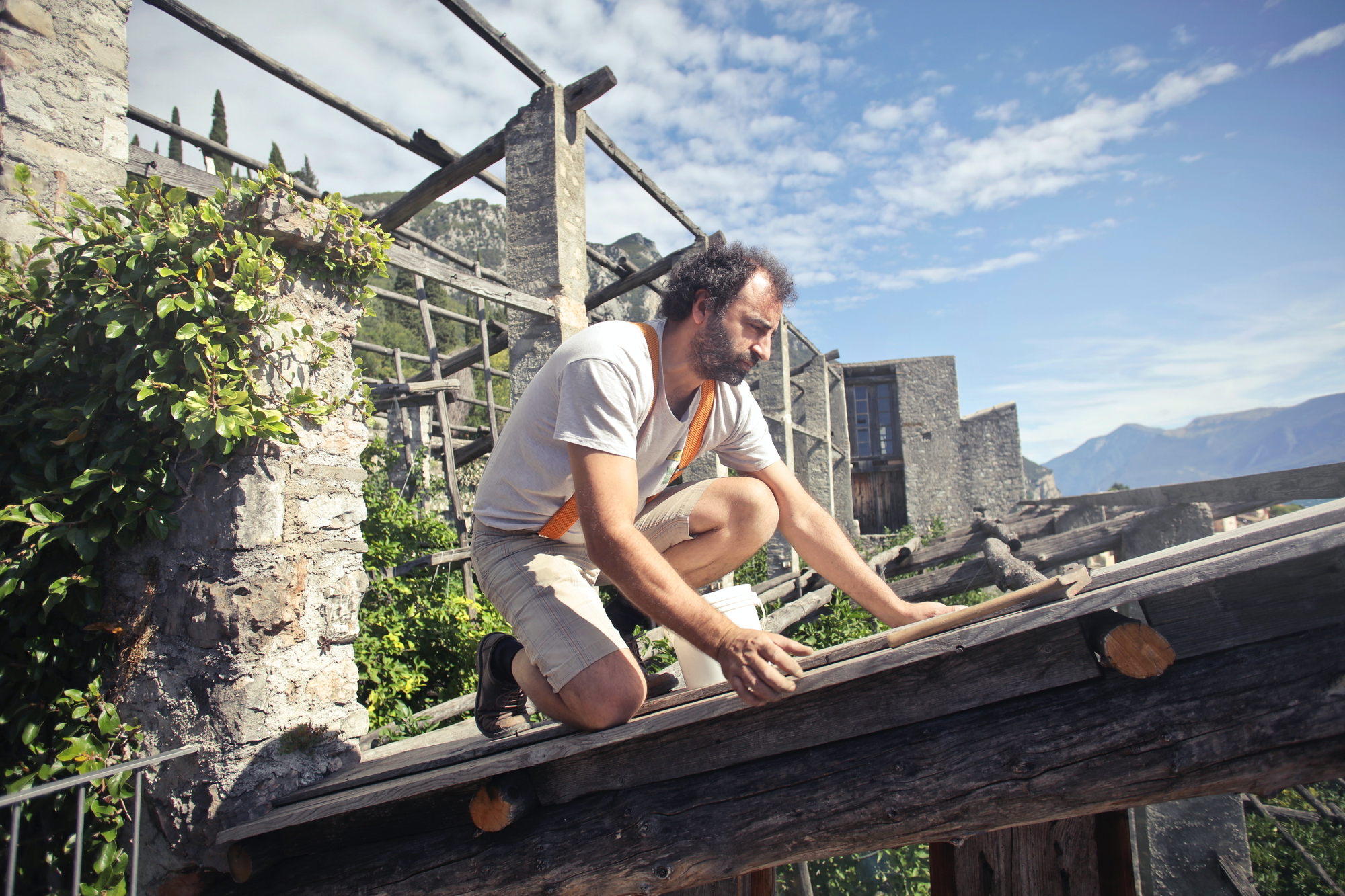
In this fast-paced world, so much can feel disposable and dispensable.
While it can be easy to understand the desire to make changes quickly, we believe in a different way of making things better, and it seems the rest of the world is catching on too.
Deconstruction, or unbuilding, is a new idea with old roots.
It involves the careful and intricate dismantling of old buildings and architectural projects, reclaiming, restoring and preserving valuable materials which would otherwise go to waste.
Unbuilding slowly
Deconstruction techniques preserve the precious materials found in buildings which no longer serve their purpose.
Unbuilding disregards the fast-paced and heavily polluting methods often used in the constant pursuit of building bigger and faster, instead choosing to carefully work through the old buildings for those rare hidden gems which can be reclaimed, reused and restored to their former beauty.
This aligns perfectly with our belief in a slower, calmer, more measured process.
A way which supports a slower way of living in spaces which encourage well-being.
Downsides of demolition
Because our island nation has a finite amount of space and ever-increasing demand for ‘more’, the properties that occupy premium land are often bulldozed or torn apart to make way for their successors.
It can heartbreaking to see buildings being demolished along with all of the history and stories they held, just to be rebuilt even bigger, ever more quickly, and with even less care a few months later.
Little attention is paid to the materials contained within and the pollution caused by these demolitions, as speed is valued over all else.
This perpetual cycle of demolition of buildings and adding of new materials is simply unsustainable, as is the carbon footprint which is created by the process.
It is not just the demolition itself which is unsustainable; the building of new properties creates demand for more and more new materials to be sourced, which will, in turn, be demolished.
The cycle continues.
There is more to consider.
Demolition increases air and noise pollution and can seriously affect the quality of life of residents in and around these projects.
A more caring approach
To prevent waste, collaborative design practices across Europe are investing time in exploring the life cycle of our material environment and salvaging and reusing materials.
Companies and collectives, including Enviromate, Opalis, Rotor and Materiuum, are dedicating time and skills to this delicate work that most companies are unwilling to do.
They are working to carefully remove and reclaim materials from architectural projects, taking them apart rather than demolishing them.
This process takes time, skill and patience, much like the processes we dedicate to our beautiful materials.
A new life for reclaimed materials
Demand for reclaimed materials is so high that sourced materials are often reserved even before the removal process has begun.
As we do at the Reclaimed Flooring Company, Roto and its subsidiary Rotor Deconstruction will give each intricate removal the time it needs, often revealing natural treasures.
Some of these treasures can be found listed on Opalis, another innovation of Rotor.
They have created an online map of the salvage industry which is helping to develop an industry-wide understanding of the reuse of specific materials, hopefully securing deconstruction’s place as a high-end, realistic alternative to demolition.
Rotor Deconstruction is a cooperative that organises the reuse of construction materials.
They dismantle, process, and trade salvaged building components.
Materiuum’s tagline, ‘For the continuum of materials’, speaks of the company’s core value, that preserving natural materials is critical.
Both companies invest time not only in the removal of materials but in studying and consulting on the increasing opportunities enabled by reclaiming and preserving materials.
We long to see a world where deconstructing is the norm rather than the exception, but until we do, we will keep doing what we do.
Carefully, lovingly and slowly restoring our earth’s precious materials, revealing the well-worn beauty that has developed in them over the years.
When treated with this much respect and skill, our reclaimed hardwood floors will continue to breathe new life and stories of their previous lives into stunning, sympathetically renovated homes.

Our interior design choices always say something about us.
Every choice we make in our homes speaks to the people we invite into our space about the things we care about.
Using antique flooring alongside natural materials whispers about our attention to detail.
Combining exquisite antique and reclaimed wood with stone, marble, or ceramics evokes feelings of calm, sophistication and synchronicity with the outside world.
These materials are timeless for a good reason; they are classy, beautiful and sophisticated.
Whatever design choices we make in our homes, antique wood and natural materials give a perfect starting point, whatever our style.
Antique wood breathes a sense of life into a space which cannot be replicated. The warmth and history of antique and reclaimed flooring add a deep sensibility to a space, evoking feelings of calm and well-being.
We are not the only ones who adore this aesthetic.
Here are some of our favourite designers who create spectacularly breathtaking visuals using blends of natural materials and antique wood flooring.
Axel Vervoordt
Author, artist and designer Axel Vervoodt lives and breathes aesthetics.
A far cry from the young influencers of our Instagram generation, this 75-year-old Belgian founded and runs Axel-vervoordt.com, a renowned art gallery, arts and antique trading organisation, with an interior design department for worldwide customers.
Vervoordt’s signature is deep, cool earth tones, simple shapes, and natural light used to create spaces which feel so pure they can almost be heard breathing.
Axel’s deep love for the wabi-sabi is evident in his love of reclaimed materials and his philosophy of embracing the simplicity and serenity which comes with his materials, having been allowed the time to age over hundreds of years.
Because of his carefully selected products, a need for slow living unfurls as soon as you step into his spaces, making you breathe deeper and completely unwind.
Rose Uniacke
Victoria Beckham’s interior designer, Rose Uniacke, runs a contemporary, luxury interior design company in the UK.
Uniacke’s blend of rich earth tones, geometric shapes and maximalist furnishing of spaces create a welcoming and indulgent rooms.
The generous proportions of the pieces Uniacke selects are complemented wonderfully by light walls, antique wood floors and carefully curated, smooth ceramics.
Drapery is used extravagantly and is highlighted by deep, soft sofas piled with plush cushions.
Rose Iniake’s use of softly textured natural walls, flooring from The Reclaimed Flooring Company, and sumptuous fabrics makes the temptation to run a hand across every surface almost impossible to resist.
Linda Boronkay
Linda Boronkay runs her self-named design company, specialising in high-end interior architectural design.
Linda Boronkay uses antique wood floors as the grounding for her decadent styling.
Pieces are intricate, heavily patterned and beautifully crafted.
These pieces are used generously in rooms with natural coloured but often deeply textured walls.
Wall spaces are broken up by colossal furniture made from wood.
The tones from her wooden floors and furniture are picked up in the richness of the wall coverings and are almost always accented by a touch of greenery.
We had the pleasure of supplying our Antique French Oak for her Soho House Greek Street project.
Emma Kirby
Following in the footsteps of her property-developing mother, Emma Kirby design helps clients with every aspect of interior design.
With work entirely built around natural materials, Kirby doesn’t only use Reclaimed Flooring Company’s wood floors but also walls and ceilings featuring this gorgeous, natural material.
A feeling of wellness and calm is impossible to avoid when surrounded by such an abundance of nature.
Making features of exposed wooden structures, beams, and rustic furniture is central to her ethos.
Her blend of traditional and contemporary pieces gives a timelessly comforting feel to the spaces she creates.
Murude Katipoglu
The refined and eclectic spaces designed at Murude Katipoglu’s studio, Design Stories, are stylish, serene and luxurious.
Spaces designed by Katipoglu’s company are clean and spacious, with pale walls and rich antique wood floors to provide a subtle nod to the luxury her clients expect.
The finishes are complemented perfectly by pieces from Design Stories’s collection.
In deep natural raw materials, accessories and occasional pieces are handmade and available in marble, ceramic and raw-edged wood.
Conclusion
The works of these wonderfully talented designers show how the combination of natural materials and antique wooden floors can work with innumerable stylistic choices.
Whatever your preferred style is, antique wood is so versatile, timeless and beautiful that it provides a perfect backdrop to your home.
An expertly fitted reclaimed wood floor will add a warmly luxurious finish to any space.

There is no question that English oak is one of the most appealing hardwood flooring options we can choose from.
Used for centuries in the most opulent and extravagant homes, English oak is in huge demand.
The warm, comforting smell, beautifully distinctive natural grain pattern, and incredible durability of its trademark long wide planks make it the perfect addition to add a touch of luxury to any home.
English oak trees’ slow growth and long life make their wood rich in character and texture.
With the wood’s signature scent, uniform grain, and long straight trunks, English oak is in high demand, but it takes a long time for the trees to reach maturity.
Slow, natural growth creates breathtaking beauty: our wood has rich, deep patina and wide, long planks. Few expert craftspeople use this gorgeous product, contributing to English oak’s desirability as wood flooring. We are proud to be one of a tiny handful of companies with the time and expertise to masterfully source and fit this rare and sought-after English oak flooring.
Where does English oak come from?
English oak is native only to England and has been wild-grown over centuries. Because England is so small, English oak is much rarer than its European counterpart and, therefore, harder to source.
Its rarity, the scarcity of experts in using this exceptional product and the high demand for the product from other industries make the use of English oak as wood flooring even rarer.
Why is English oak so desirable?
The wood from English oak trees is straight, strong and beautiful, making it a desirable product for use in wood flooring.
The straight, broad trunks are ideally shaped for use in sawmills and can produce wonderfully wide long planks.
Along with its gloriously deep patina, the stability and flexibility of English oak make it a gorgeous product to use in the most beautiful homes.
What is English oak used for?
Because of English oak’s long straight trunks and its exceptional durability, it tolerates weathering, resanding and refinishing, making it the perfect choice for the most elegant dining spaces, members’ clubs and the most elegant homes and sympathetic renovations.
The qualities that make English oak such a luxurious flooring choice are its distinctively long, broad planks, a look that simply cannot be matched by other products.
A tribute to the strength and beauty of English oak is its use in producing the highest quality outdoor furniture, frames for houses and outdoor buildings such as summer houses.
Using English oak as flooring is the epitome of understated elegance.
Why is English oak so rare as flooring?
English oak trees are incredibly long-living, and it takes many decades for the trees to reach maturity.
This long life secures its position as one of the most robust oaks. Its dense grain and deep patina take time to develop, and we believe in waiting for only products of the highest quality.
As children, we are taught that we can age a tree by counting its rings, and it’s this exact process that helps us understand why mature English oak is so rare to find in use as wood flooring.
Sapwood and heartwood
Living trees have several layers of wood beneath their trunks.
The two layers that help us understand the English oak’s rarity are sapwood and heartwood.
Sapwood is the youngest part of the wood, the part of the tree that is living and growing. Sapwood is the part of the trunk closest to the bark, and the English oak is typically 25 rings deep.
Moving inwards from the sapwood, we find the heartwood of the oak. This heartwood has increased tannins, which make the English oak’s inner, no longer living rings so strong. These tannins also give the wood of the English oak its distinctive warm, rich colour.
Why growing oak is a slow process
Growing English oak for long enough to produce a heartwood thick enough for use in flooring is not a process that can be hurried.
It is the long life of English oak trees that makes the process of growing wood for use in flooring so slow.
Within the 25 rings of sapwood, we find between 5 and 50 rings of outer heartwood before reaching the inner heartwood, which can easily be over 100 rings deep.
It is this depth which creates the stunning width of English oak floorboards.
Considering that these trees, which are only grown in England, are up to 200 years old, we can understand why using English oak as wood flooring is so rare.
Few sellers and craftspeople are willing or able to dedicate the time needed to deal with this quality product, choosing instead more commercial, fast-grown trees, which leads to a compromise in density and, therefore, quality.

Rose Uniacke is one of 2019’s top 100 Designers and Architects in the world according to Architectural Digest (AD), while the Sunday Times refer to her as “queen of the serene.” No one could ever dispute the fact that Rose Uniacke is a celebrated member of London’s design royalty; such is her high profile. It was Uniacke, after all, who was chosen to design ‘Beckingham Palace’ in London’s Holland Park when the celebrity couple and their four kids moved to an English townhouse a couple of years ago).
Praised by AD for her “leanly furnished, spirit-nourishing spaces [that] typically feature a compelling mix of unfinished floorboards, pale hand-plastered walls, vintage Scandinavian furniture, and a scattering of evocative antiques”, Uniacke’s ‘go to’ materials are undisputedly reclaimed flooring and antiques.
This made her a natural fit for the design of the new Jo Malone headquarters in Central London, where the brief was to create “a fresh, light, airy interior, both tranquil and uplifting.” We reckon she’s certainly achieved that here:
Having in the past studied furniture restoration, gilding and painting before becoming interested in antiques and working as a dealer, it was clear that interior design was always going to be the next choice for the ambitious and talented Rose. Today, as a result of her past, you will find her interiors beautifully consist of modern and contemporary themes aided by fine furniture and classic antiques of yesteryear (or rather ‘last century’).
Her large corner design studio and showroom in Pimlico is just a stroll away from the V & A. As you would expect it boasts a clean uncluttered look with tall windows, white walls and bare untreated floorboards. It comes across as soothing, airy and calm. There the public can browse and purchase exquisite home accessories – both modern and antique – including stunning, high-quality fabrics.
And indeed in 2013 Uniacke was bestowed with the Andrew Martin Interior Designer of the Year Award (a celebratory occasion often referred to as the ‘Oscars of the interior design world).
Martin himself described the designer as a “remarkable talent” Her interiors, he added, “hummed with atmosphere with every corner an essay in balance, restraint and exquisite quality.”
The following are some of Uniacke’s past stunning interiors. In them you see her love for reclaimed wooden floors and which. Alongside white walls, she uses as a stunning neutral base on which to create her opulent rooms and transformative décor:
The arches, grand stairway and reclaimed boards of the following image give a classic Georgian period feel to this beautifully soothing, neutral room:
Neutral reclaimed flooring, white painted walls and antique panelling all features beautifully alongside a mid-century desk and chairs in the following two rooms. The plant adds some subtle colour:
The dark wood panelled flooring and dark artwork gives an elegant feel to this room, contrasting with the neutral décor. Again Uniacke has added an element of living greenery with the pot plant:
For more interiors, tips and ideas on using reclaimed flooring in your interiors project then take a look at our Reclaimed Flooring Company website today.

Thanks partly to the growing interest in contemporary, transitional and mid-century modern styles, one particular type of classic custom flooring have expanded—herringbone parquet.
As the name suggests, herringbone is a flooring type that resembles a herring’s fishbone.
The style of flooring is achieved by weaving smaller rectangular blocks in a repeated zig-zag pattern to create a uniform and instantly striking mosaic design.
The intricate lines of this stunning pattern introduce symmetry and balance while evoking an air of elegance and grandiosity in any interior space.
While the upfront costs are expensive, the design of a herringbone floor will endure throughout the years.
Is Herringbone Floor Out of Style?
Herringbone wood flooring has been around for centuries, and its popularity shows no signs of slowing, making it a brilliant choice for residential, commercial and hospitality floor covering.
The earliest examples in a flooring context can be traced back to upscaled settings such as classical churches, stately homes and grand museums and galleries.
The authentic, timeless appeal of herringbone flooring plays a magnificent role in adding a feeling of luxury and refinement to today’s modern design without overwhelming or taking away from other elements around it.
Why Choose Herringbone Flooring?
Laying wood parquet flooring demands a bit of work and craftsmanship, each piece lending itself distinctively to a space.
Care and precision are of utmost importance when planning your herringbone floor to achieve a refined finish.
Thanks to the modern “click” system that doesn’t require any glue or adhesive, the installation has become relatively straightforward and more convenient.
If you genuinely want to set your interior space apart, below are just a few reasons to opt for this timeless wood flooring style.
1. The enduring beauty of herringbone
The sophisticated appeal and textural interest of herringbone wood flooring blend seamlessly with both classic and modern spaces.
Many often see its strong connotation of historical design as the height of understated luxury, as it was initially installed in notable buildings.
Herringbone parquet flooring is a fantastic opportunity to introduce a distinct style statement that isn’t easily achievable with other types of floor covering.
Because it complements interior themes steeped in history and sits nicely alongside current influences, its inherently timeless nature is a flooring choice that will stand the test of time even as trends change.
Does herringbone flooring make a room look smaller?
Not at all… herringbone flooring is what smaller or narrower spaces need.
Because the eye is drawn to the zig-zag movement’s uniformity, this flooring style is a fantastic space enhancer as it makes smaller, darker rooms seem lighter, brighter and, more importantly, more prominent.
Similarly, the captivating beauty of this floor pattern also unfolds in large rooms.
For instance, they look equally fabulous in a large foyer that leads into a great room—allowing you to take in their striking allure as soon as you step in.
The appeal of herringbone flooring is that it doesn’t have to cover the entire floor.
If it appears overly busy, you can place it in the centre of a big room or accentuate the authenticity of a small area like an entryway.
2. A host of wood colours and finishes
Herringbone wood flooring can be installed in several different colours and finishes, bringing out its intricate pattern’s beauty.
The finish of your flooring can also be made more or less apparent depending on how it is installed.
Lighter-toned wood with minimal graining can be used to create a more natural appearance.
Choose a mid-toned wood with a lot of character that will show through once the floor has been laid if you desire a bolder, more statement-making appearance.
3. Long-lasting, durable and easy to care
Having your wood boards in a herringbone pattern is exceptionally long-lasting.
A high-quality herringbone wood floor that has been appropriately installed feels more stable and, with proper care, can last for decades.
Moreover, having robust floors that are forever in style assures high resale value.
Herringbone parquet flooring maintenance doesn’t have to be expensive and is something you can manage on your own to ensure the floors last as long as possible.
Use circular motions to buff high-quality wood oil into the grain.
For high-traffic areas, this can be done once every six months.
4. Great flexibility in design options
Herringbone parquet flooring offers many design options, each providing a distinctive look that quickly finds its place in various interior aesthetics.
While familiar with traditional solid wood planks, modern advances have enabled this particular flooring type’s timeless beauty, elegance, and warmth with the added benefits of engineered wood boards.
Solid wood floors in a herringbone pattern can be sanded and refined numerous times, while engineered boards offer a more robust structure with an increased ability to withstand temperature changes.
Conclusion
Renowned for strength and durability, herringbone wood flooring offers enduring beauty and a robust design statement that makes it ideal for almost any room.
The flooring’s distinguished pattern is a terrific space enhancer and can be customised to complement every type of taste and personality.
Used in 16th-century buildings to add interesting symmetrical patterns, this timeless finish has fallen back in favour today.
It is one of the most recognised parquet floorings that lends itself effortlessly to modern residential and commercial spaces across the UK and many other parts of the world.


